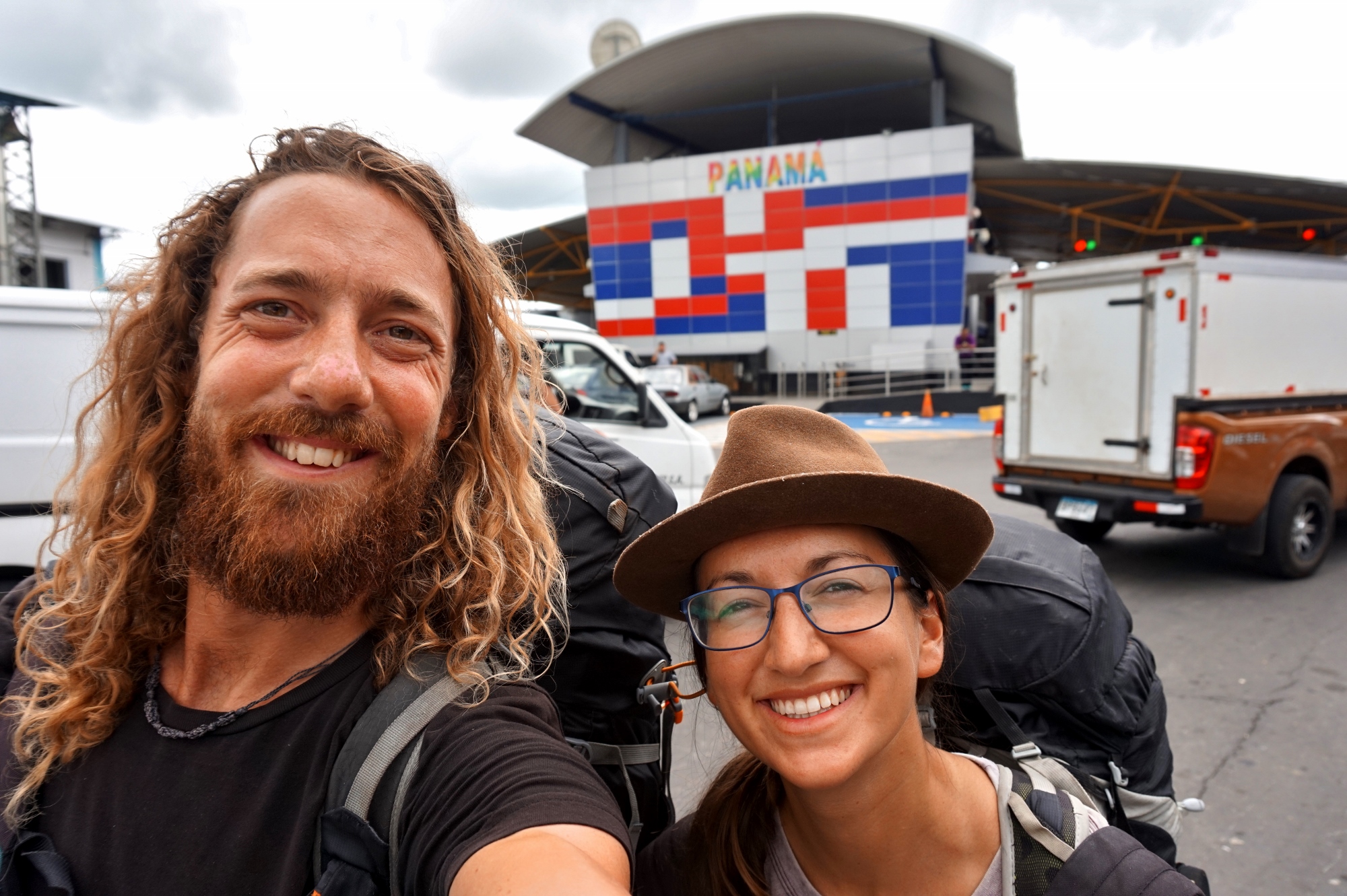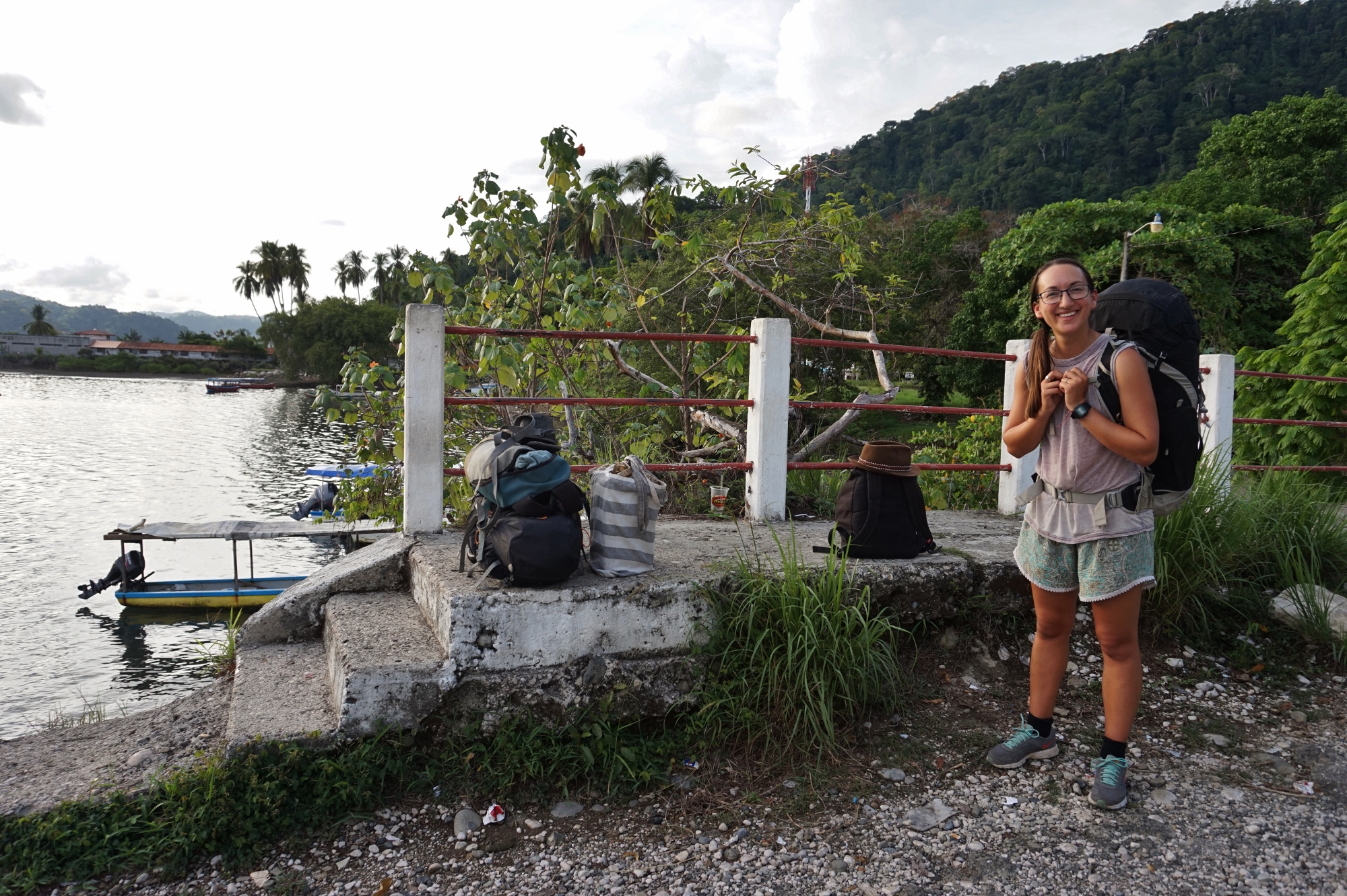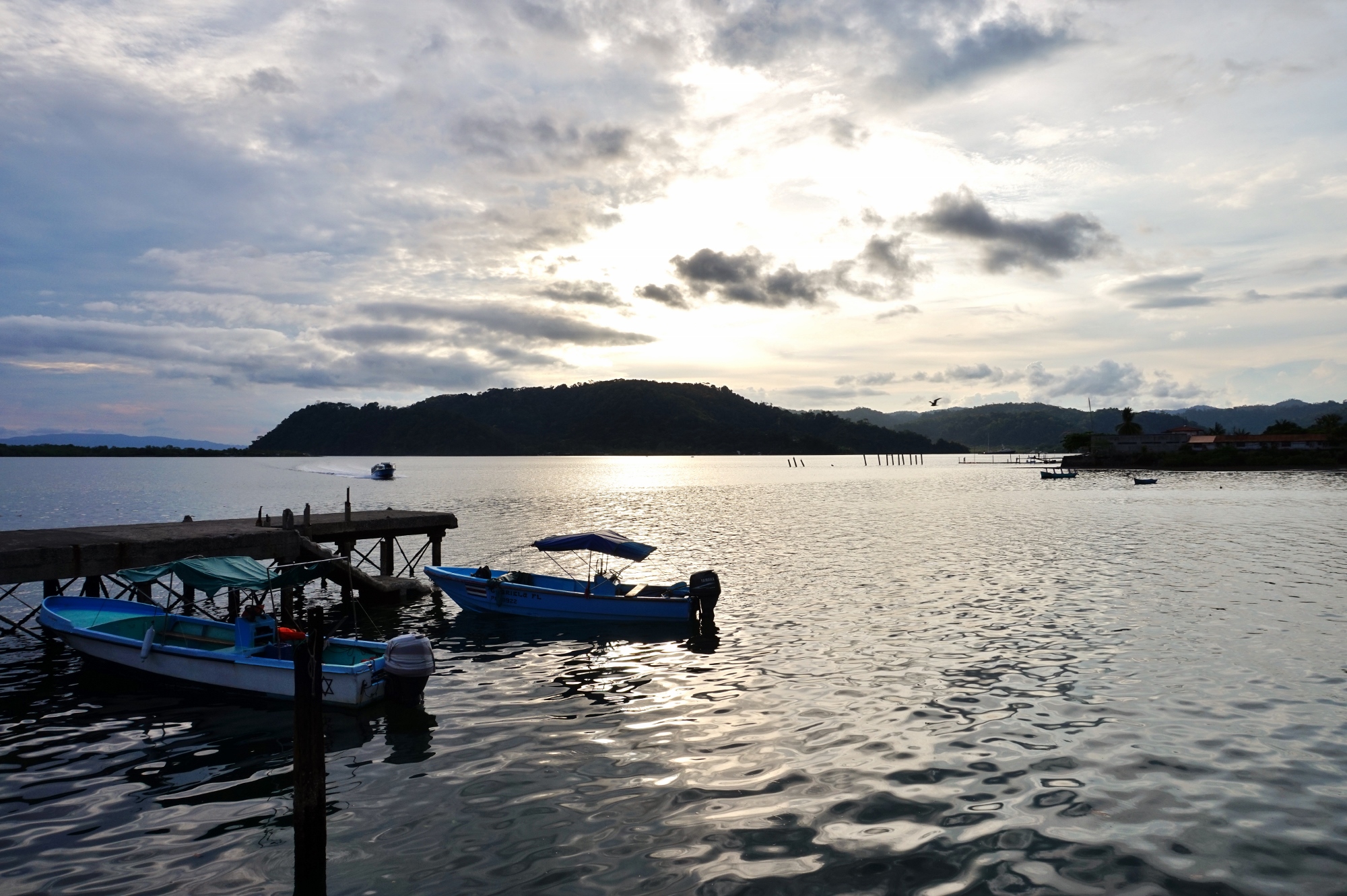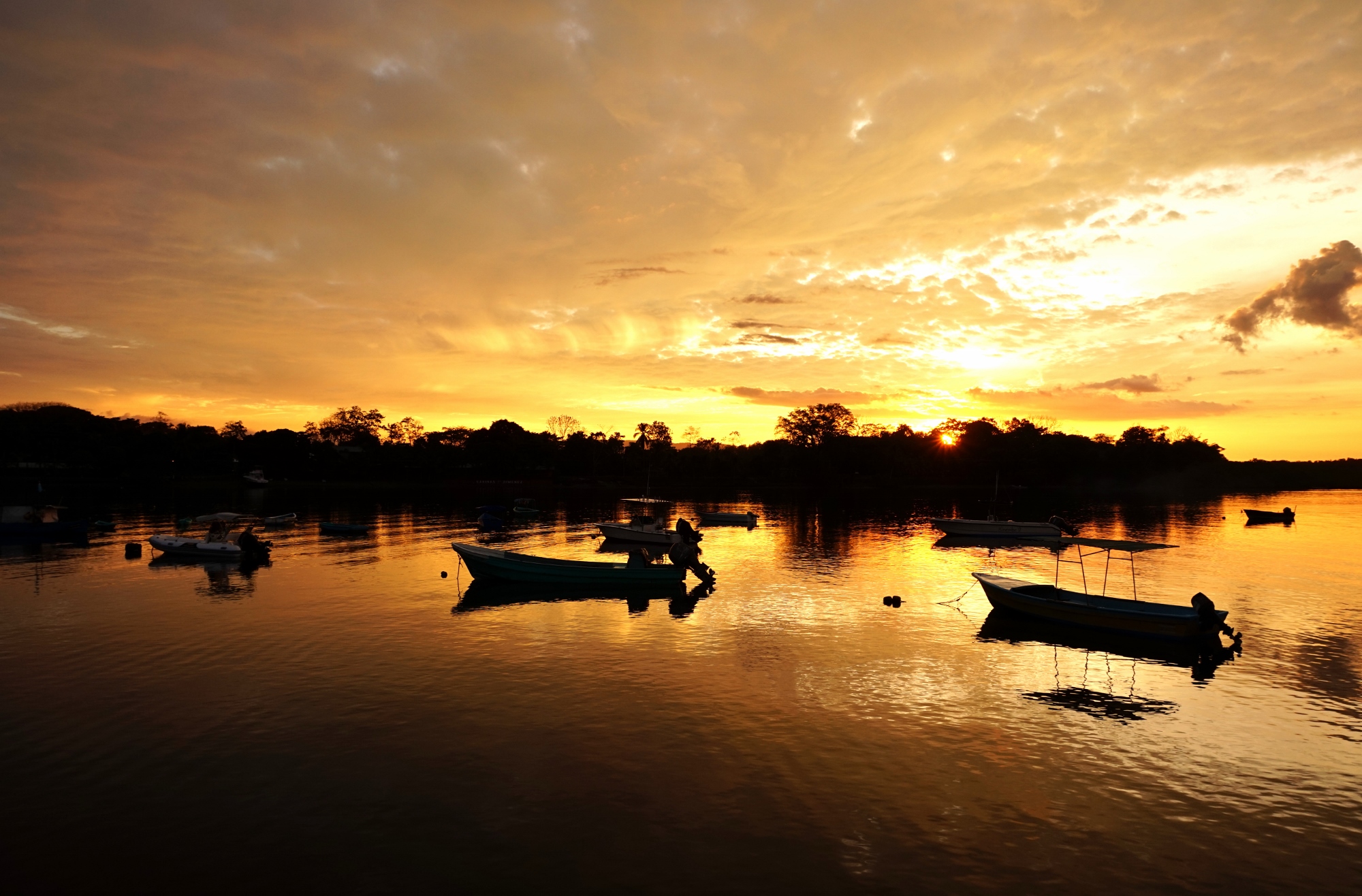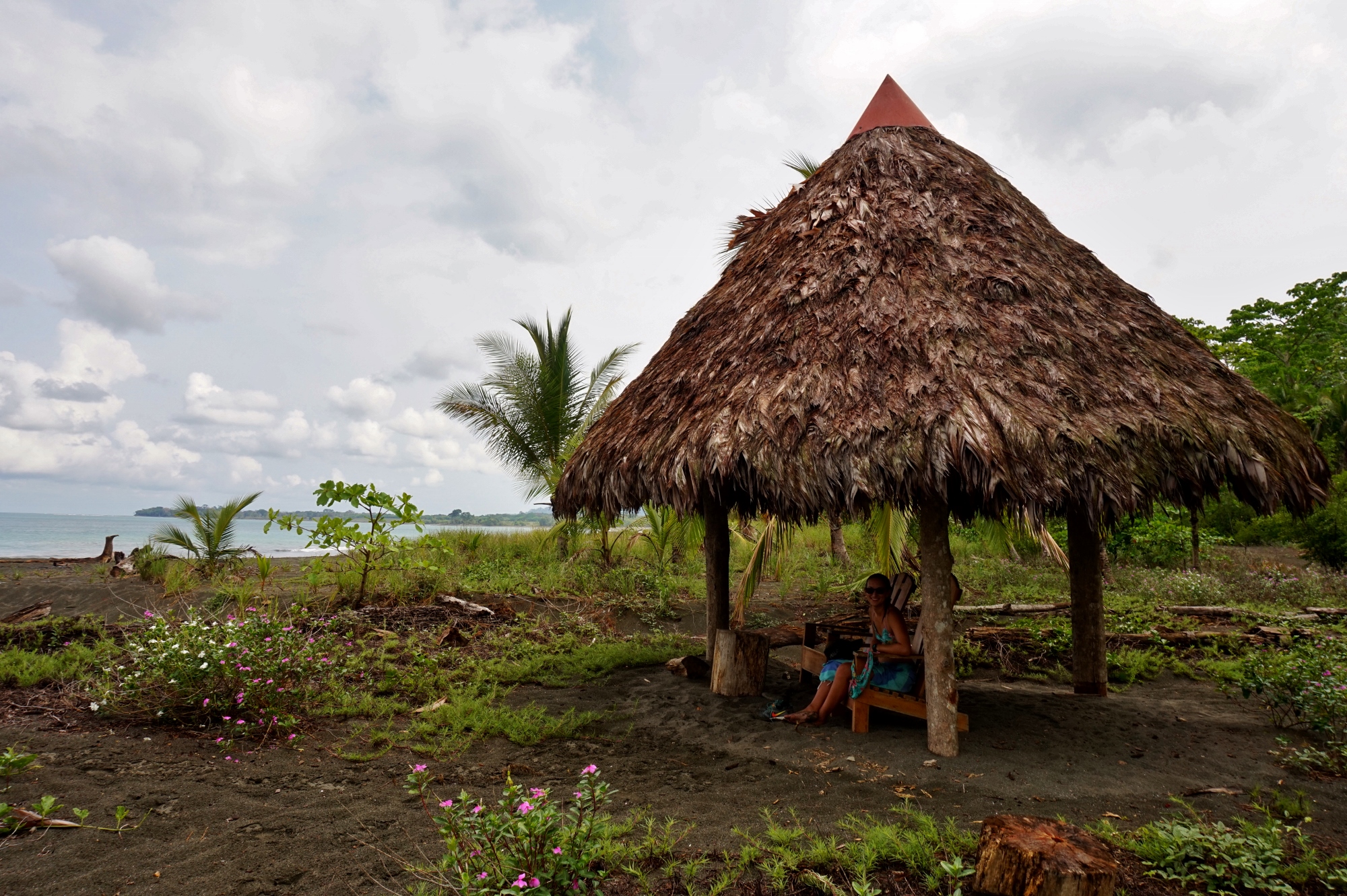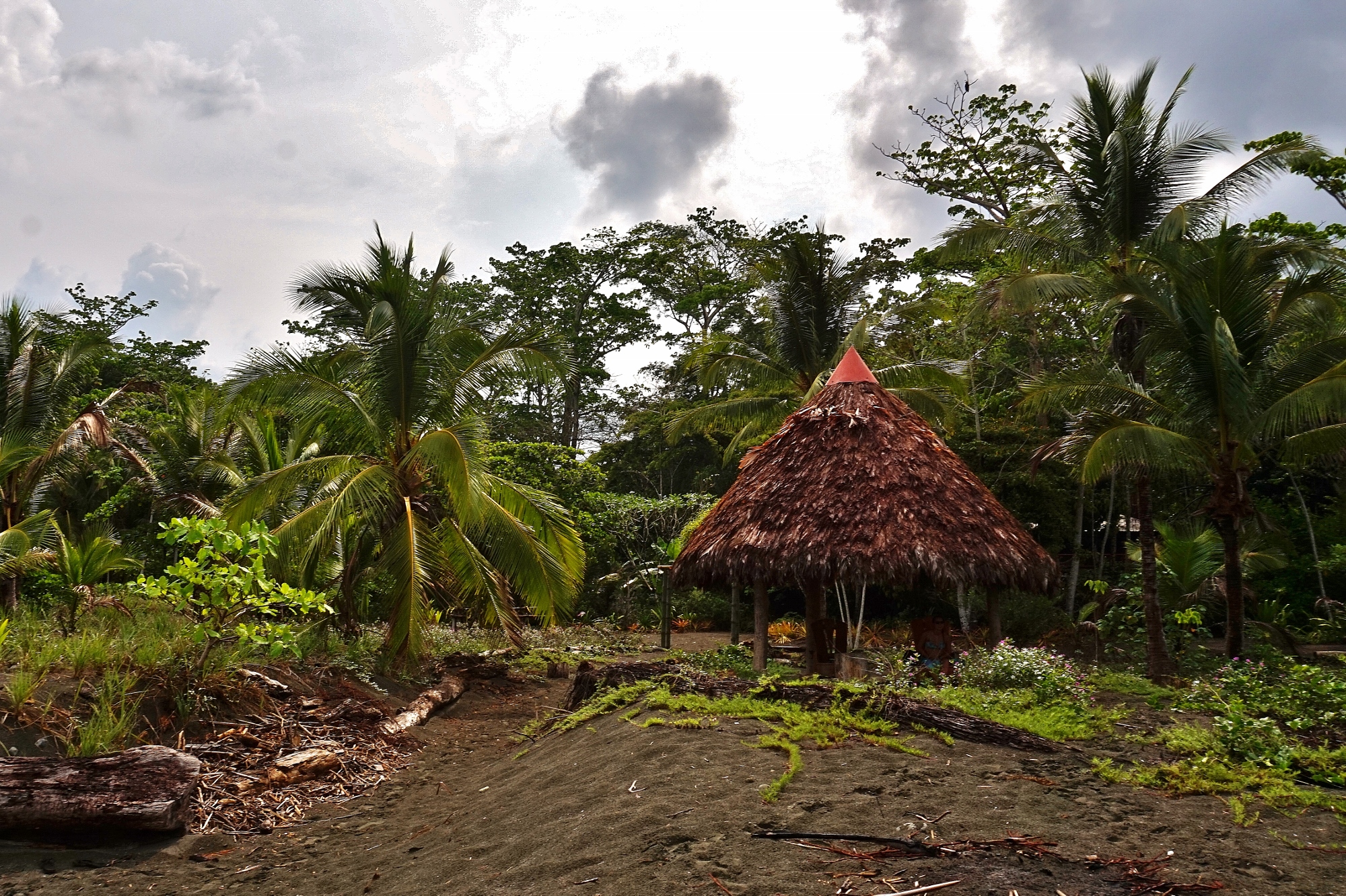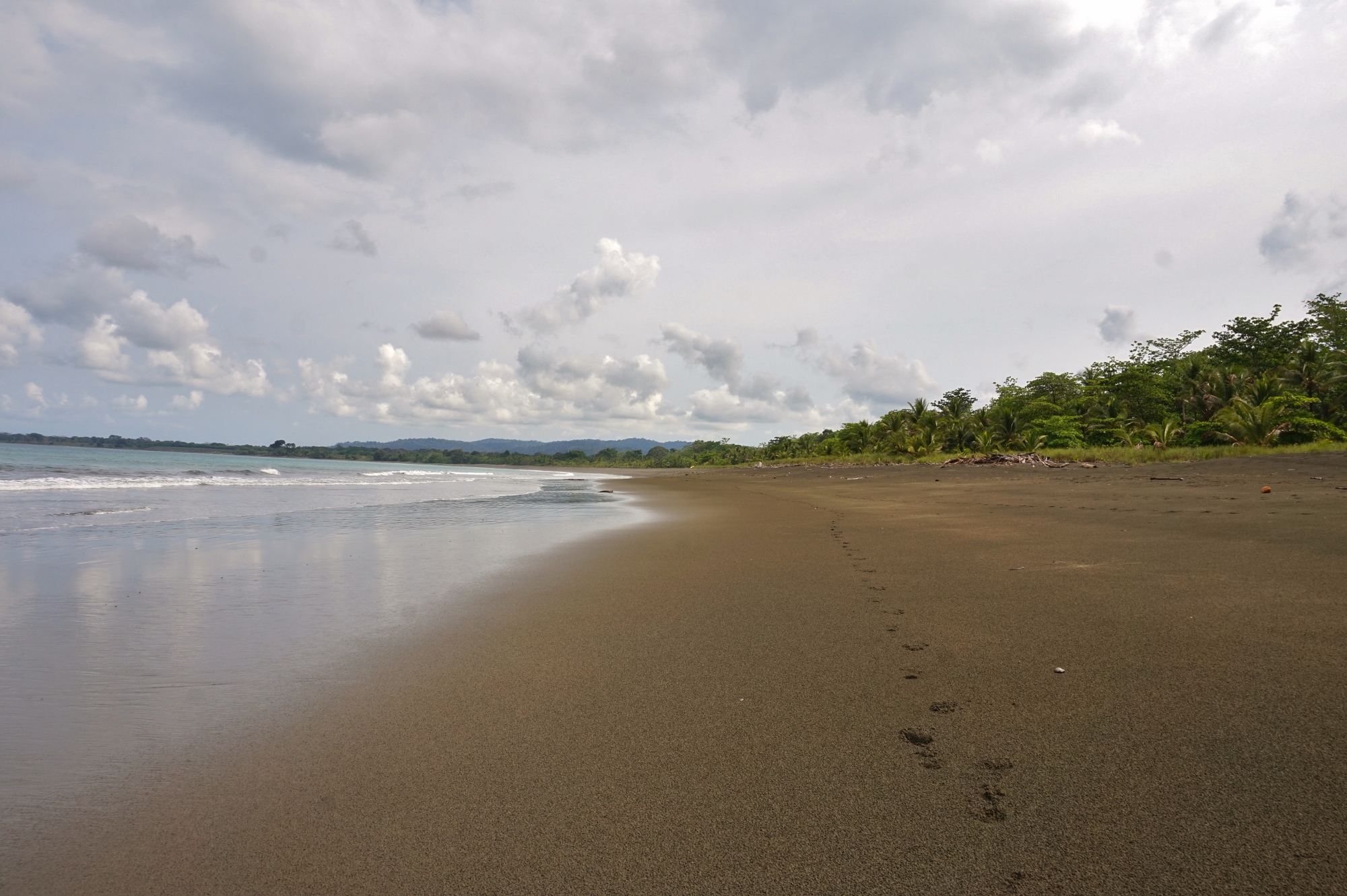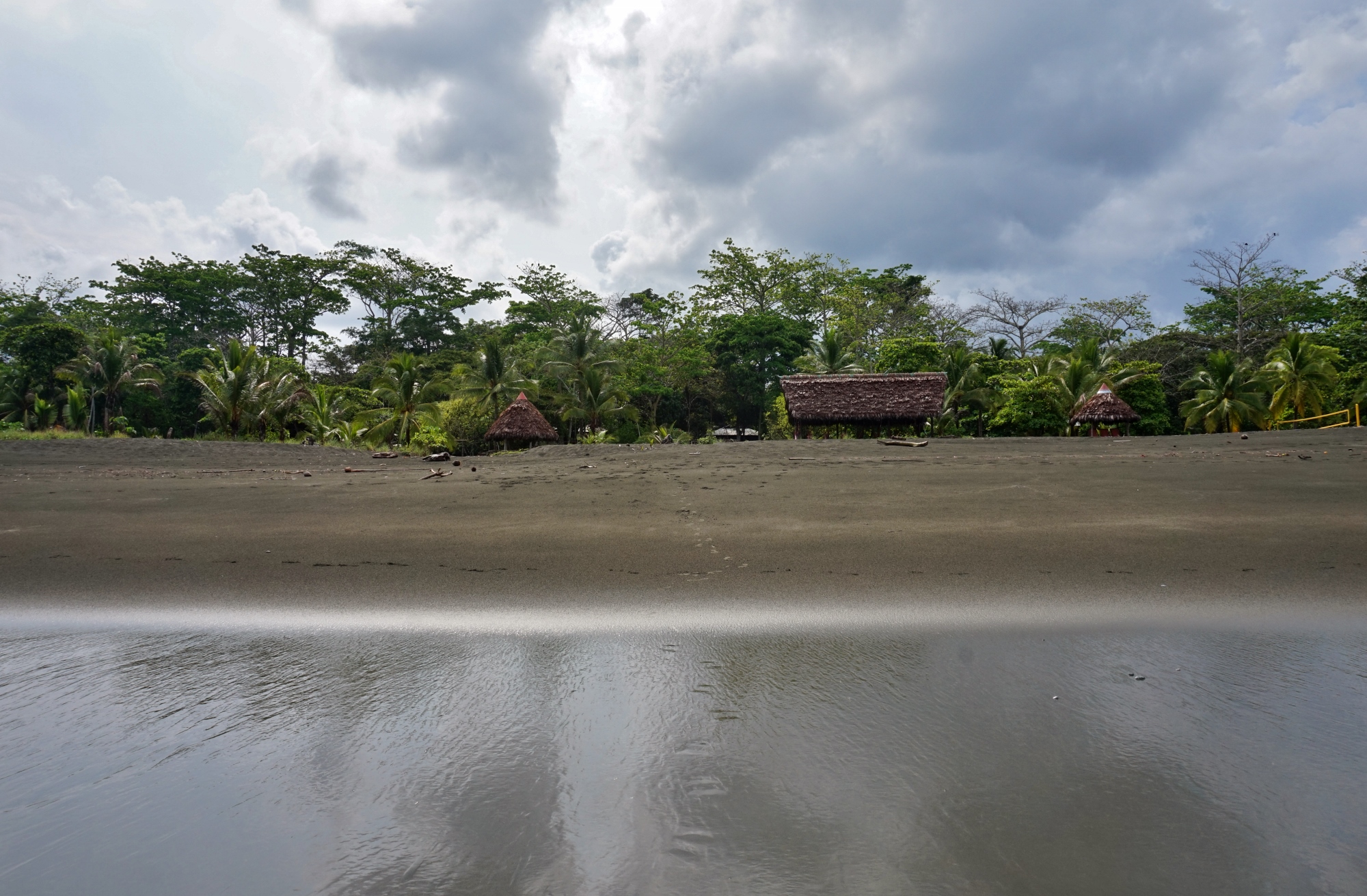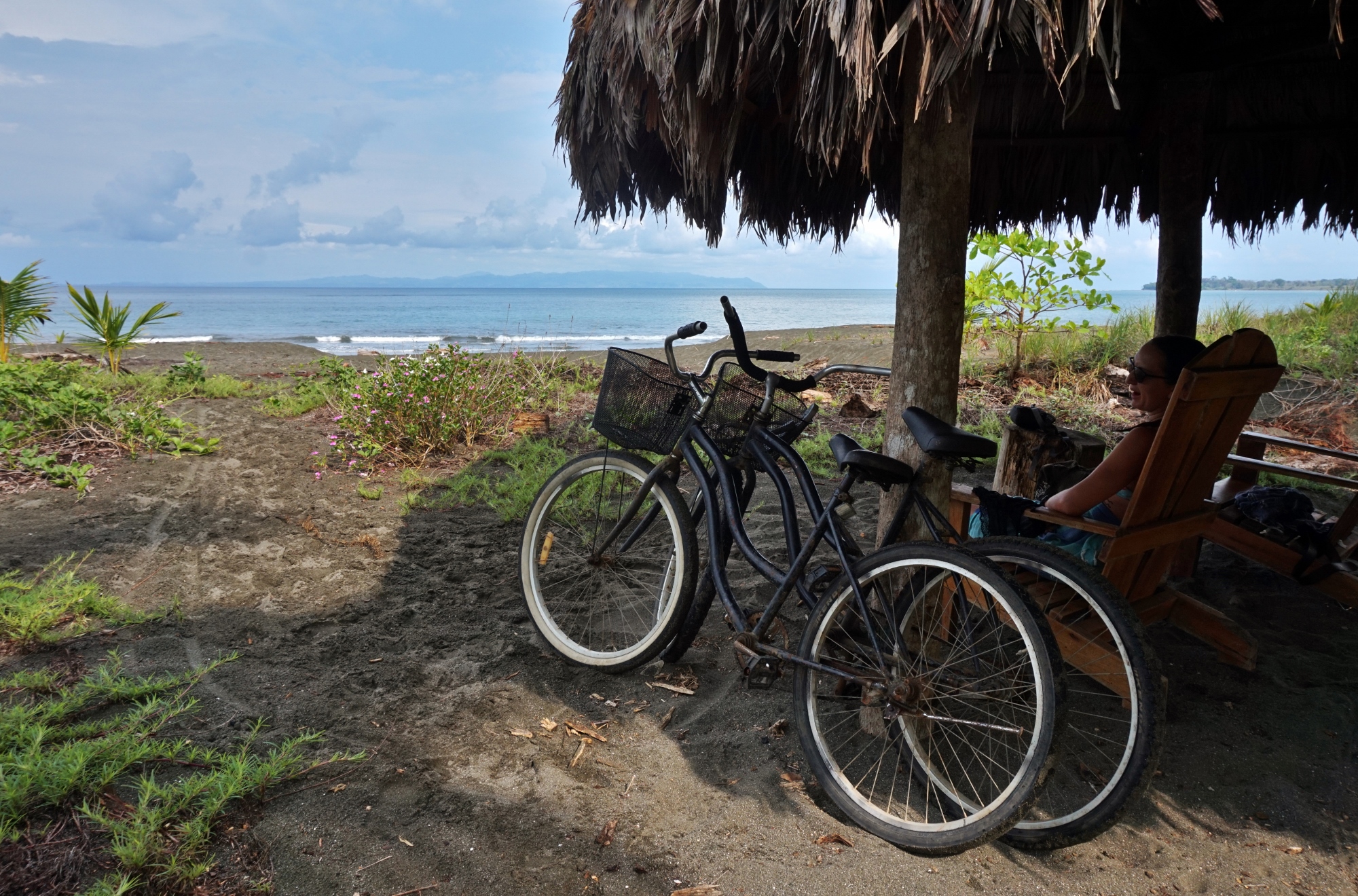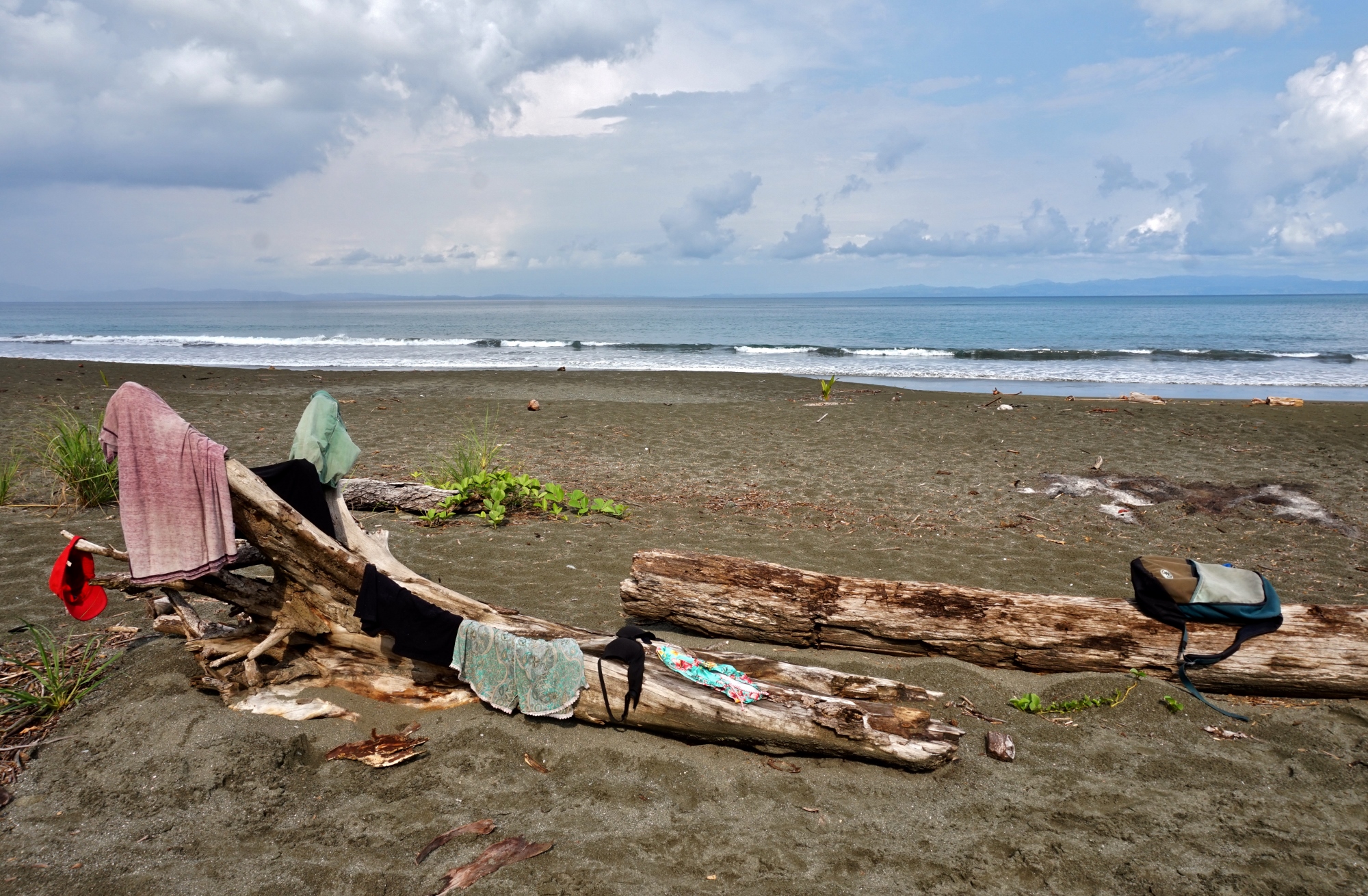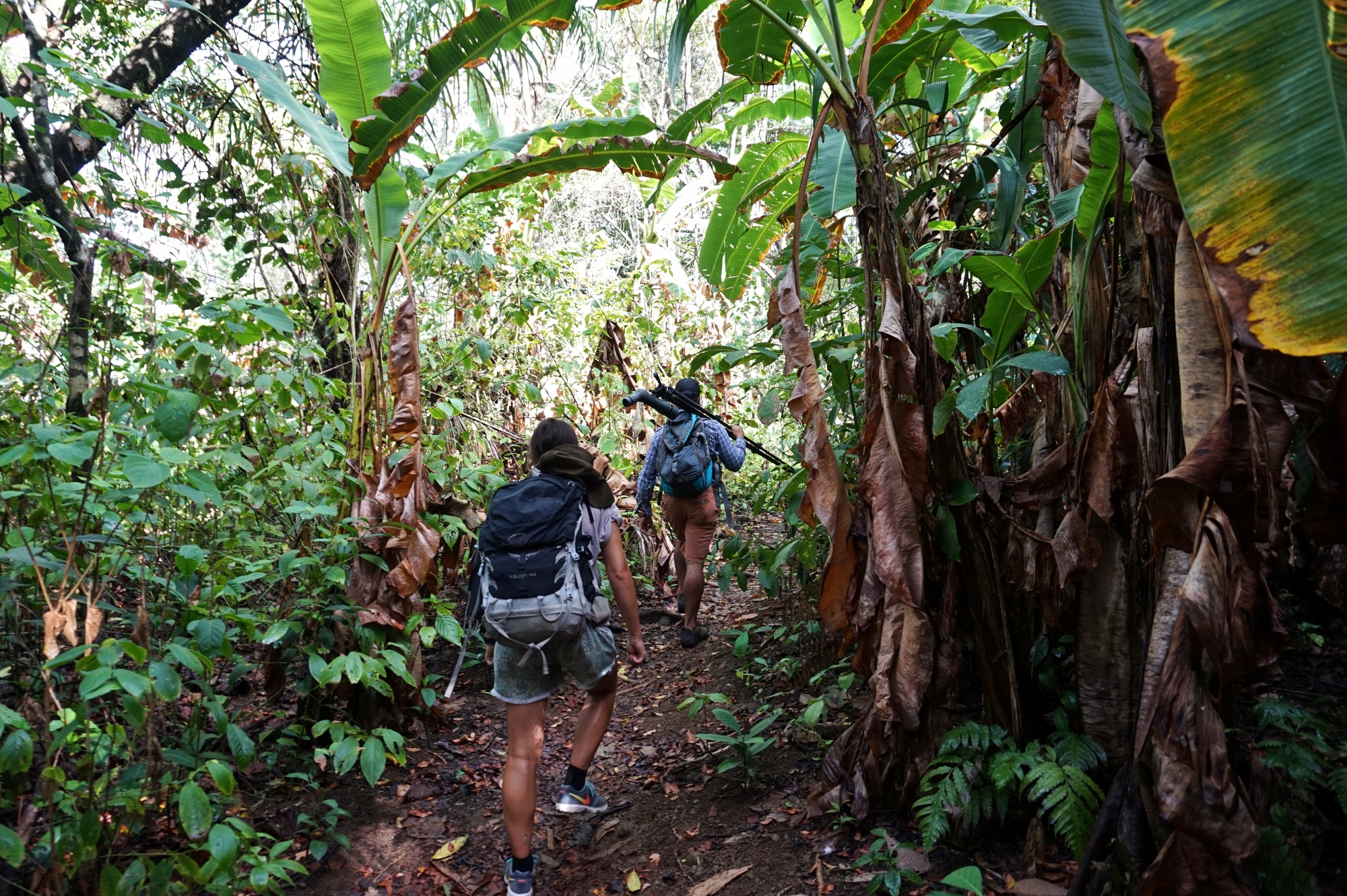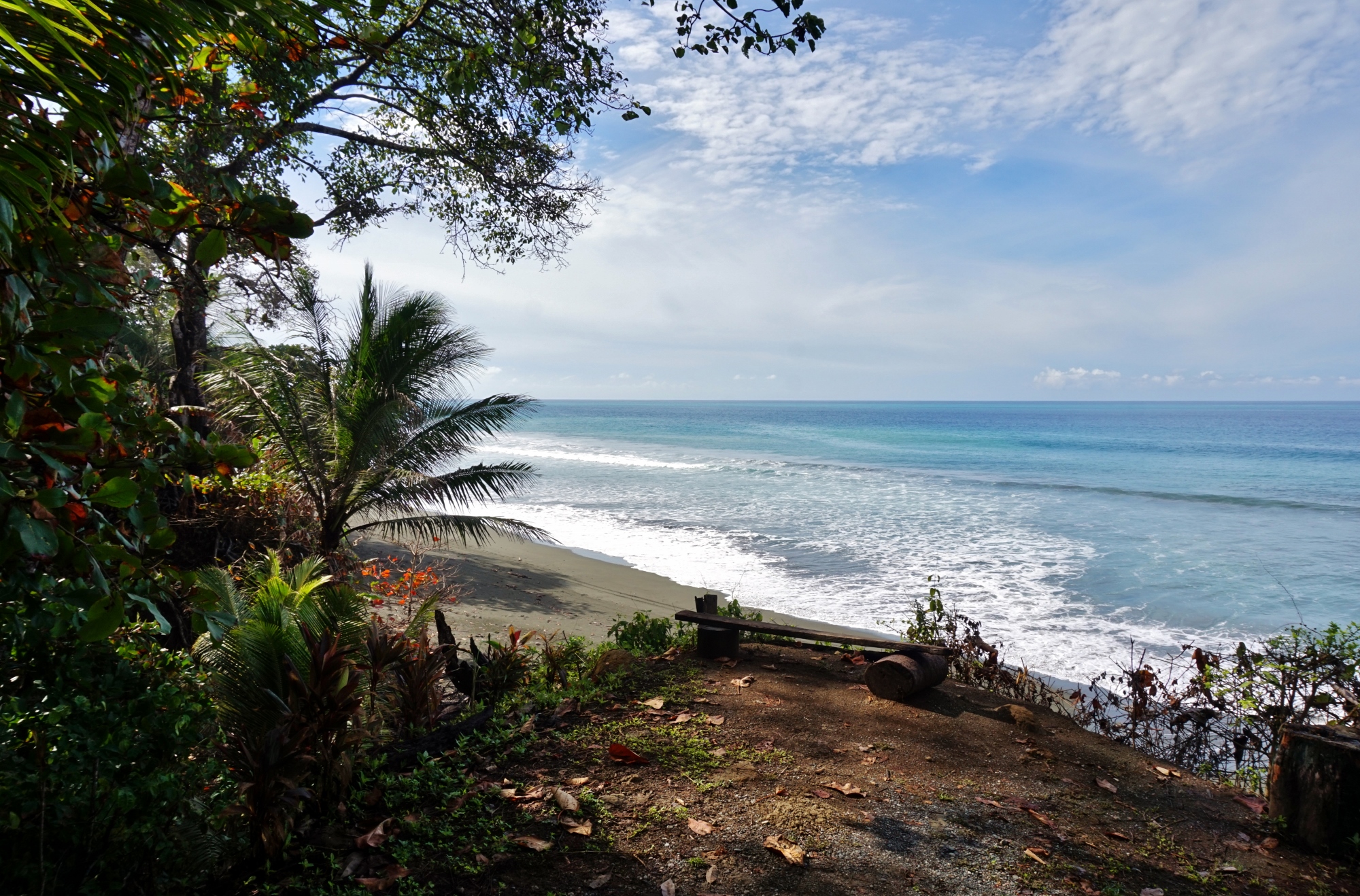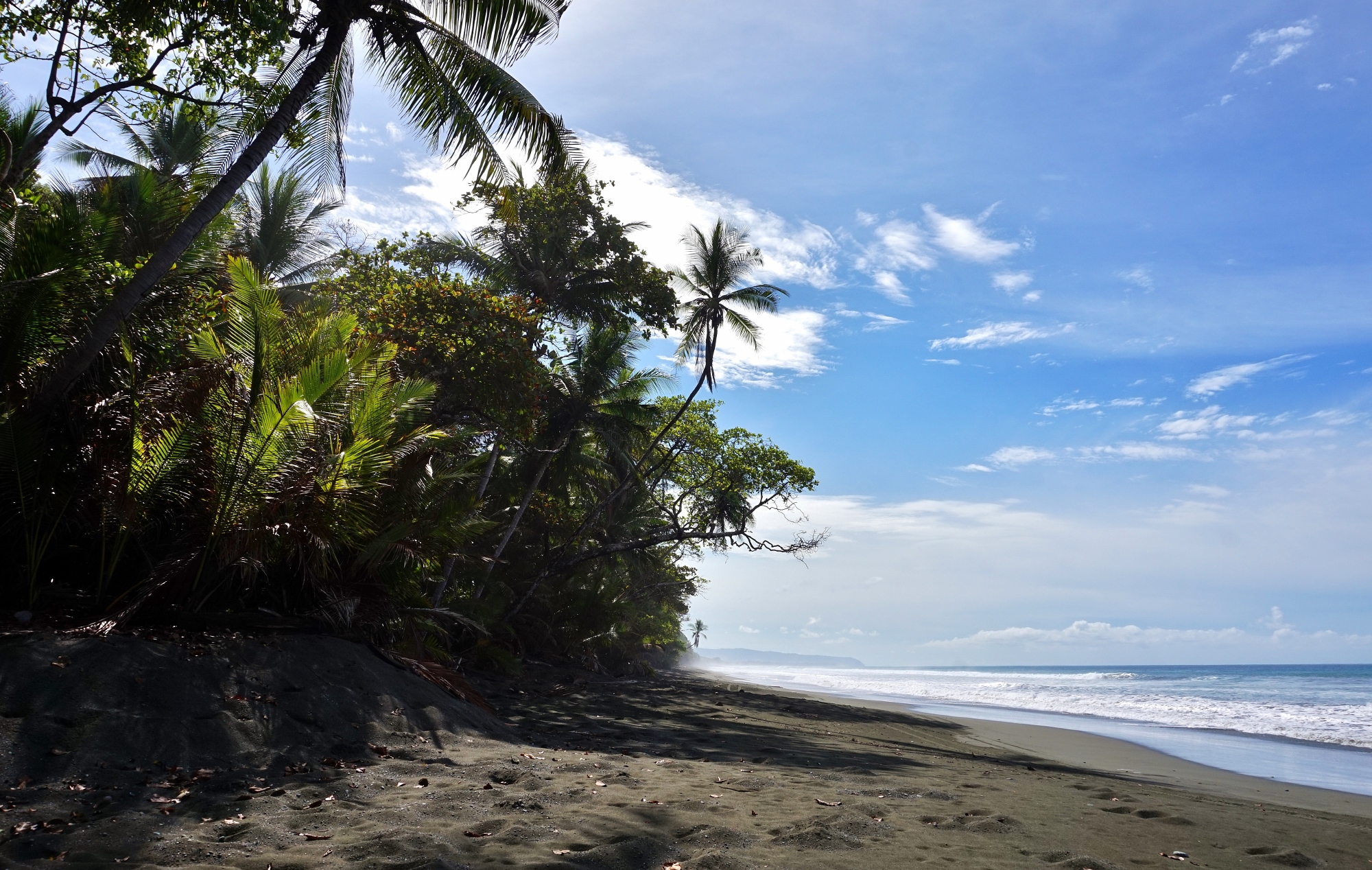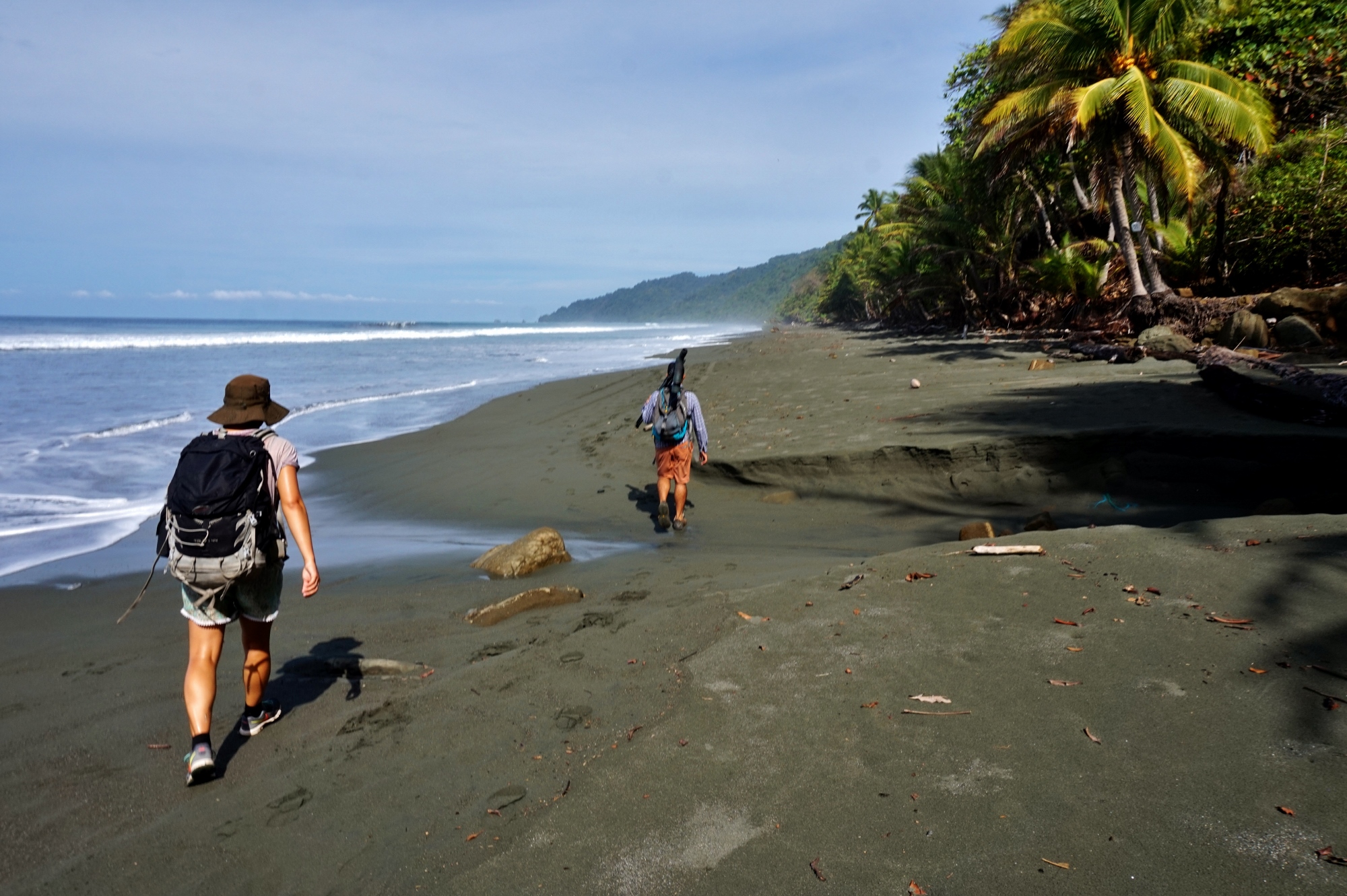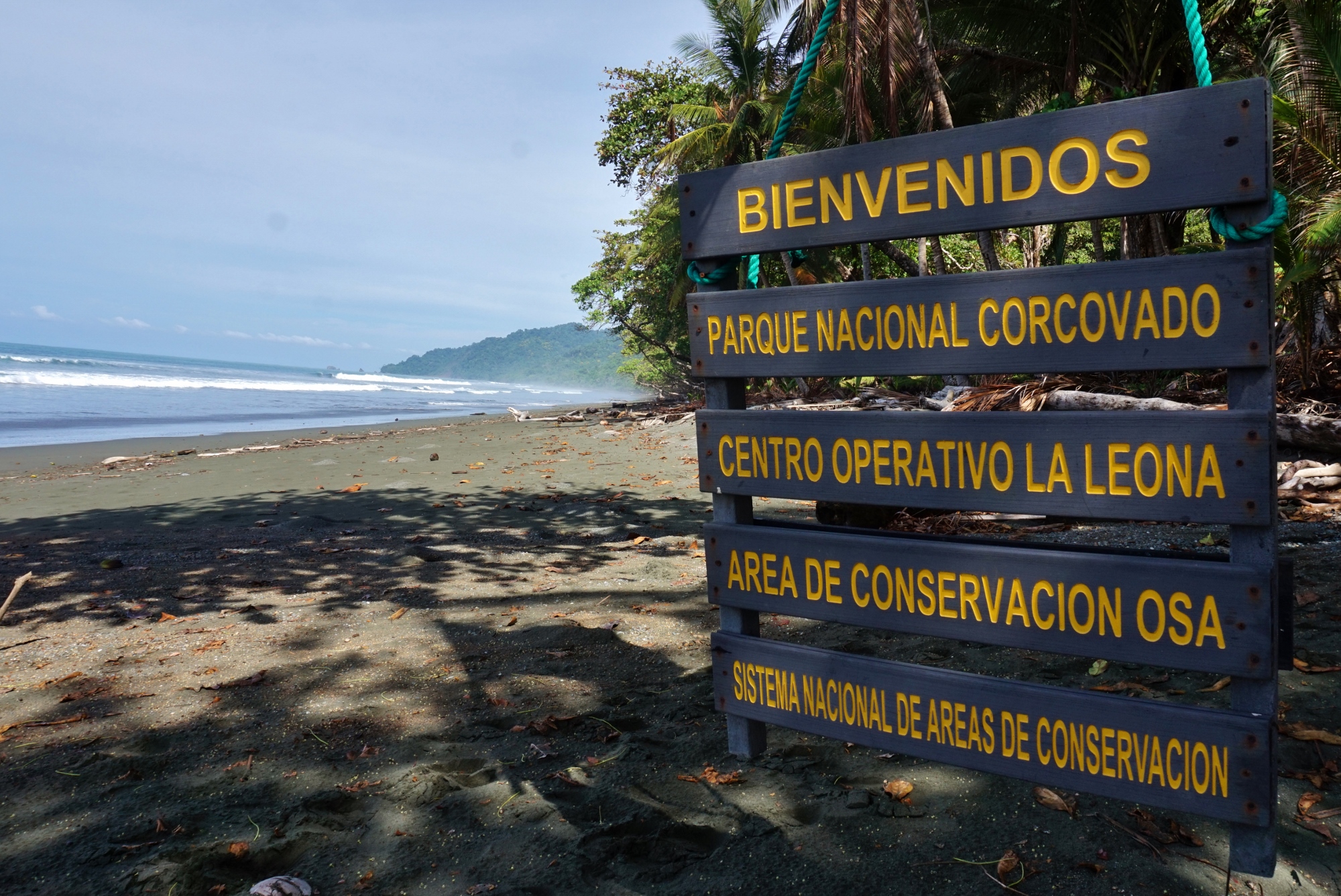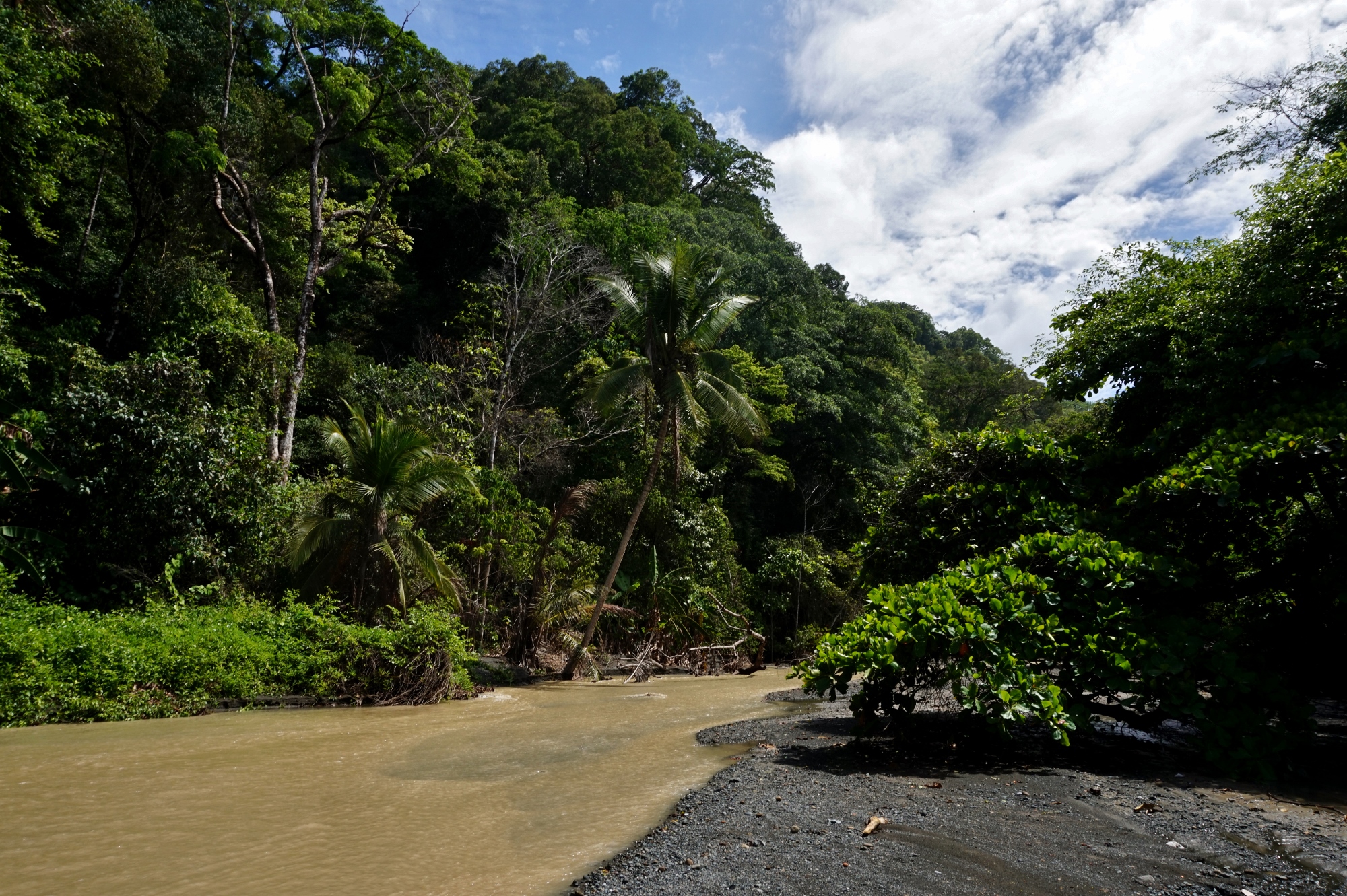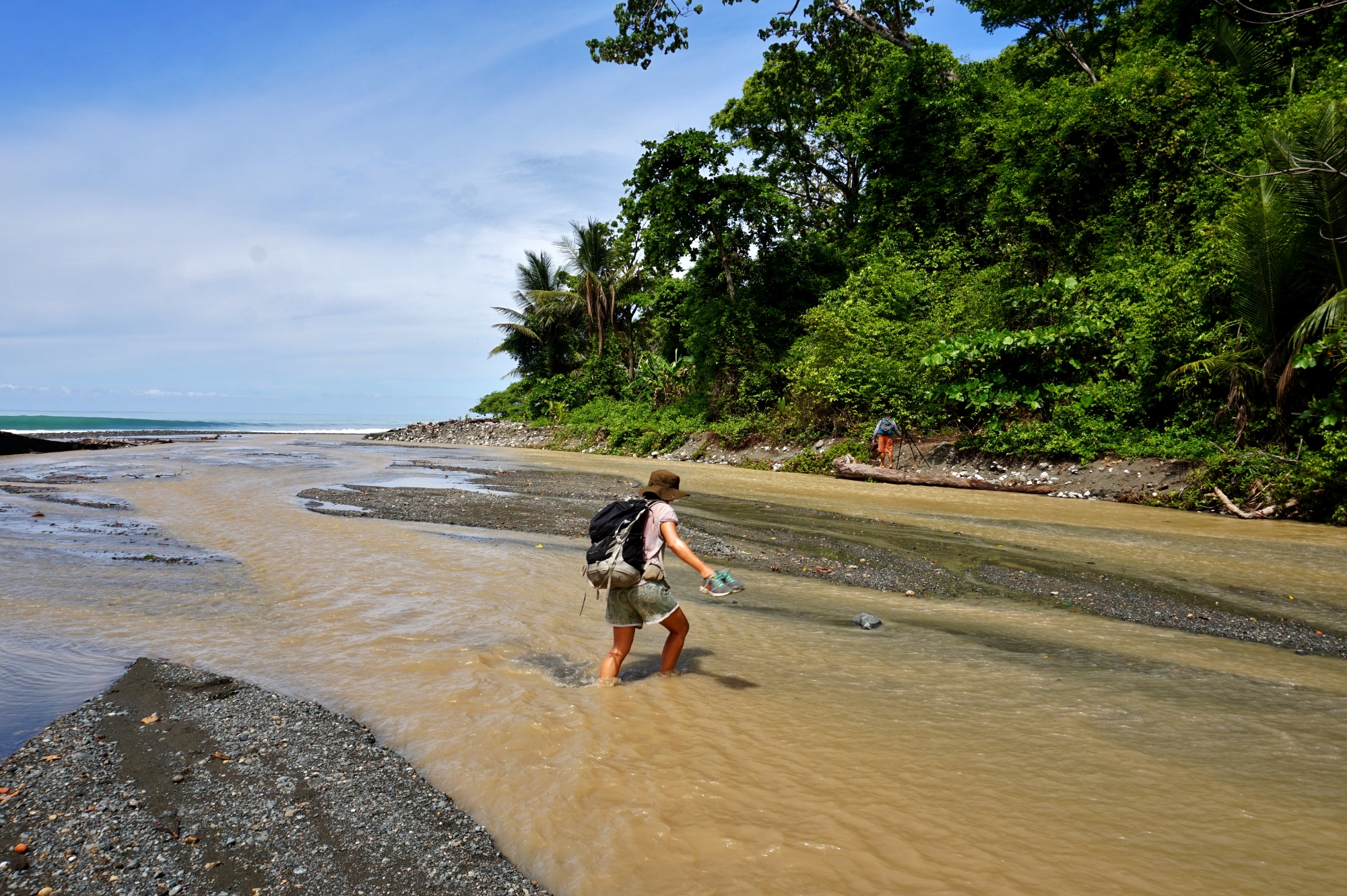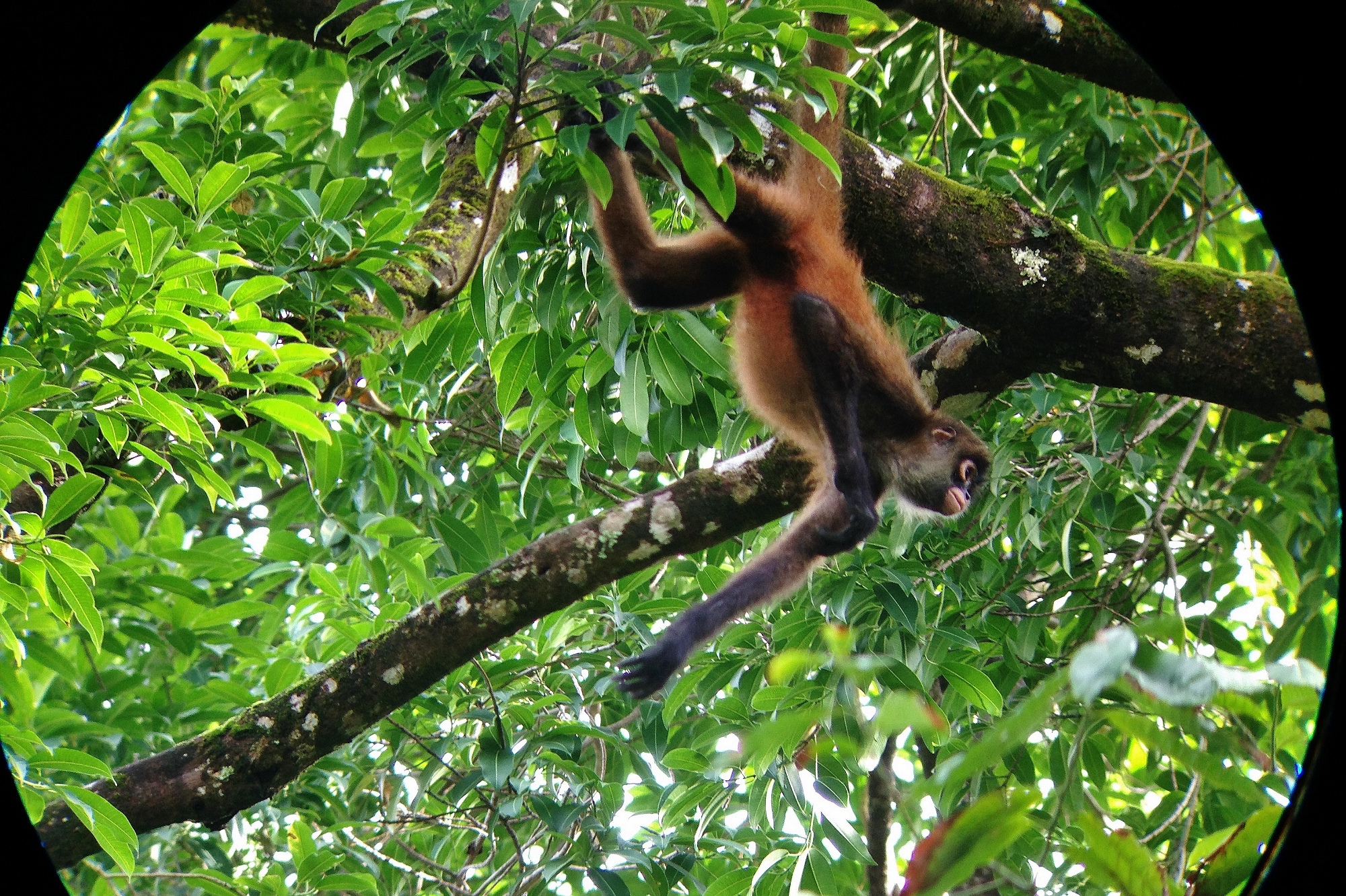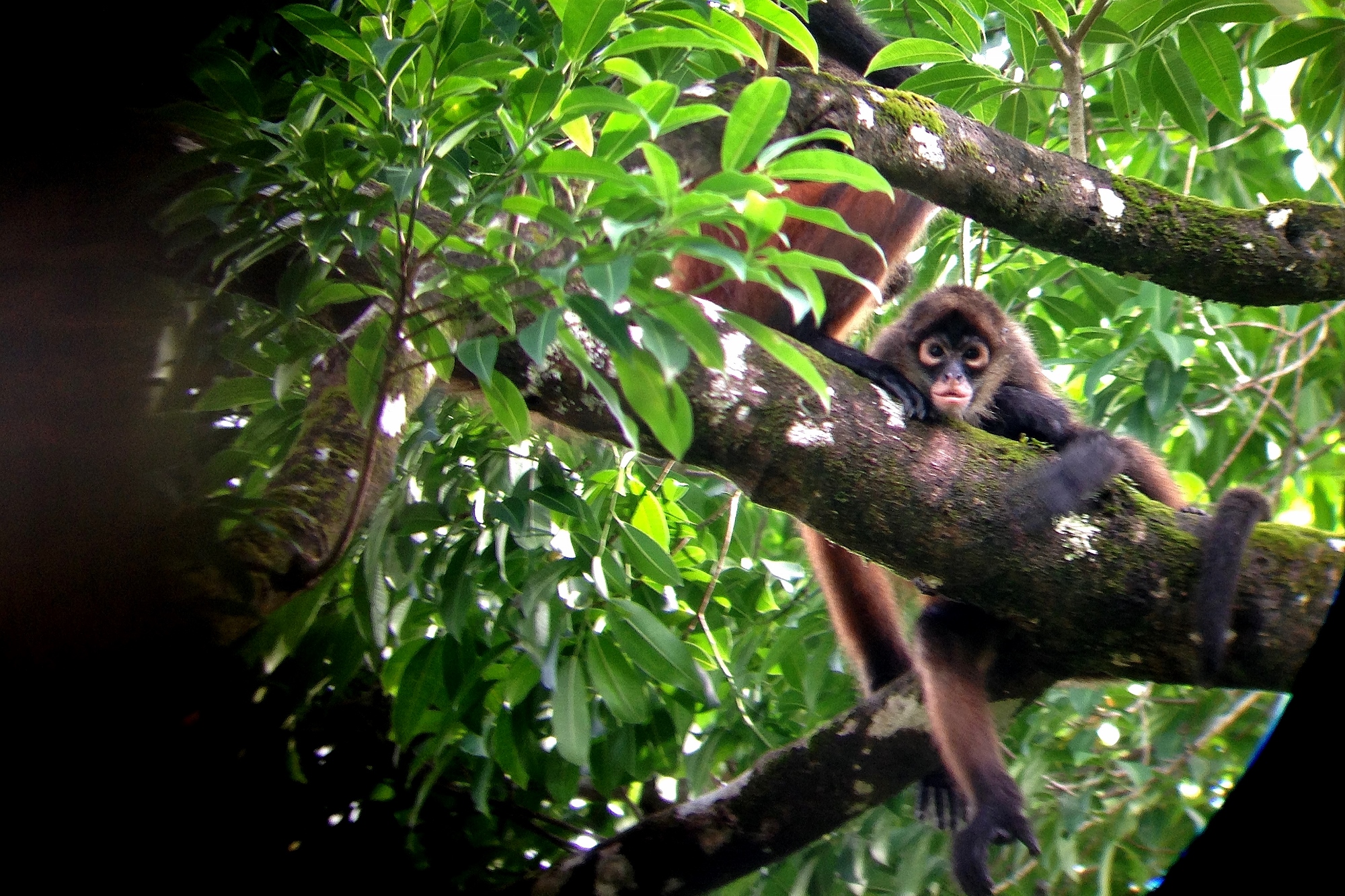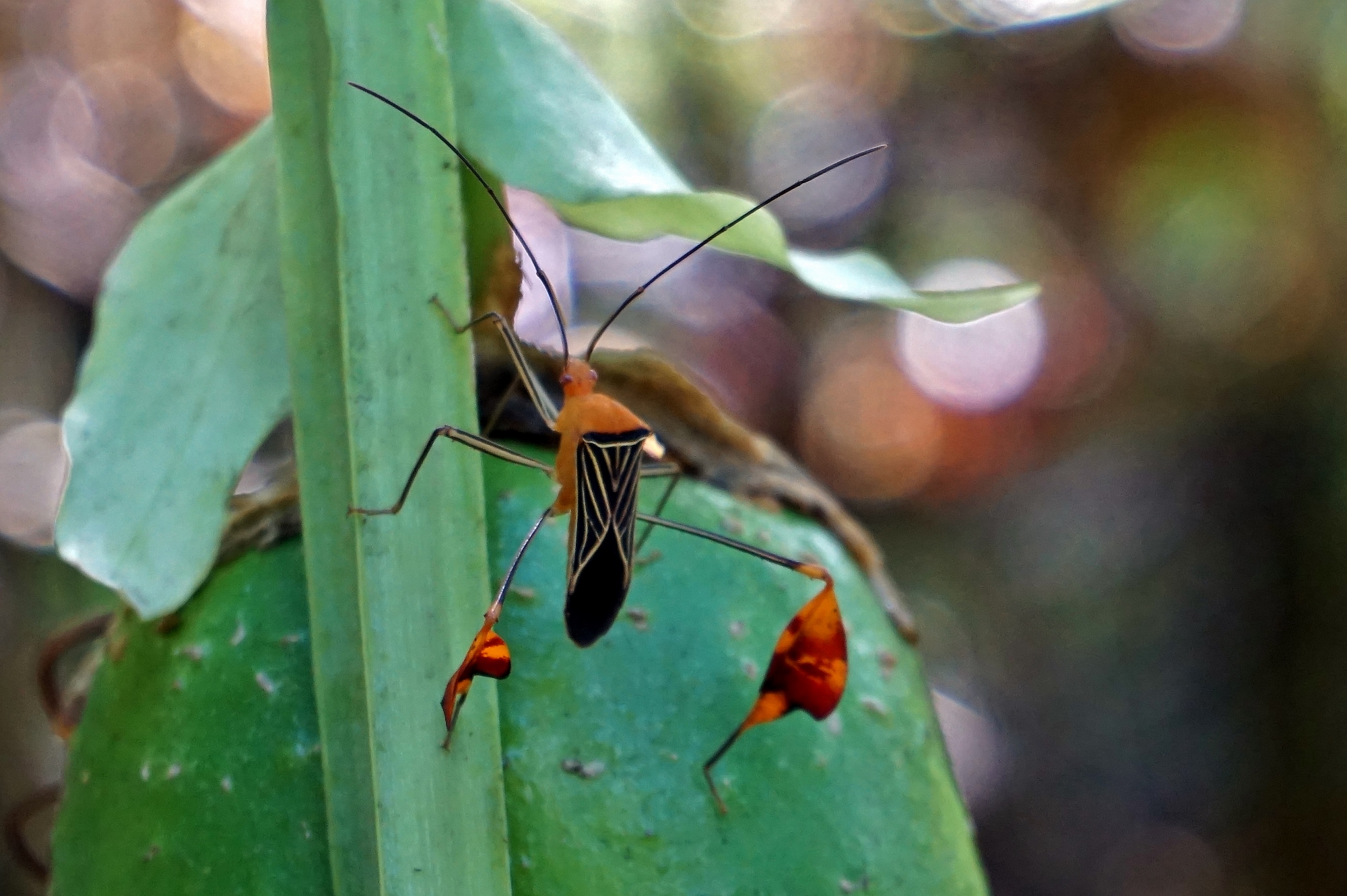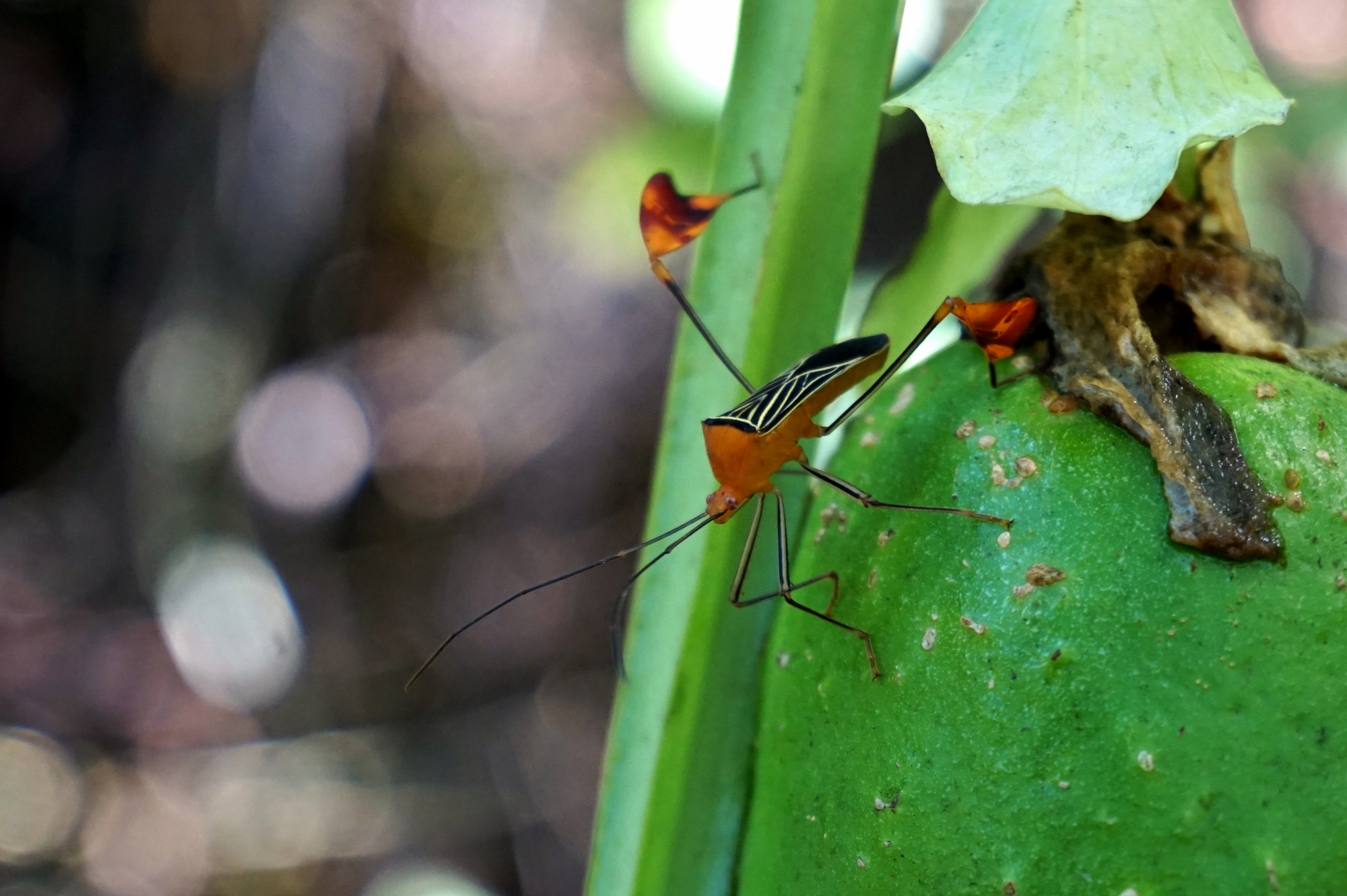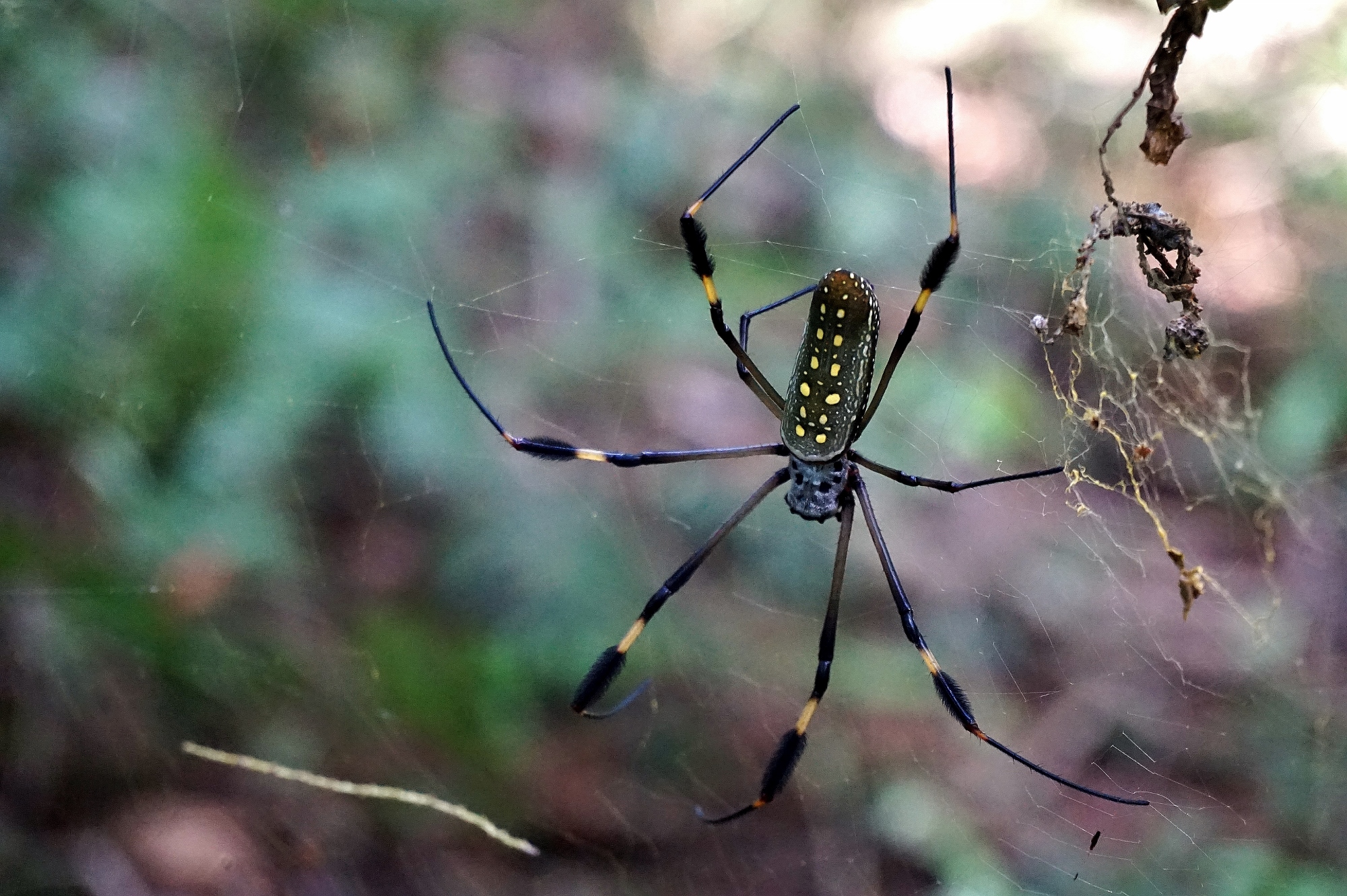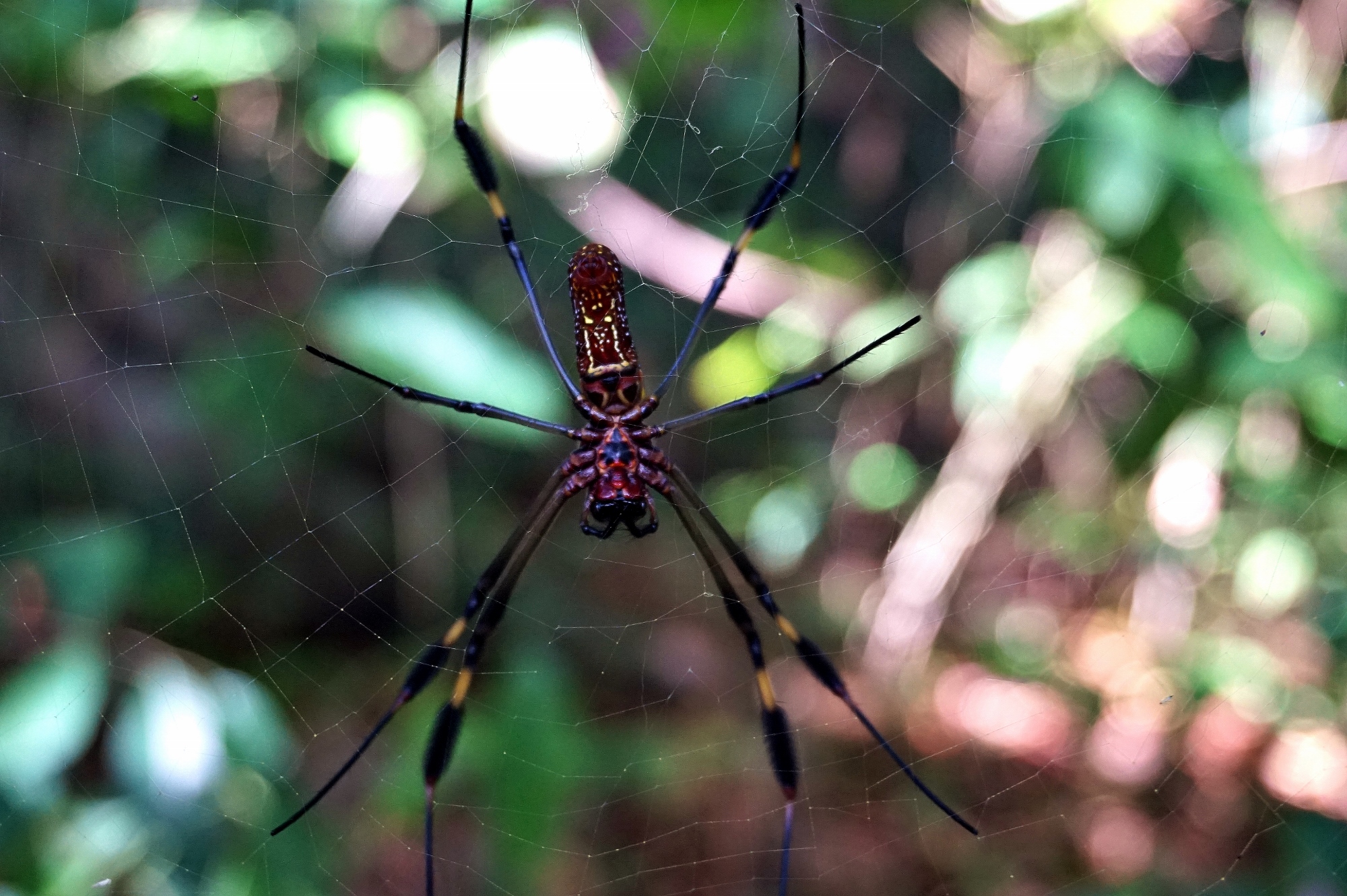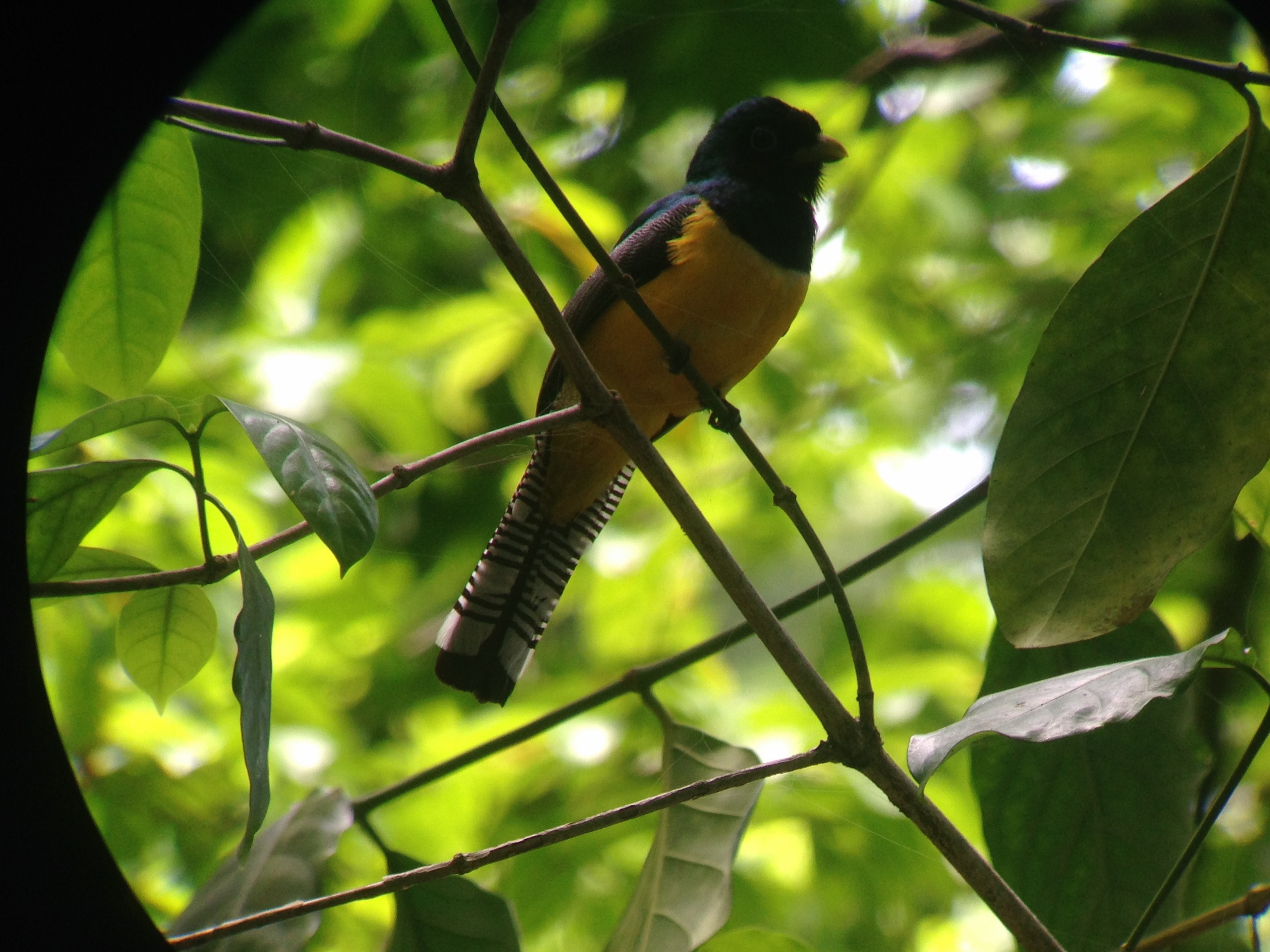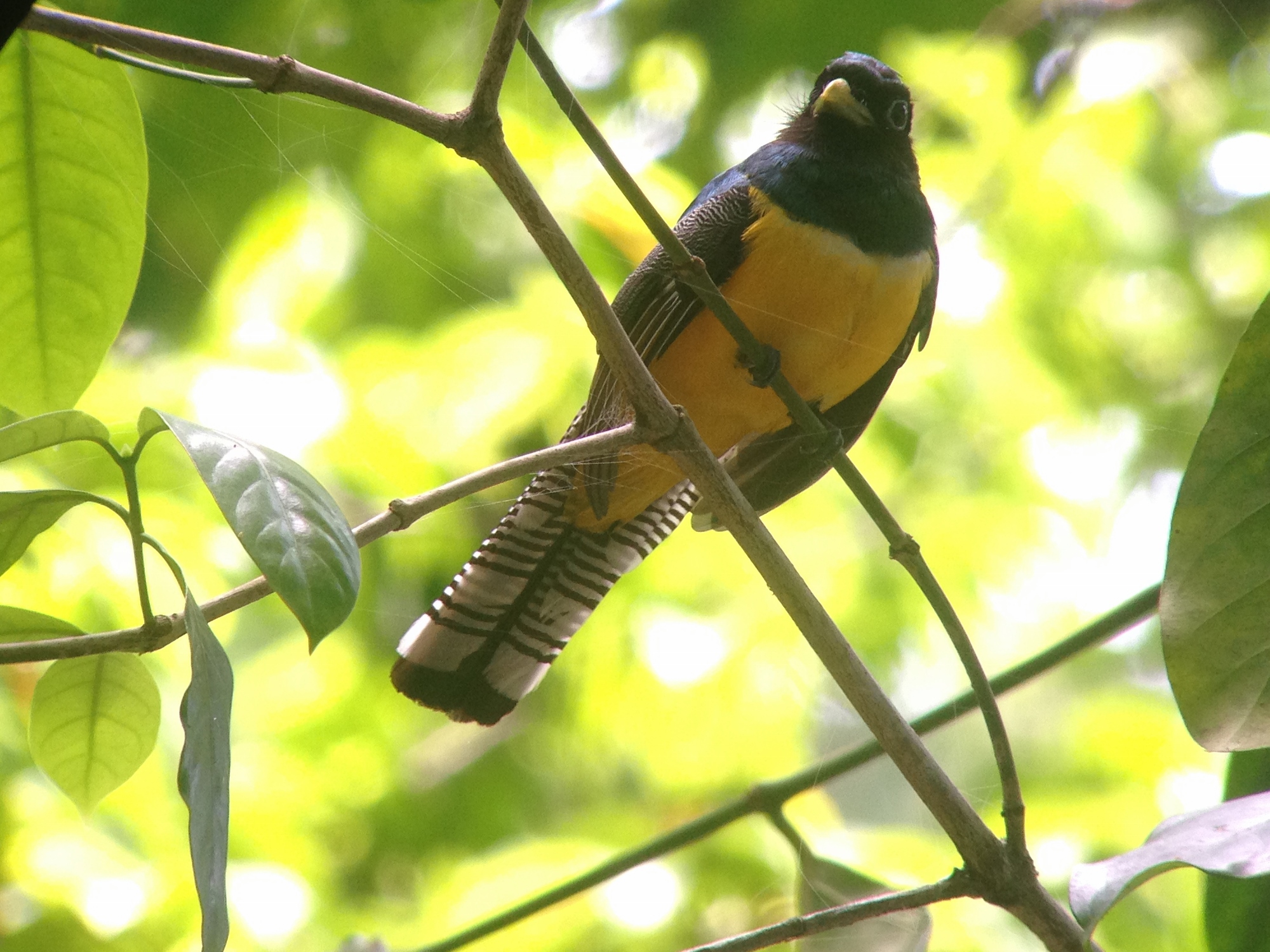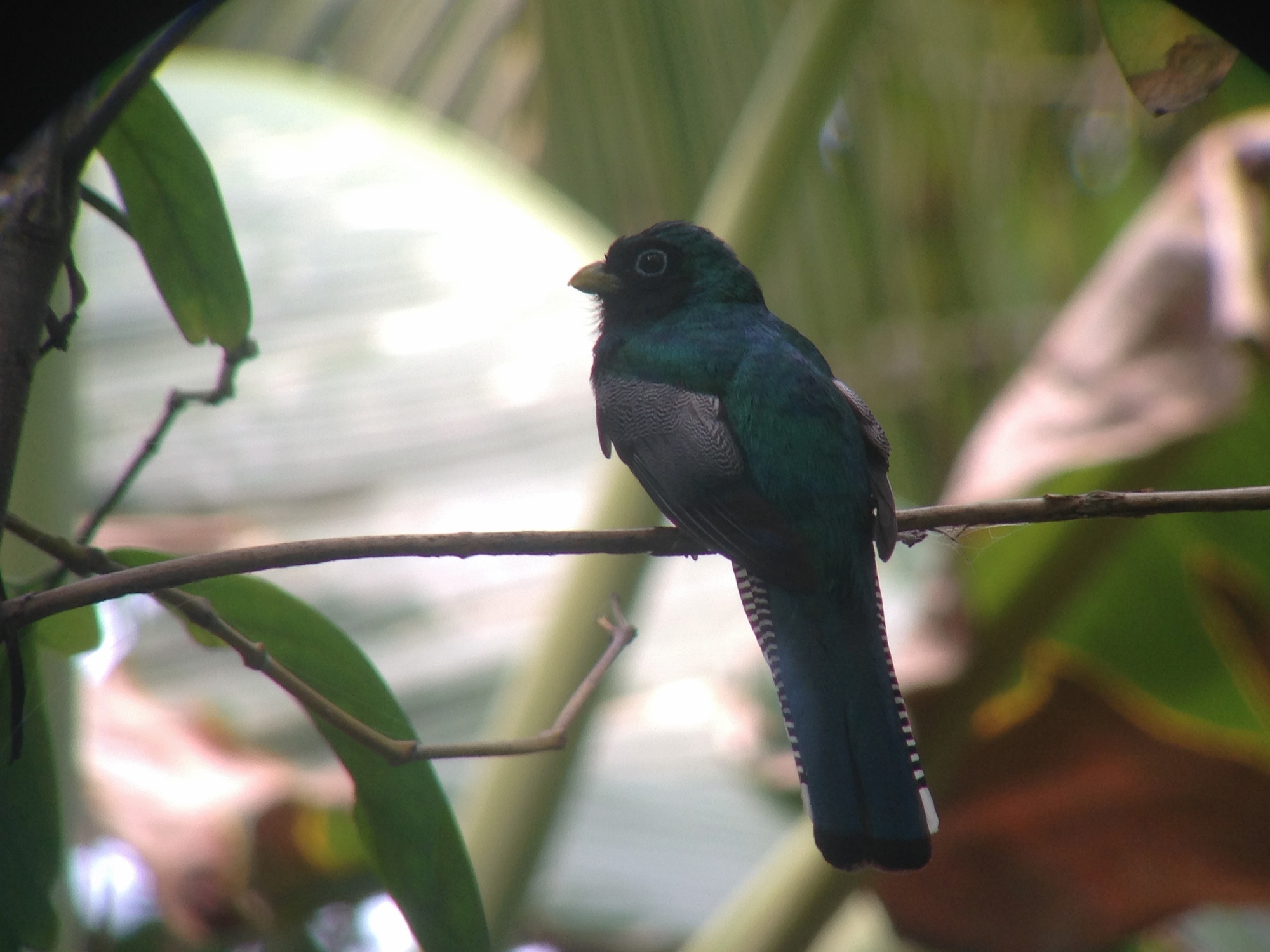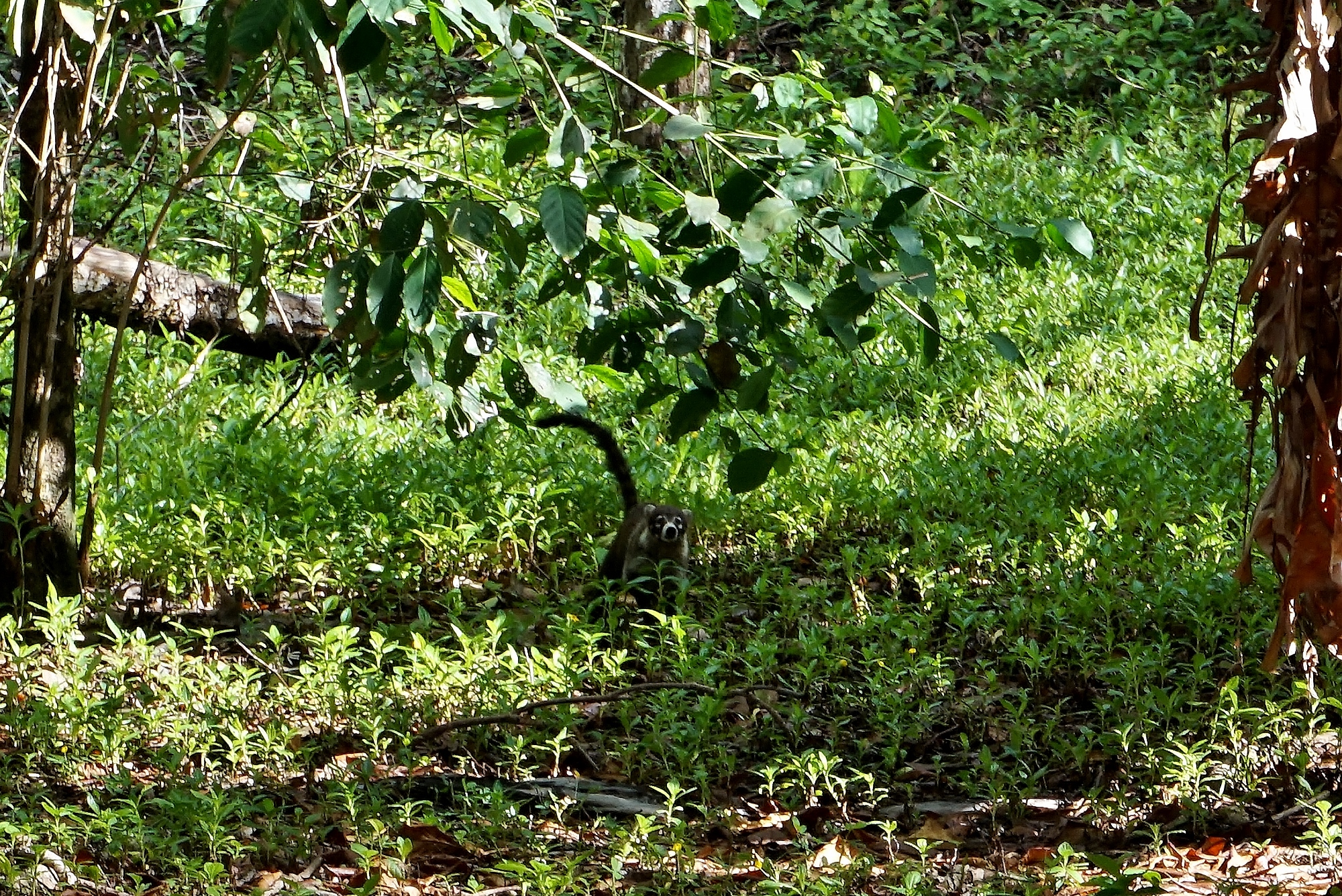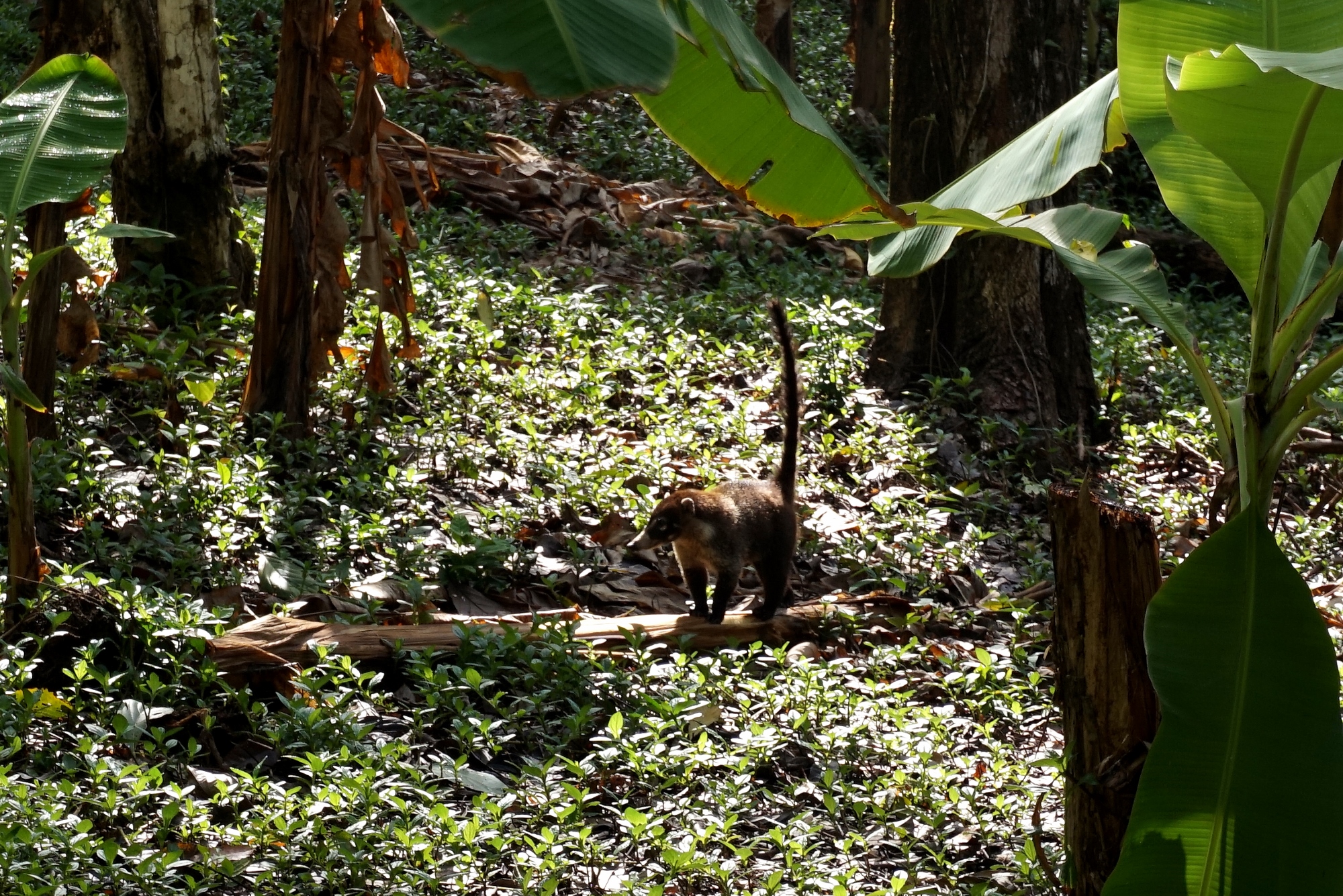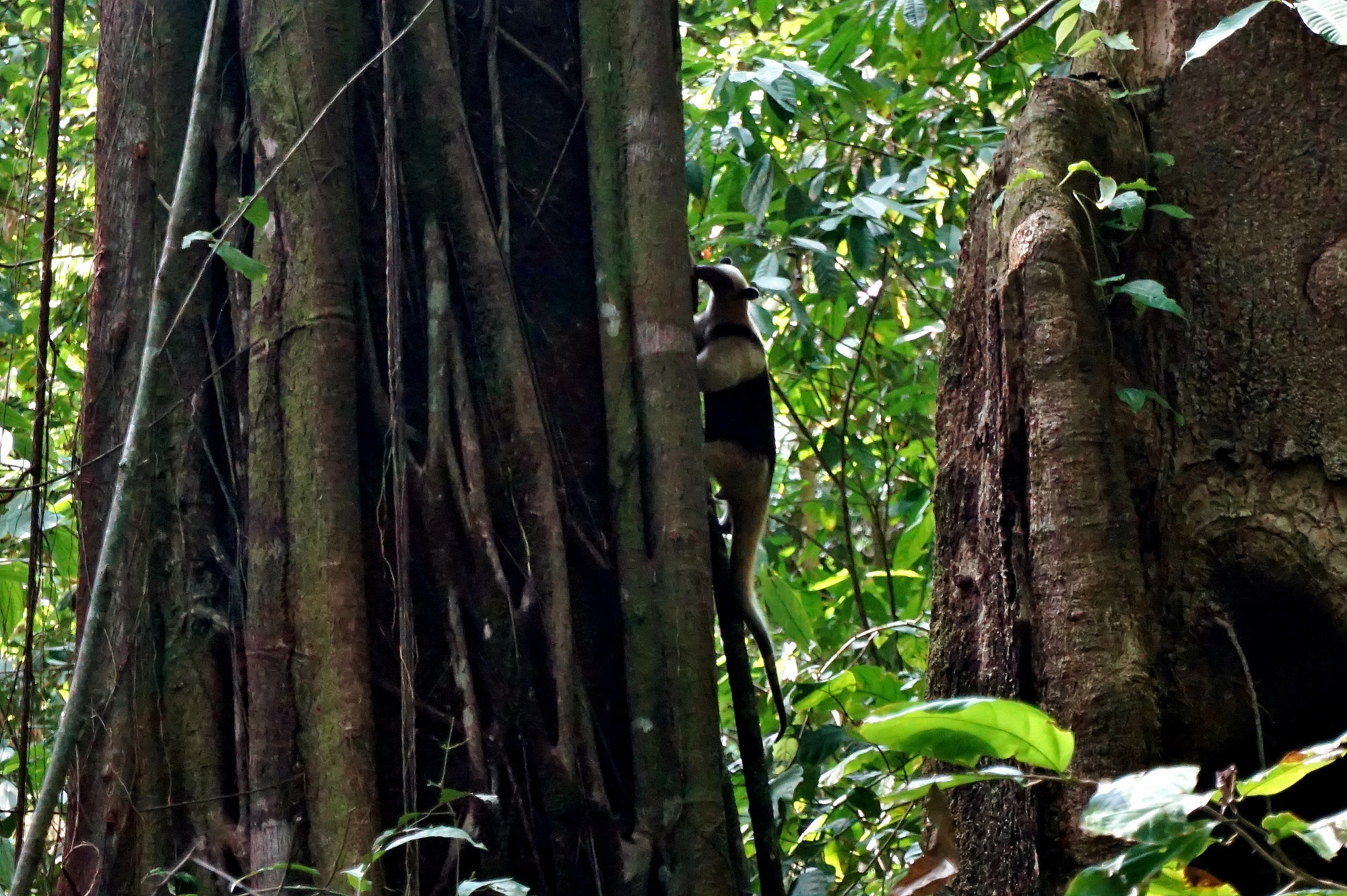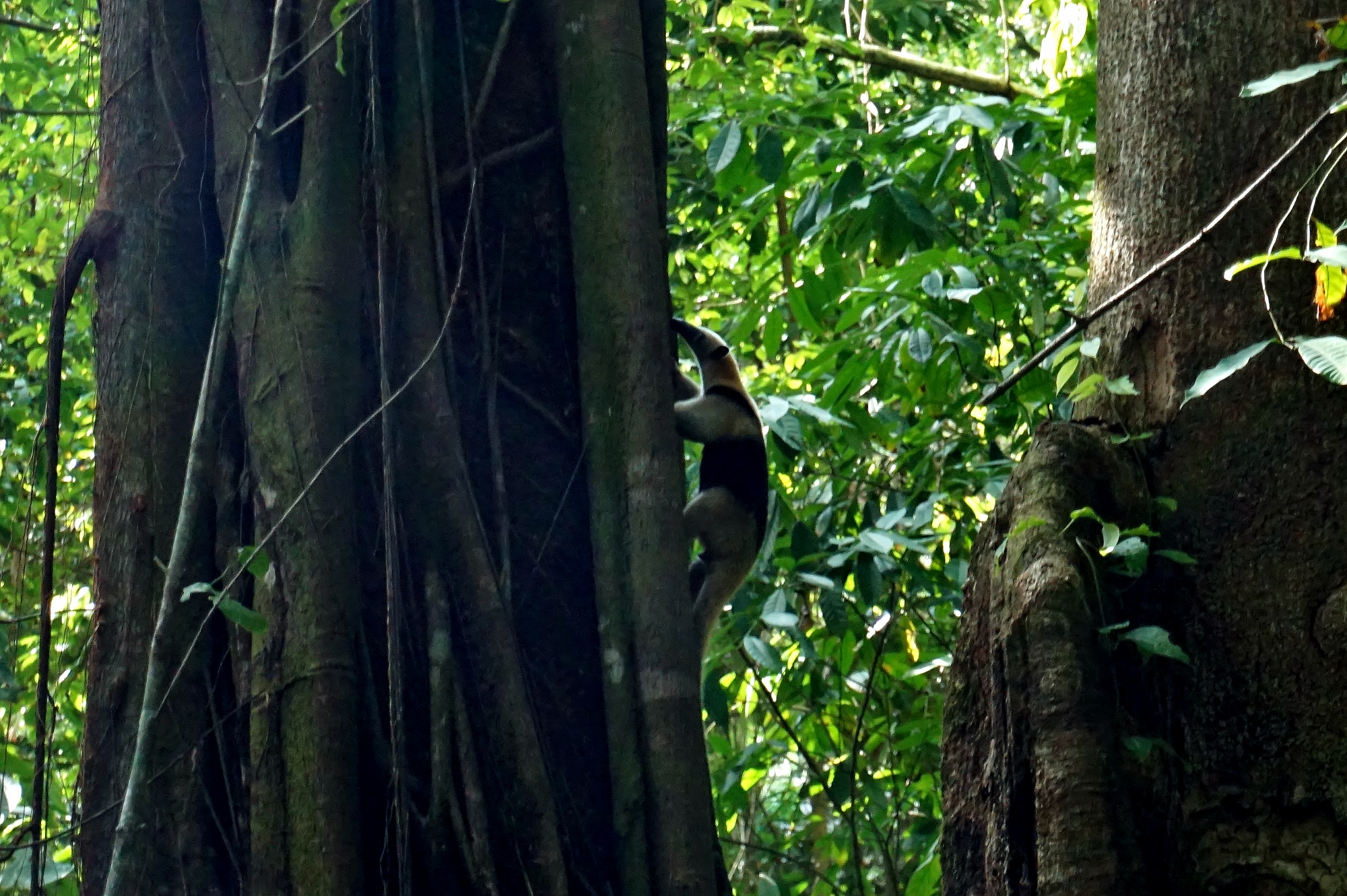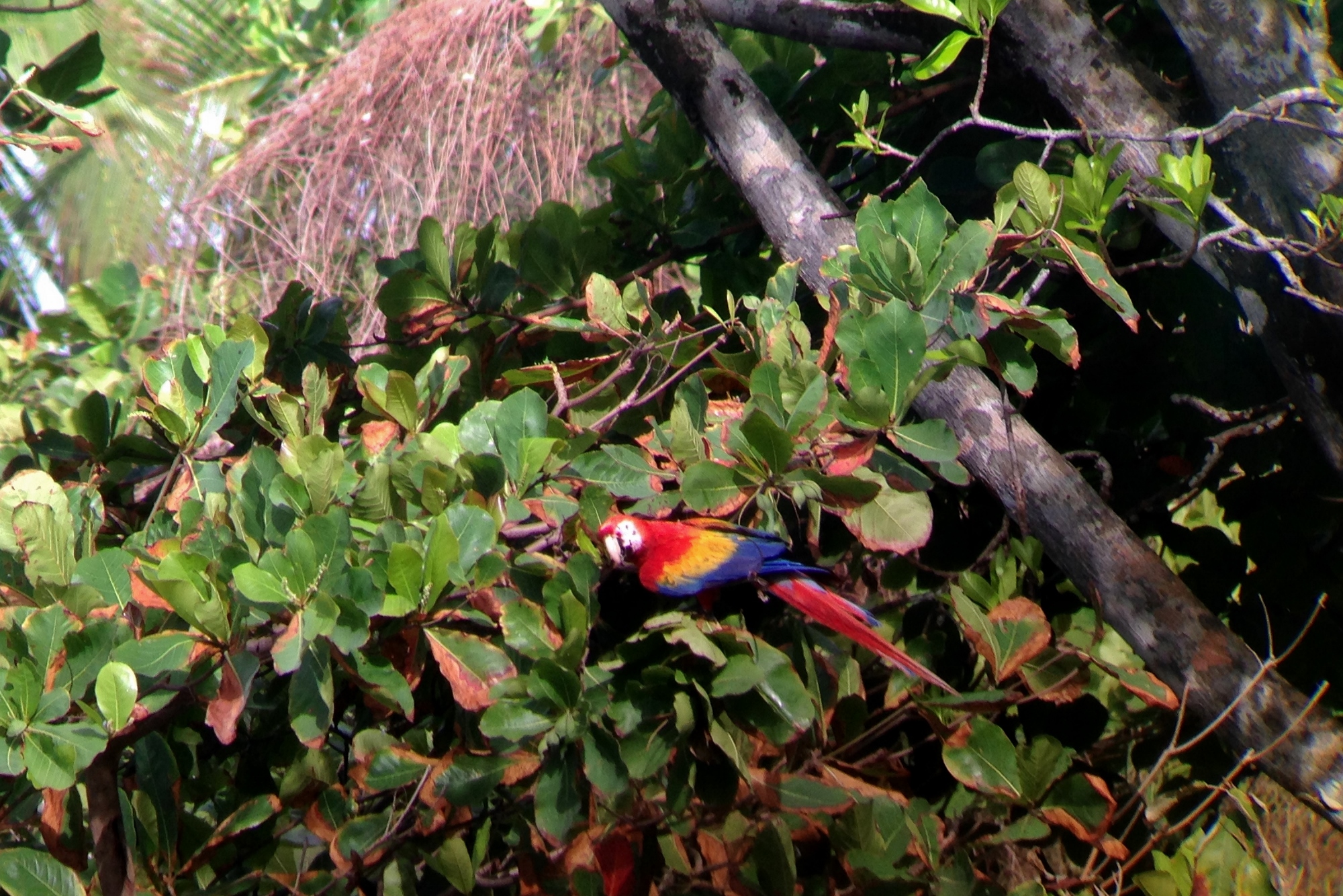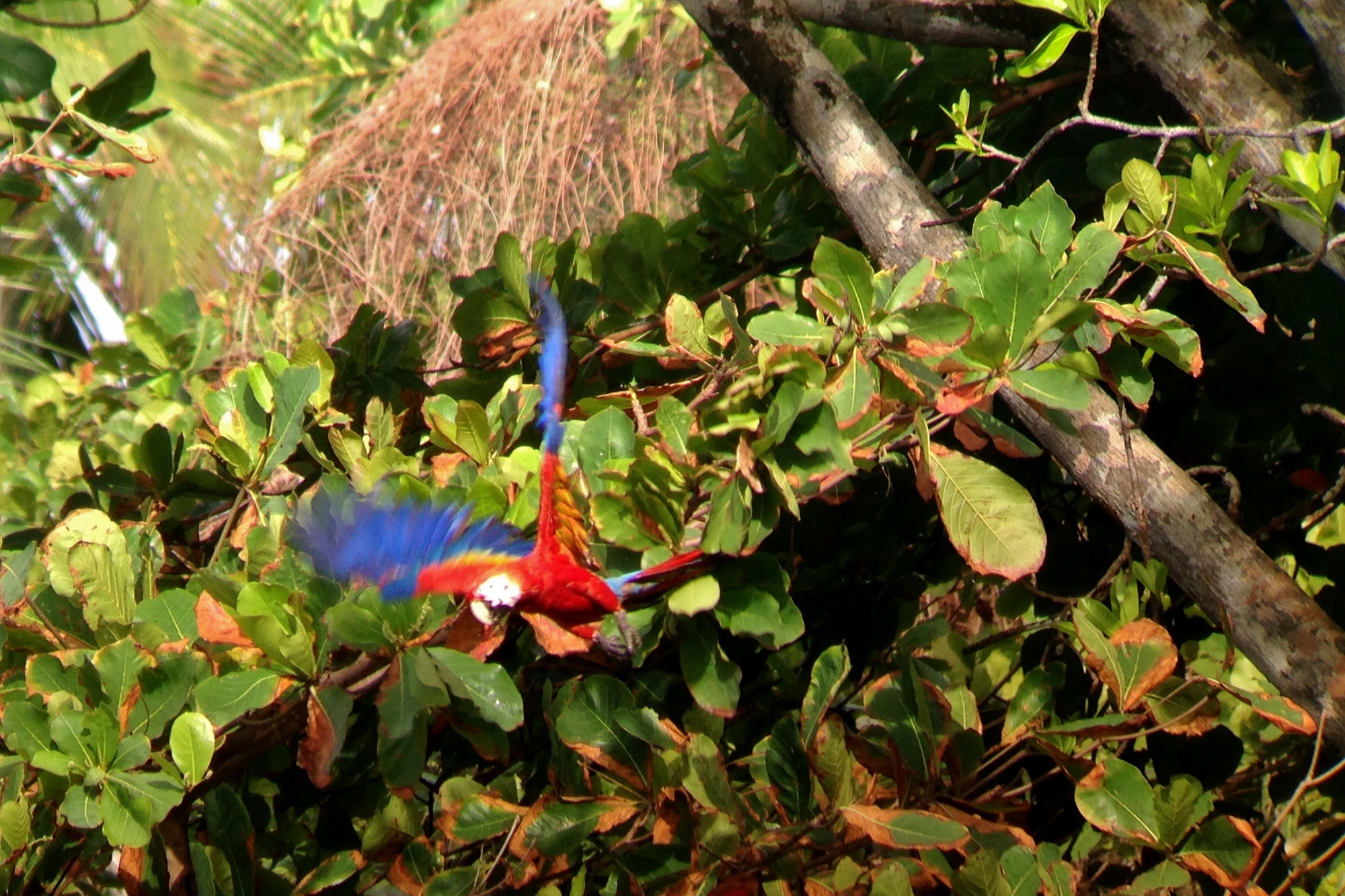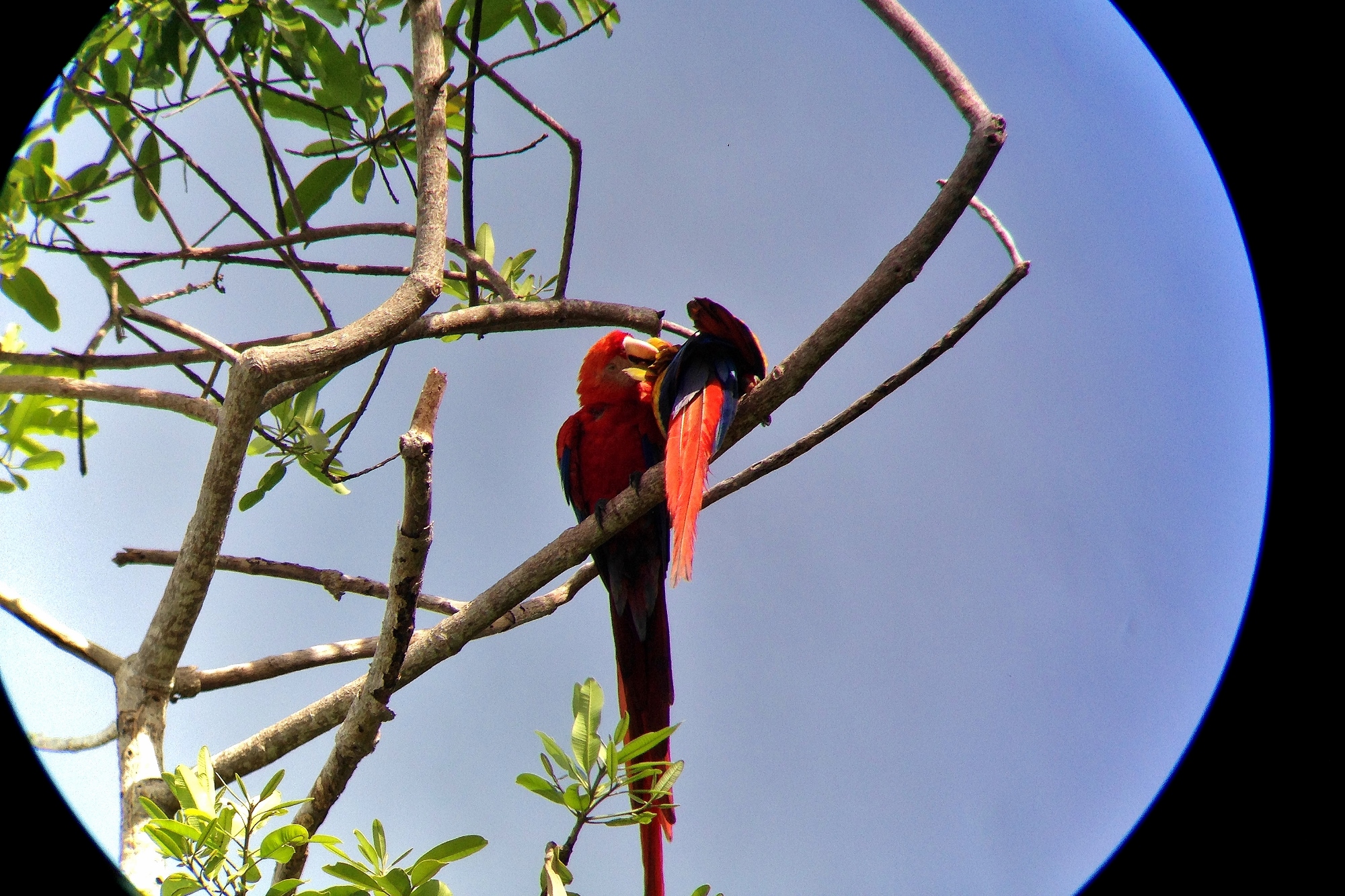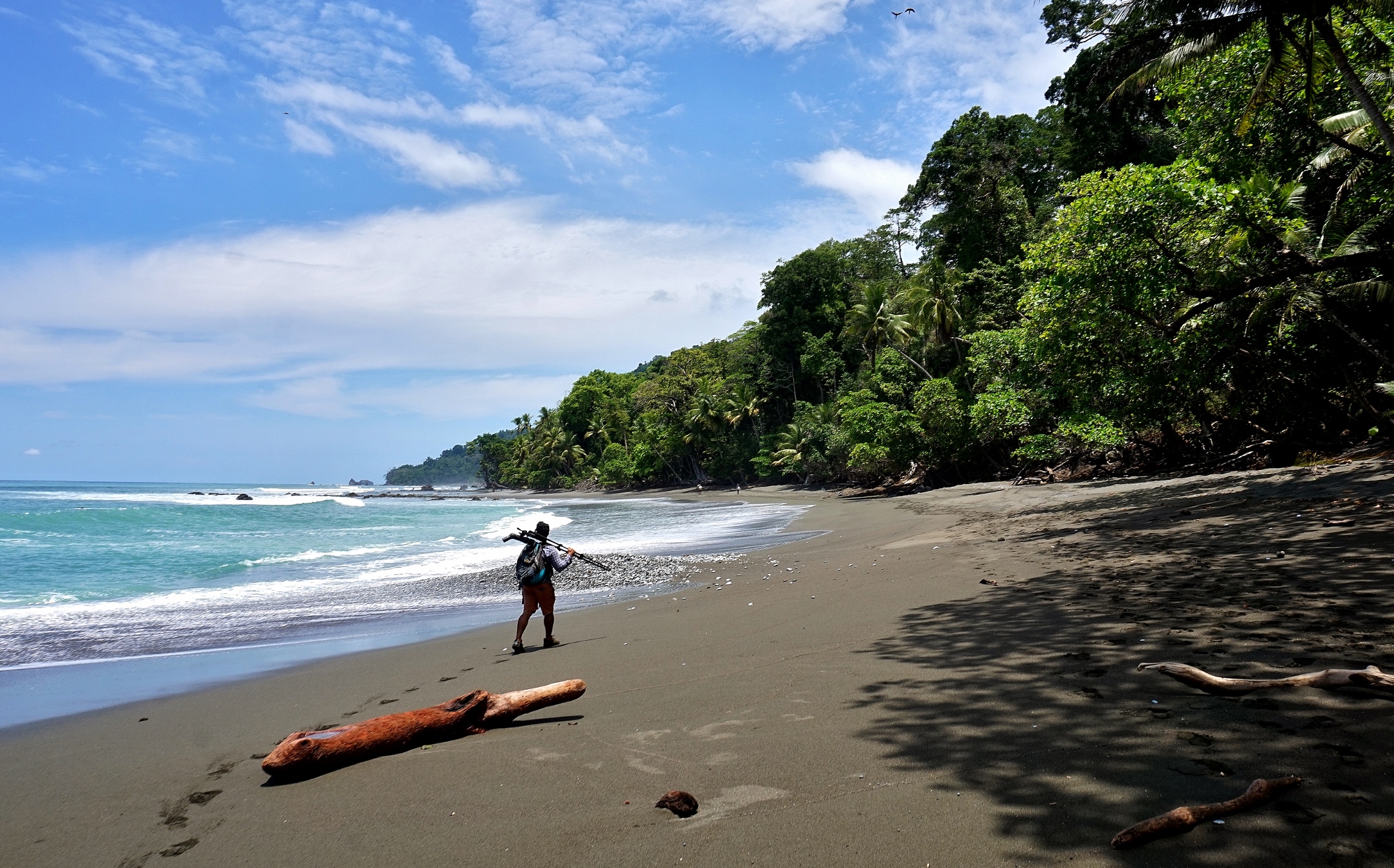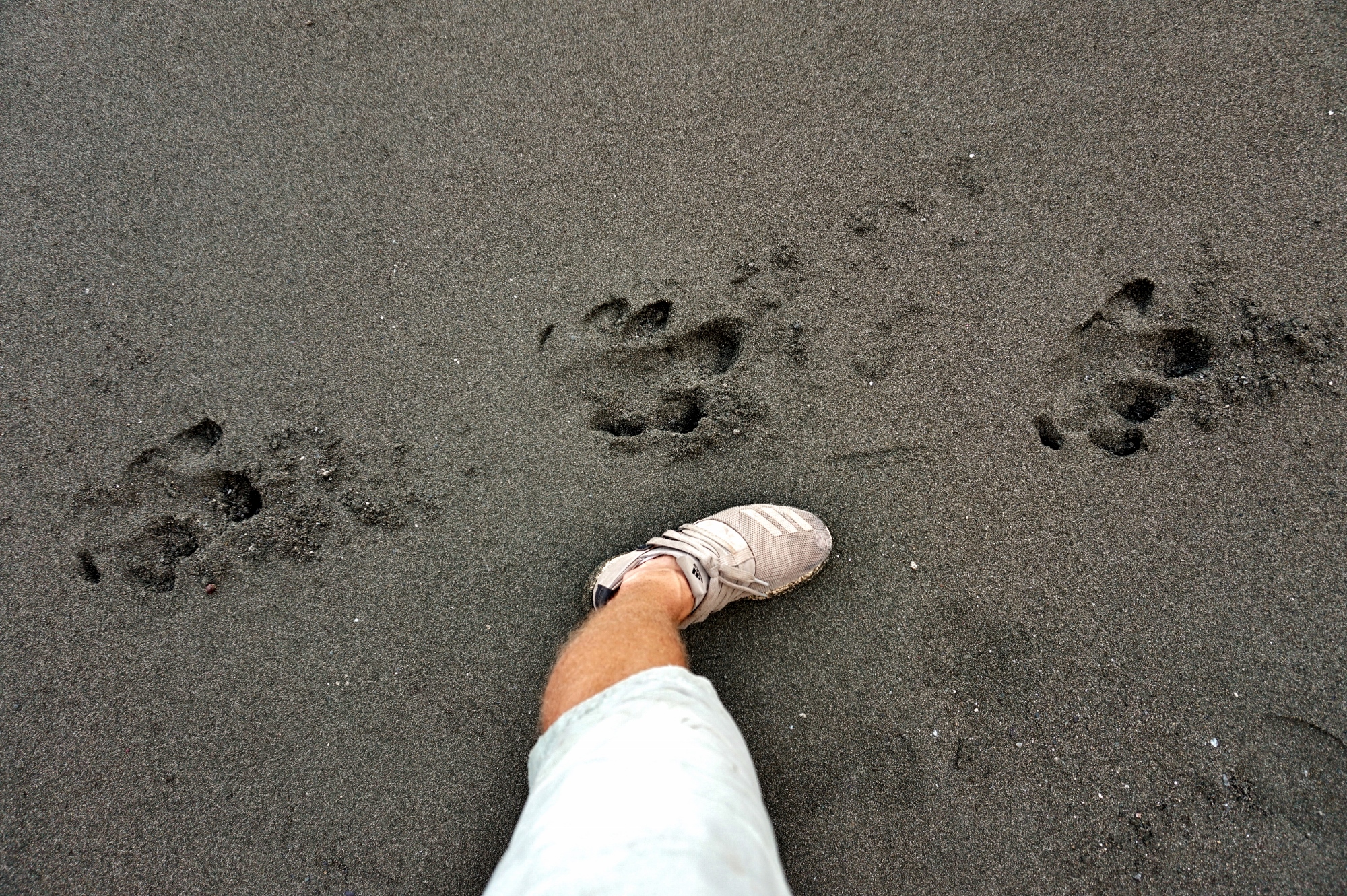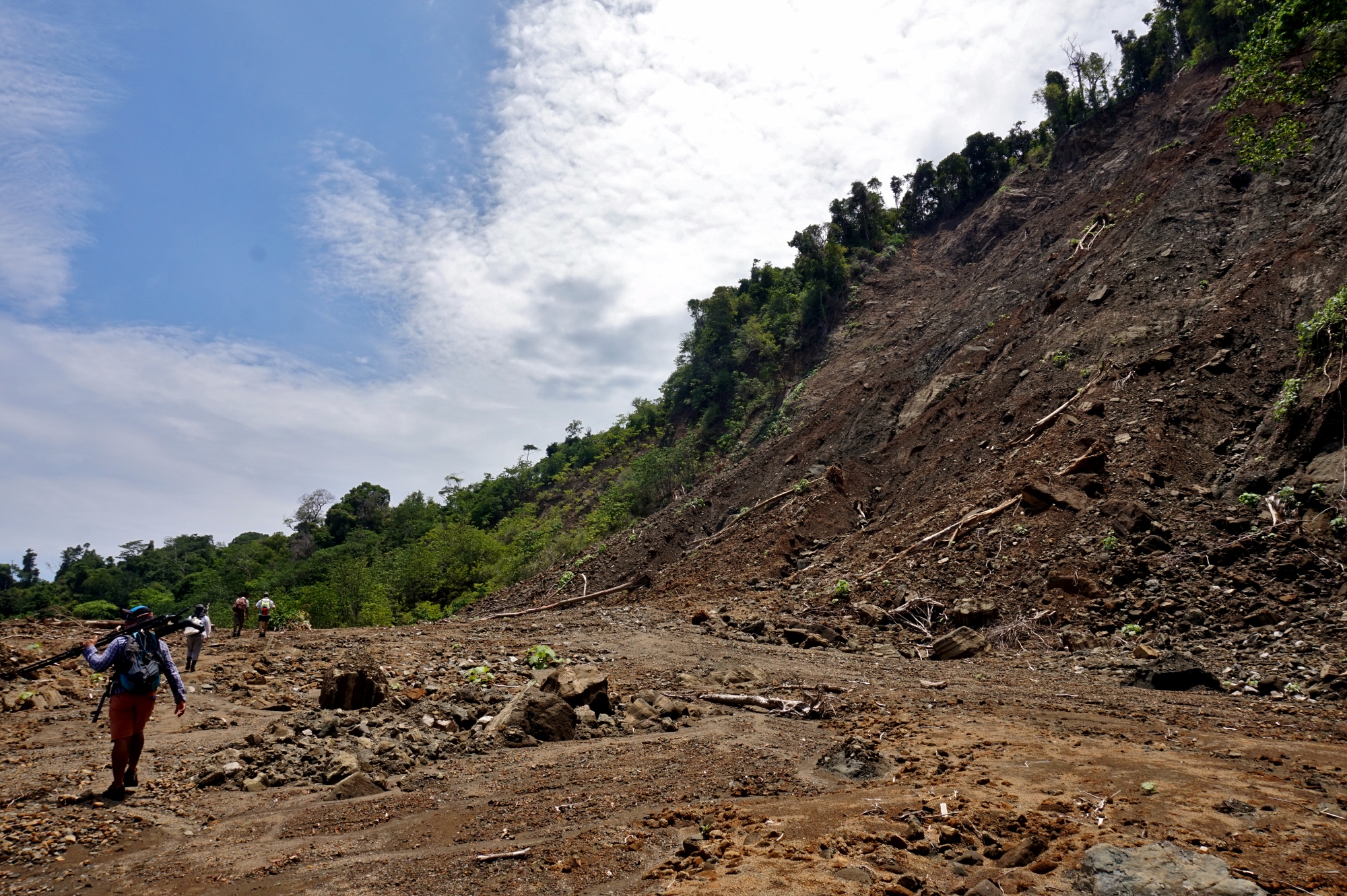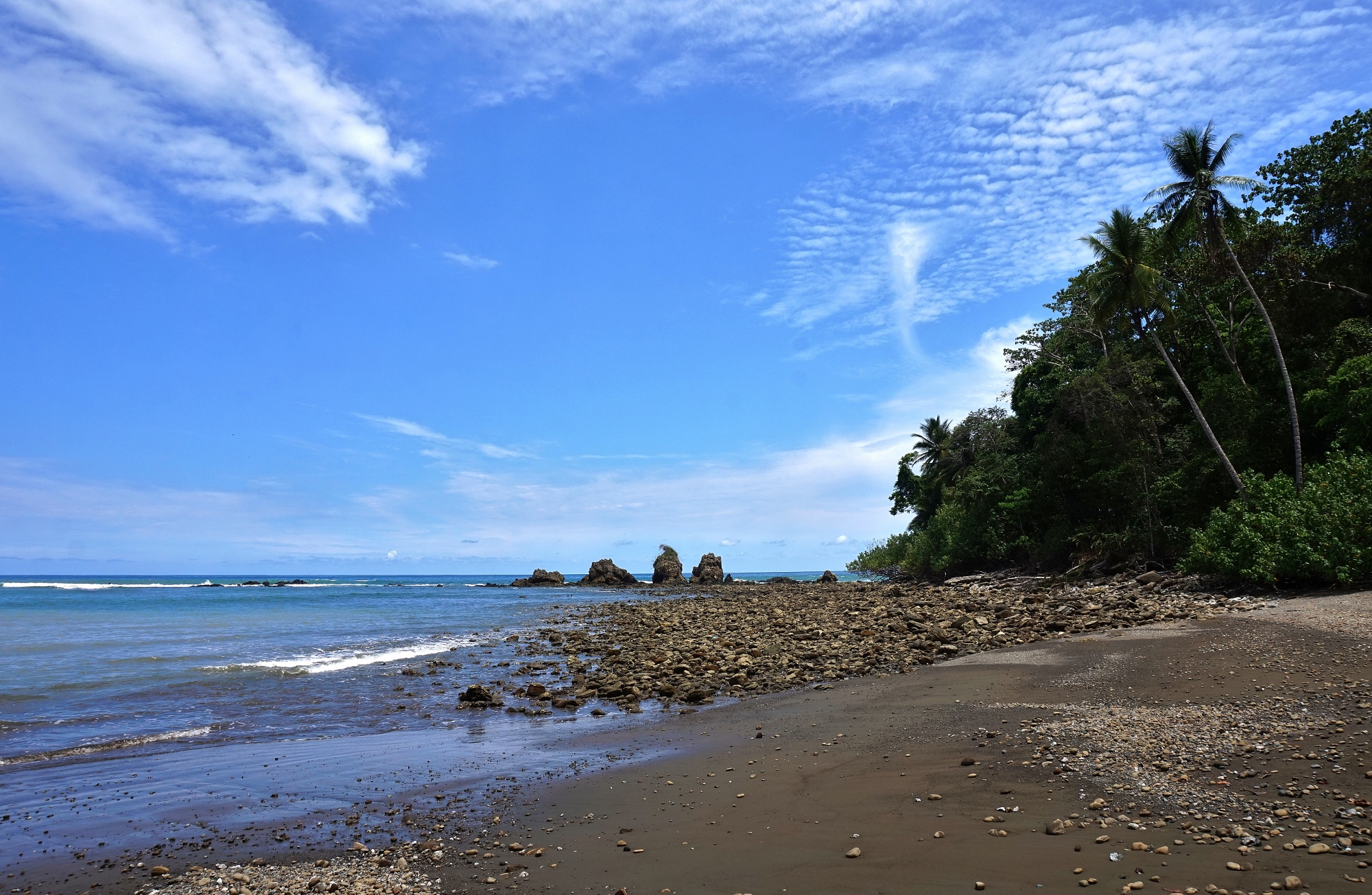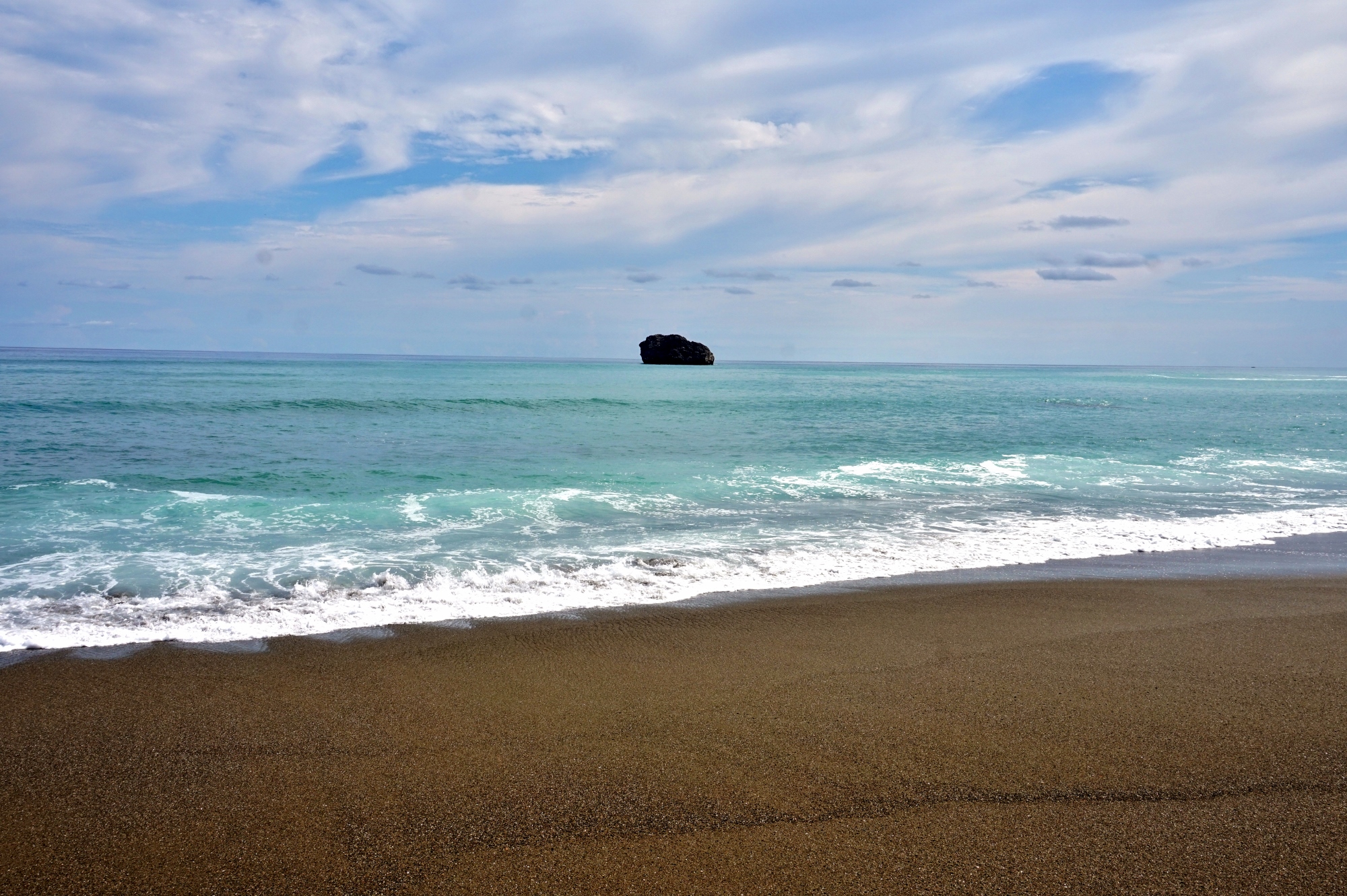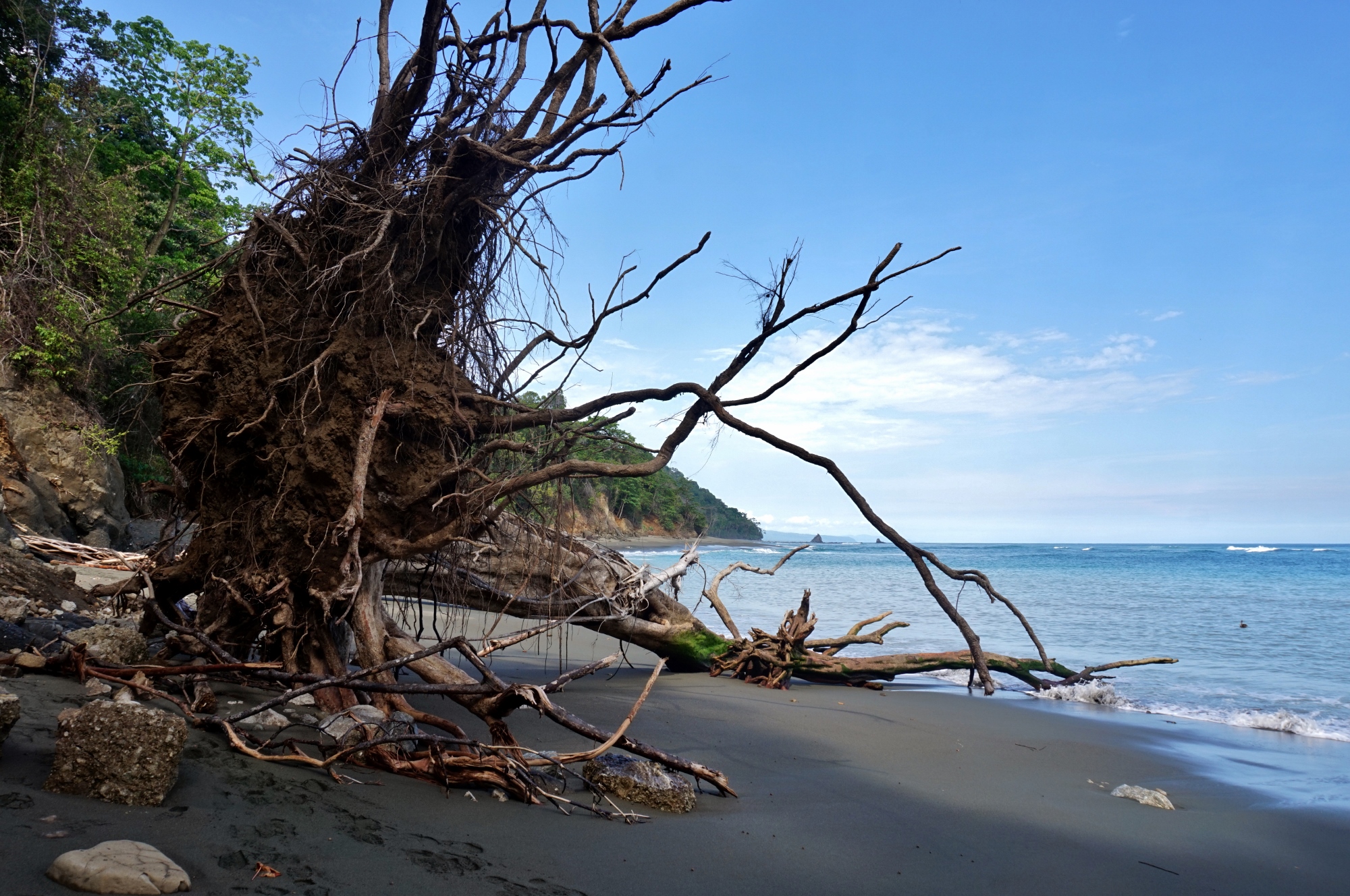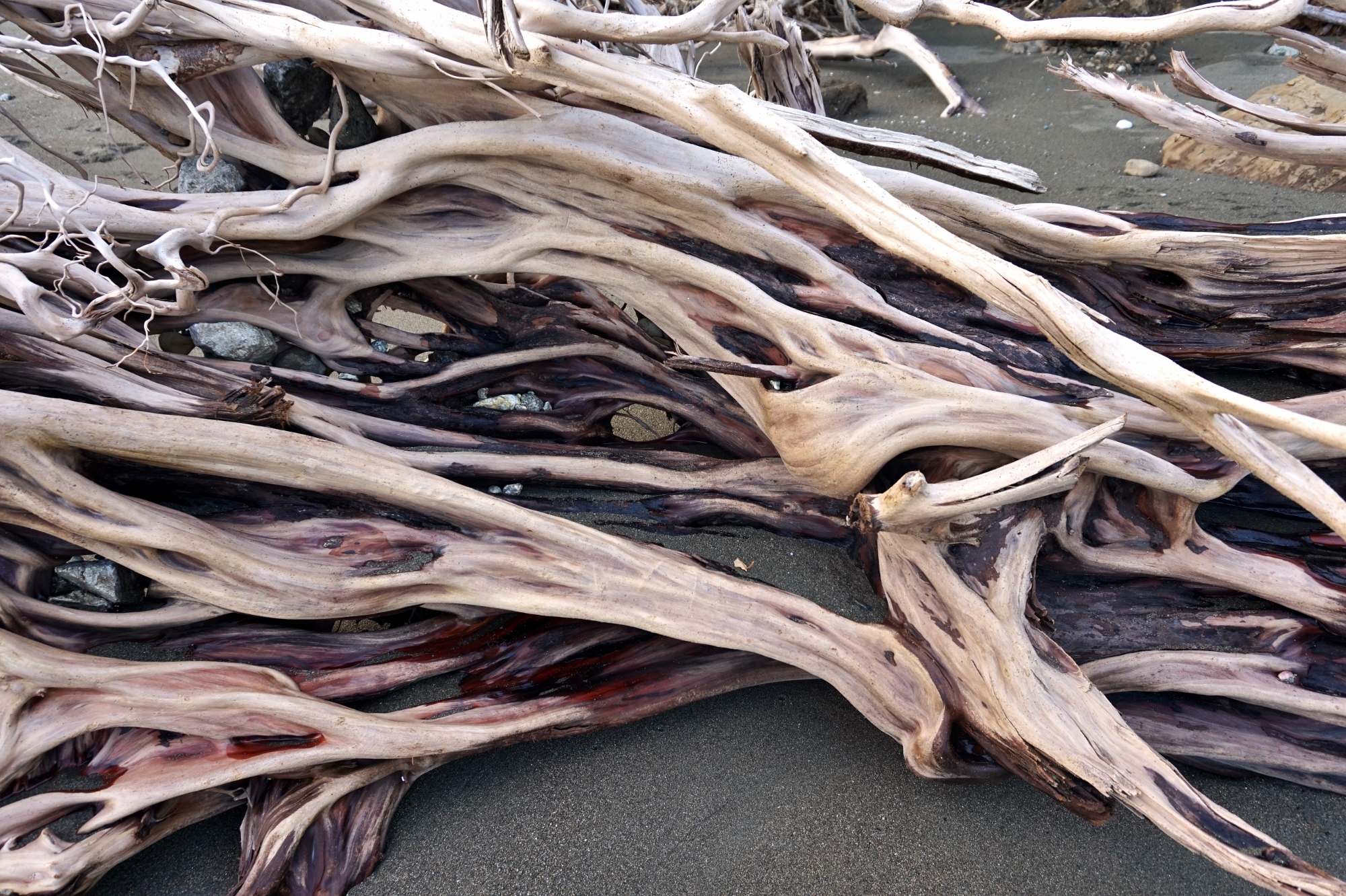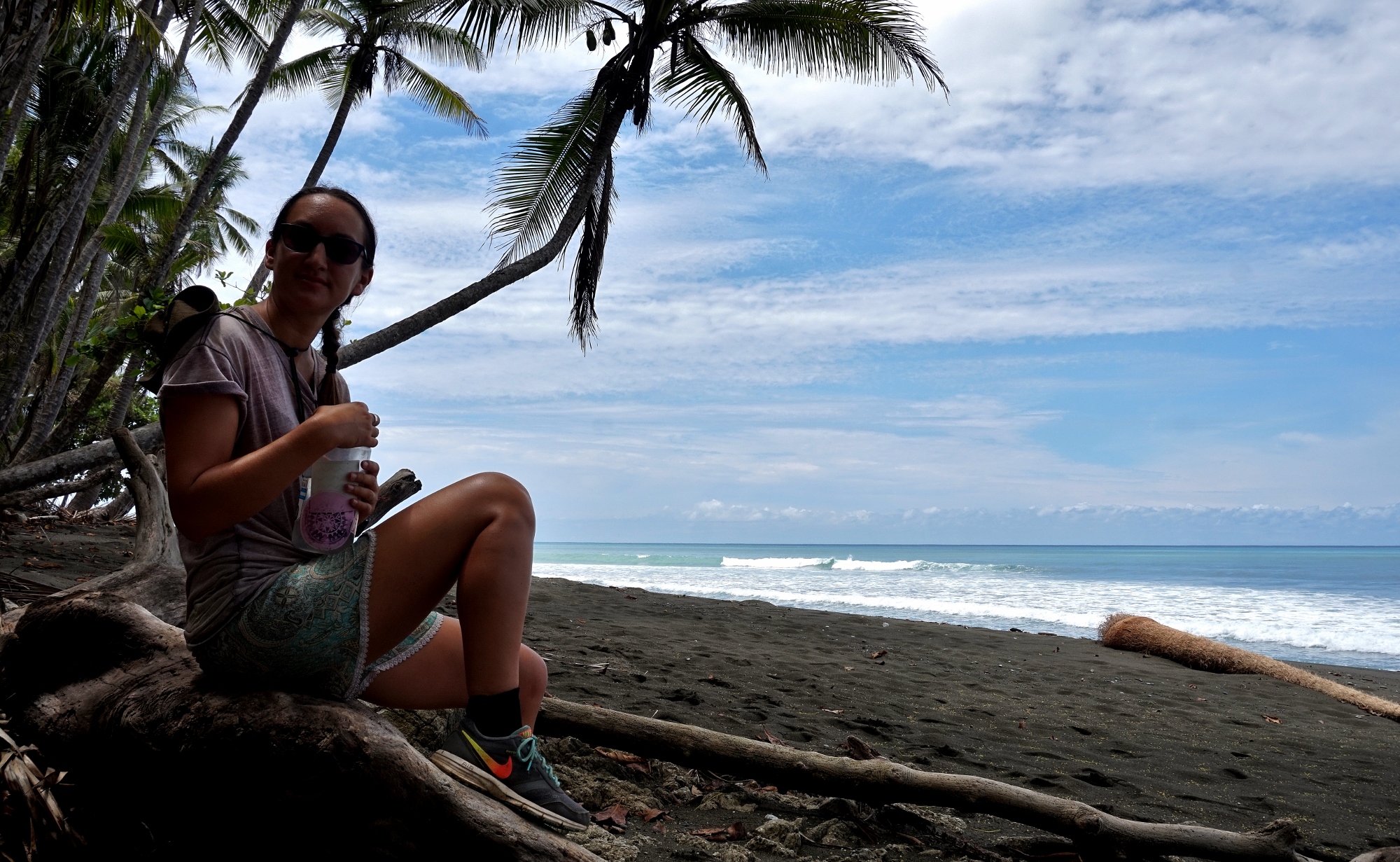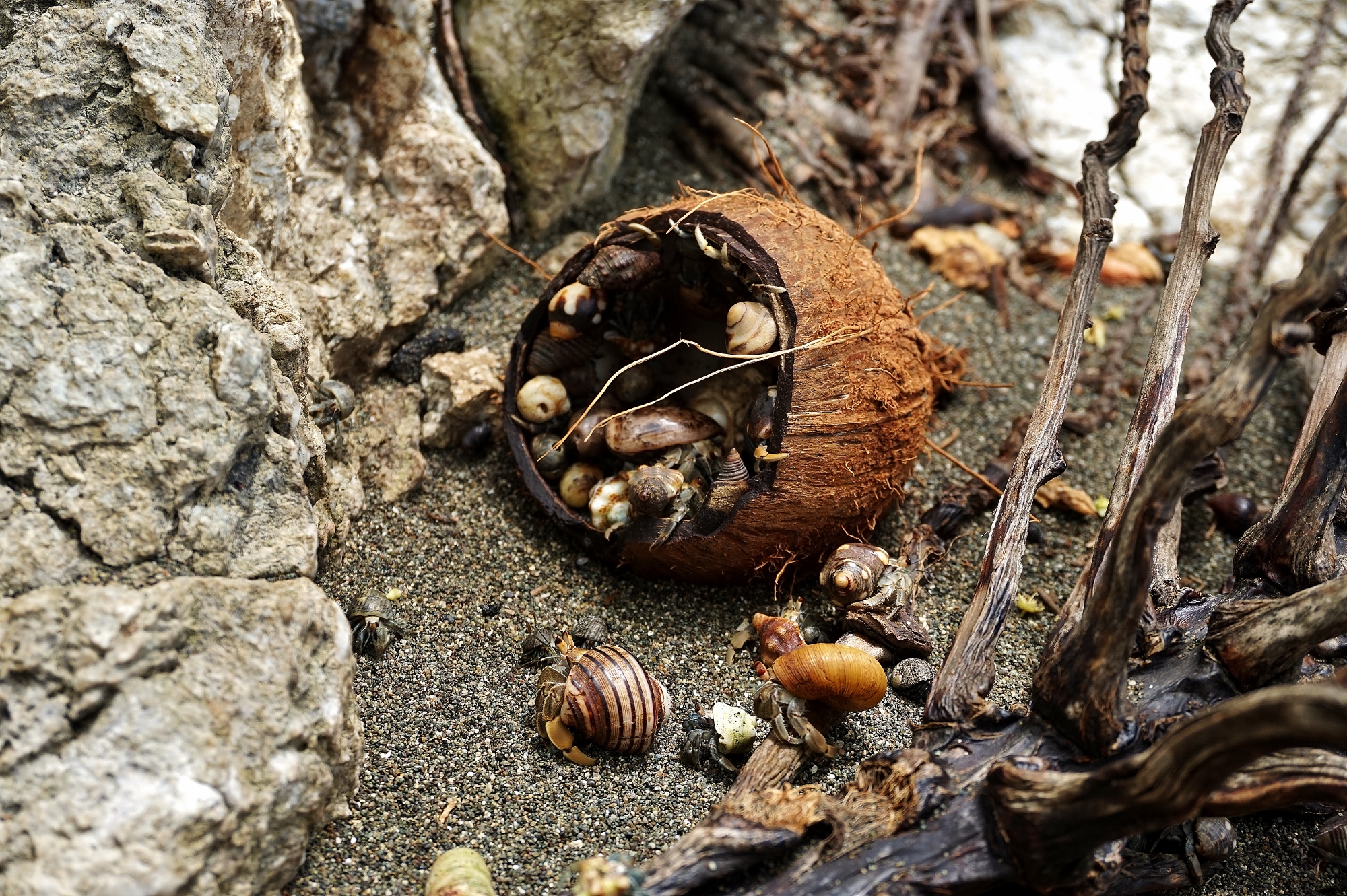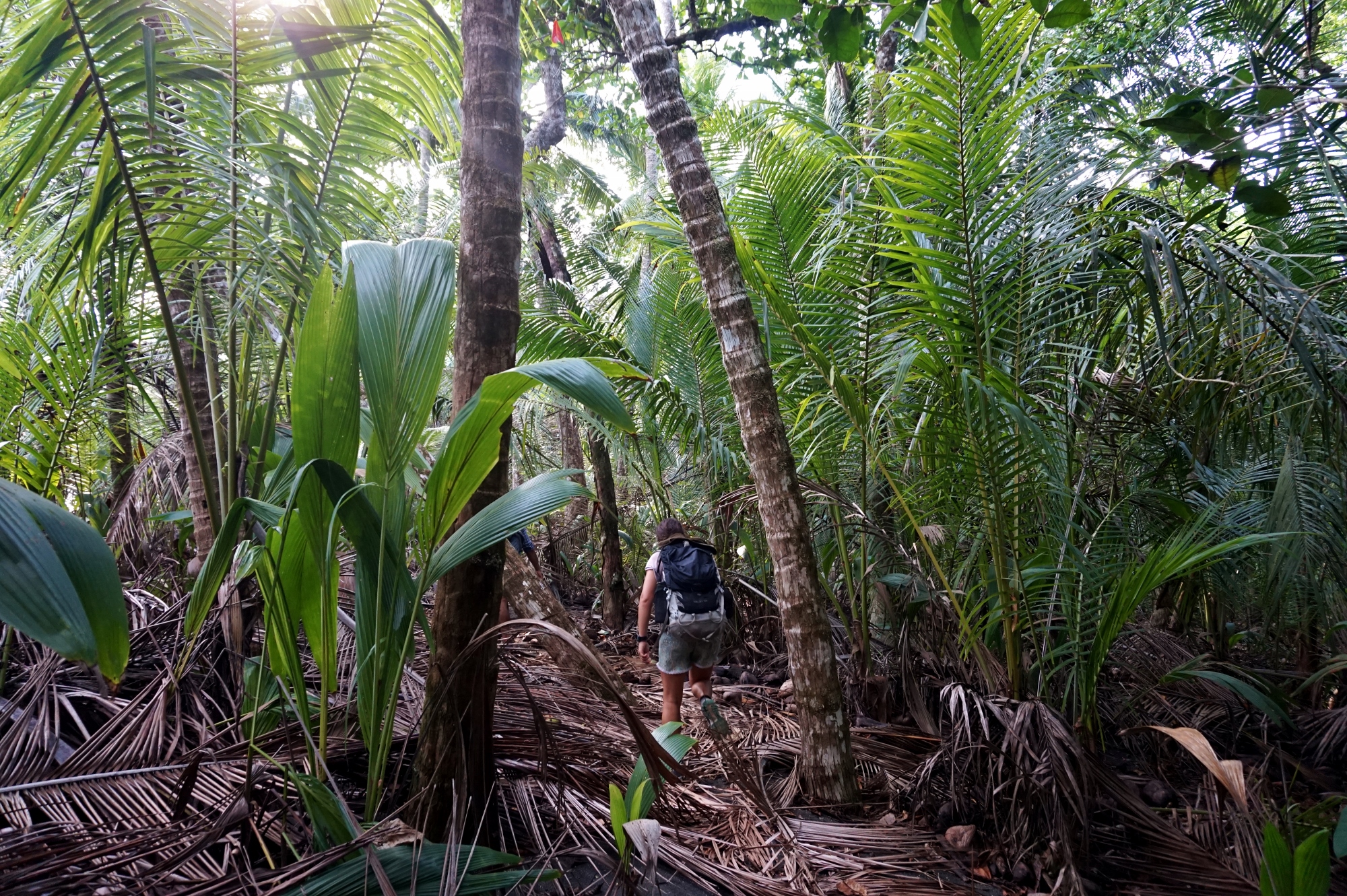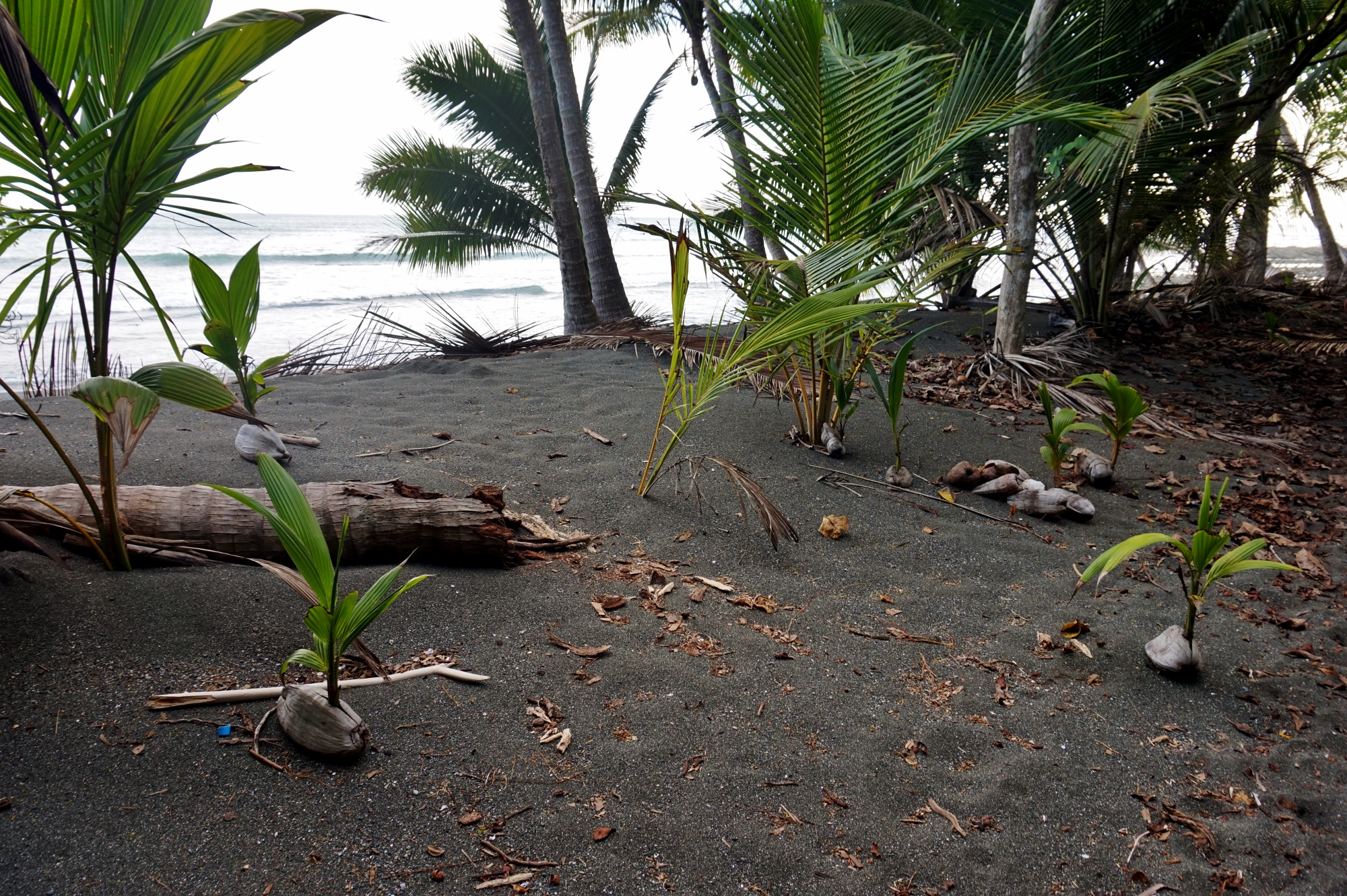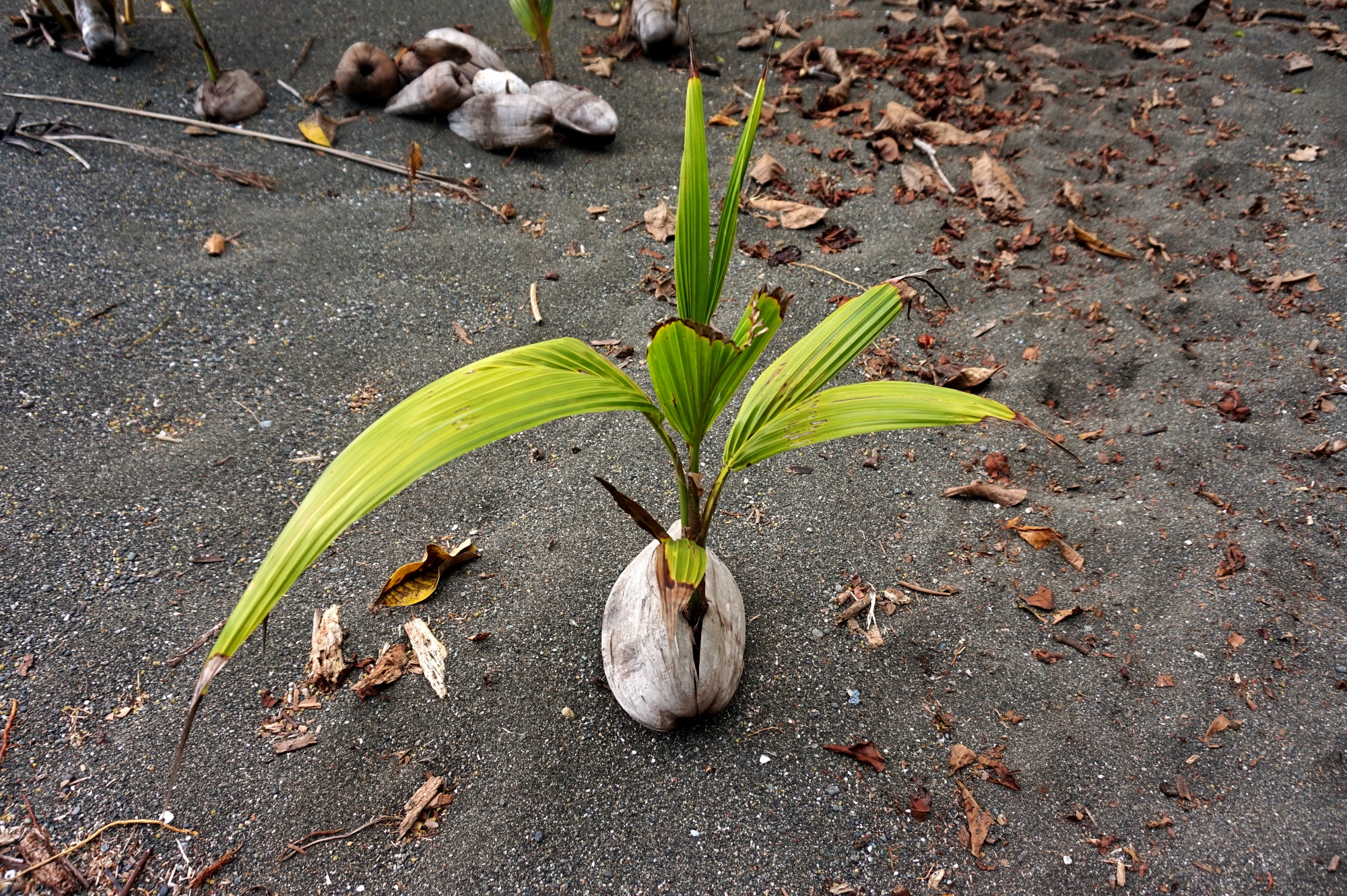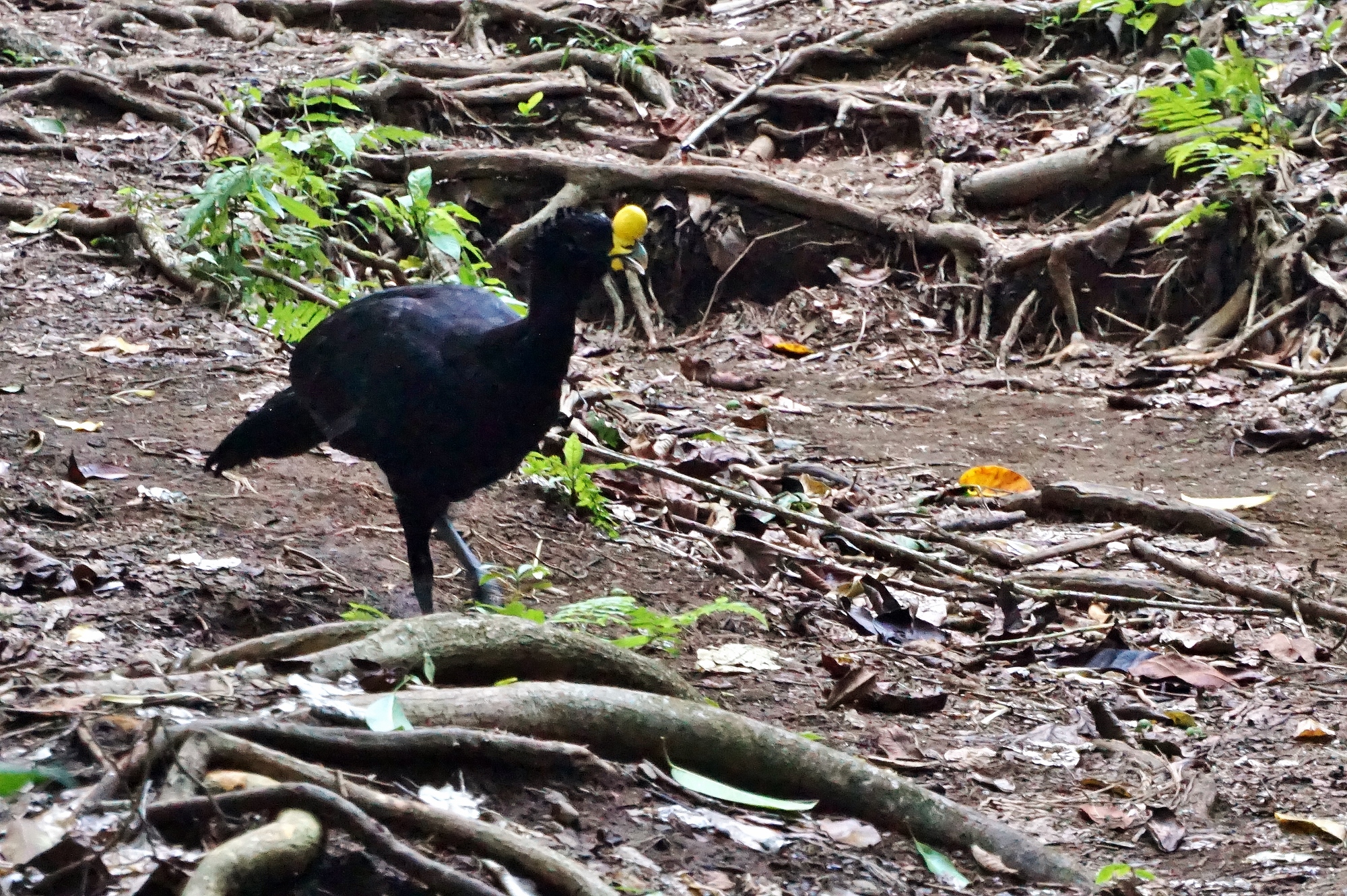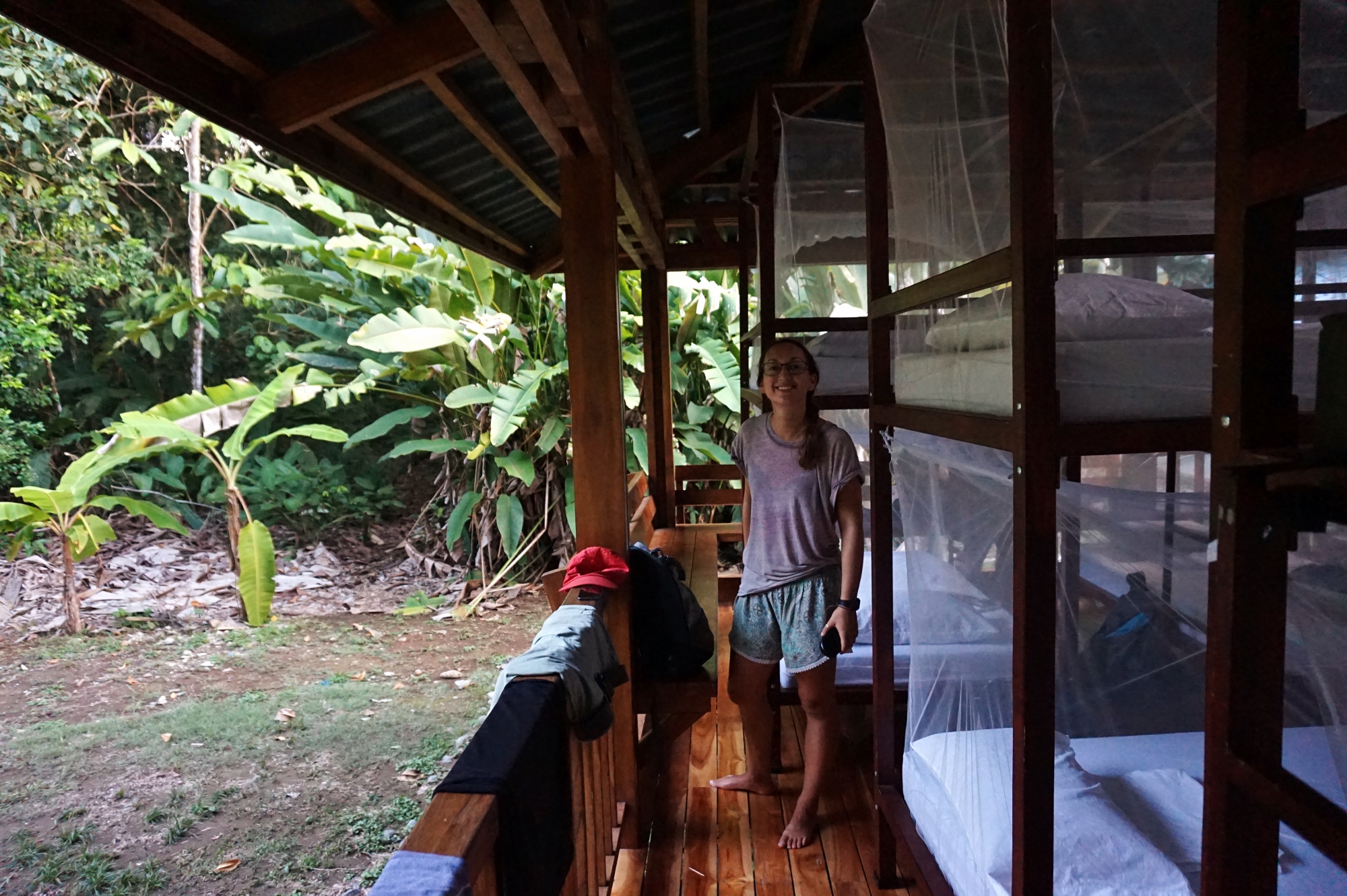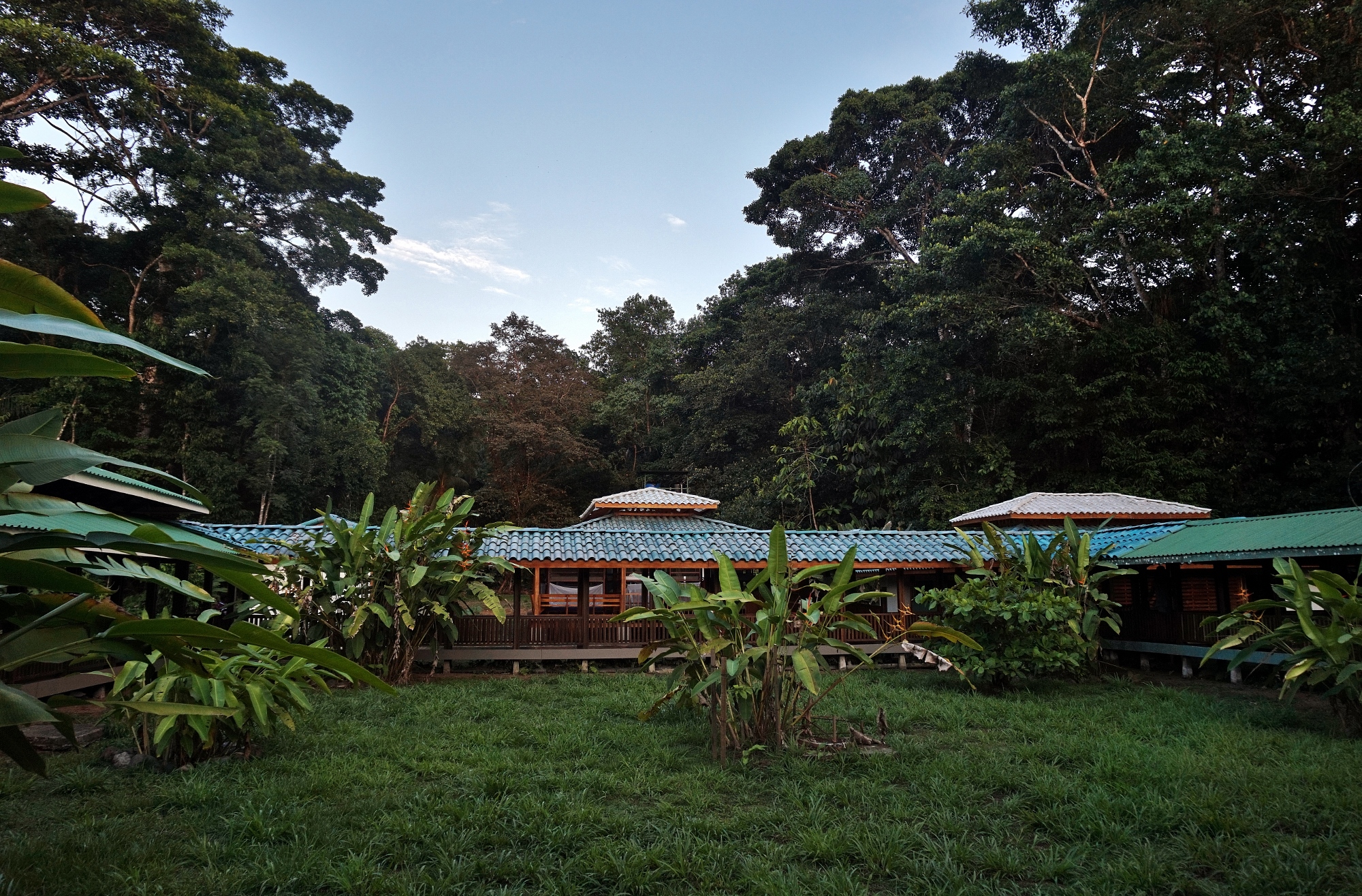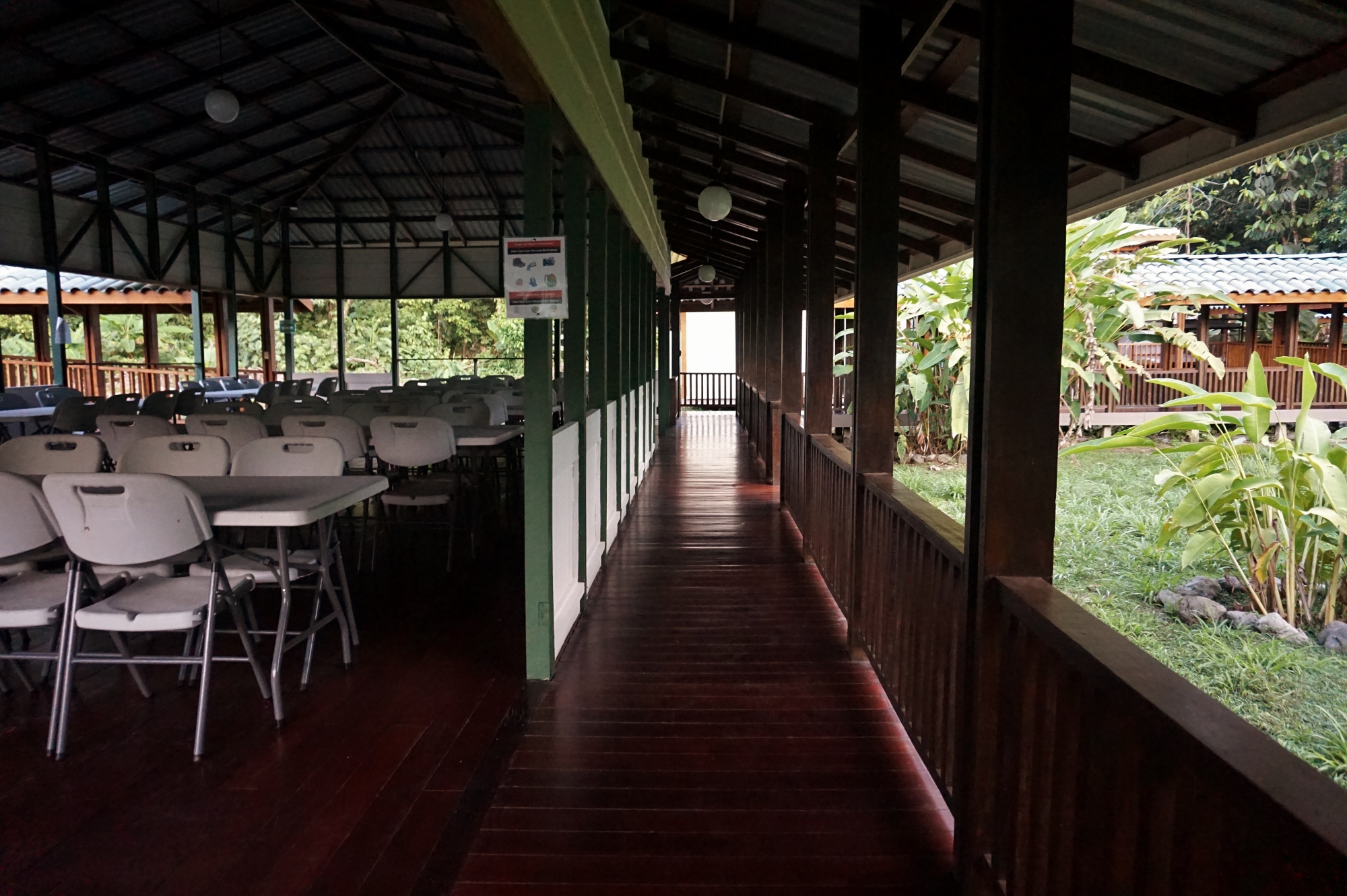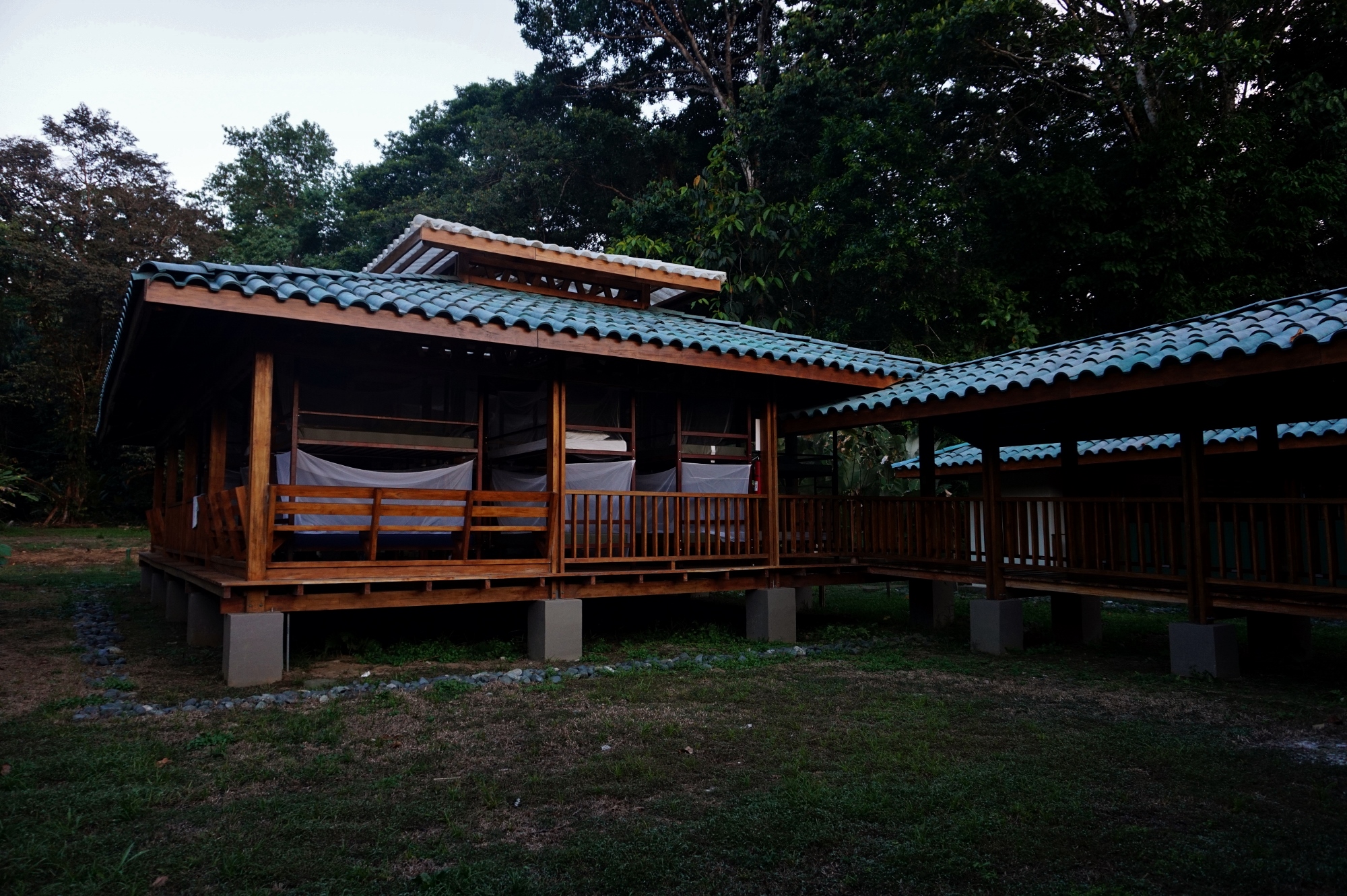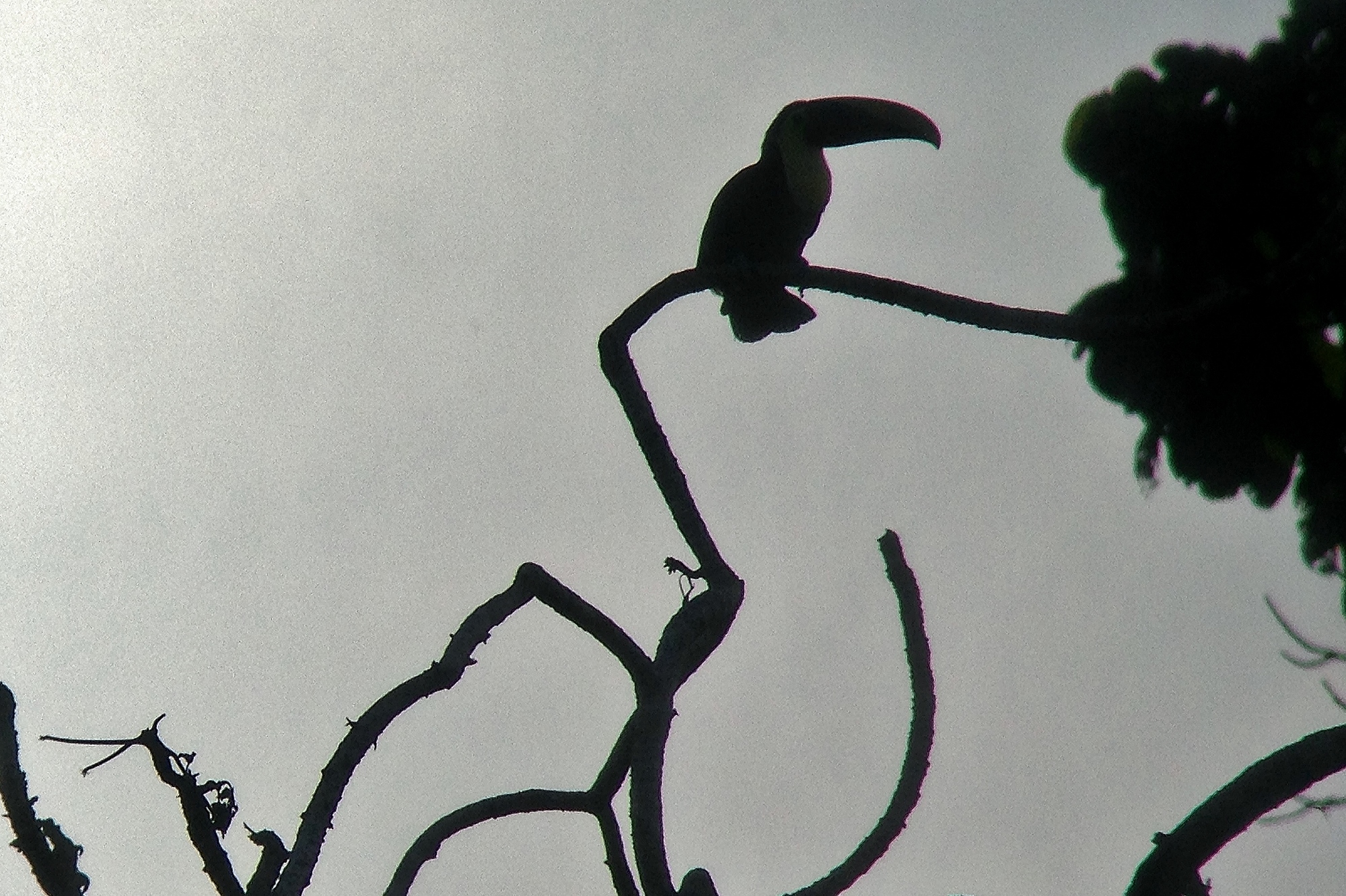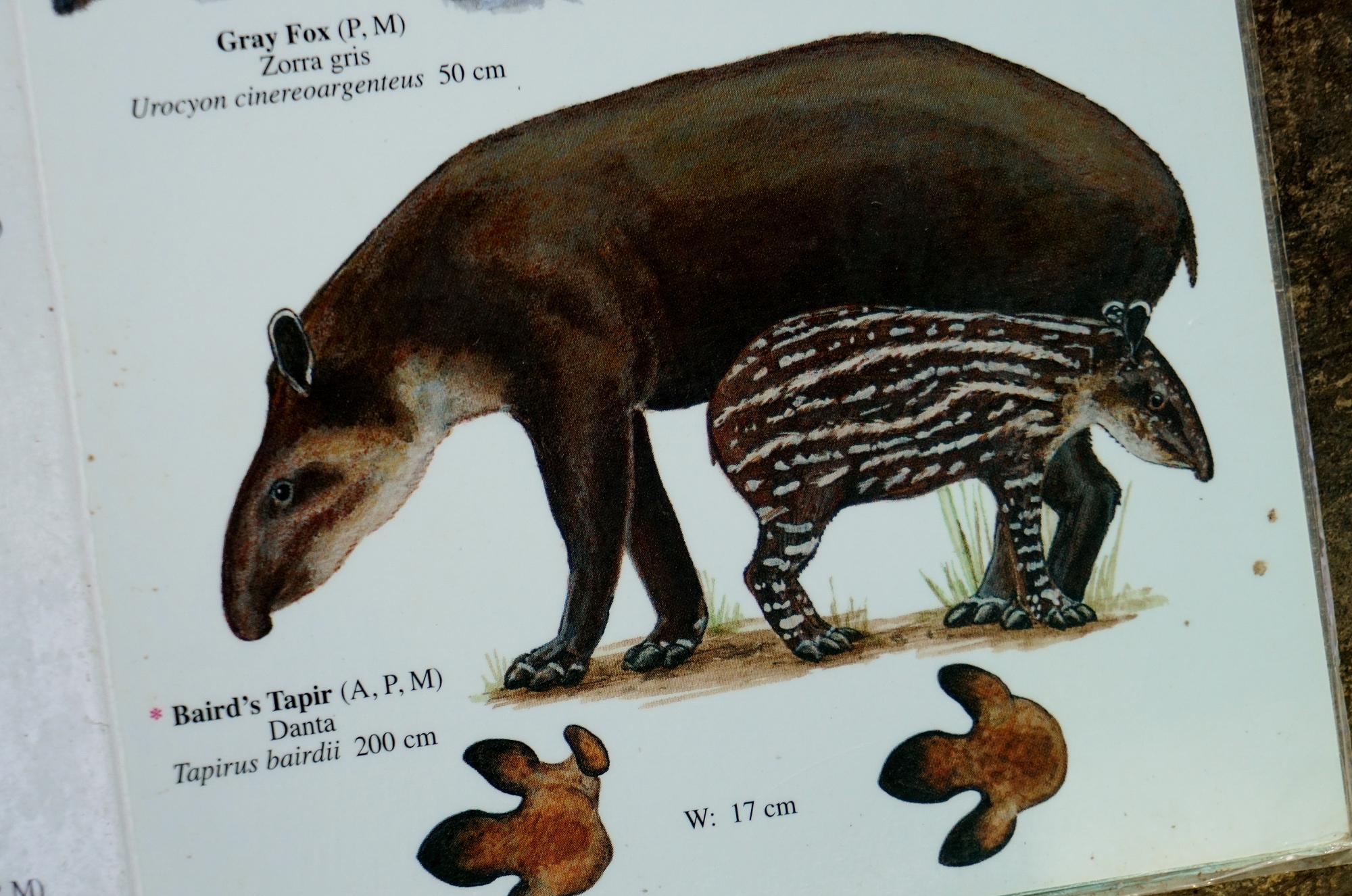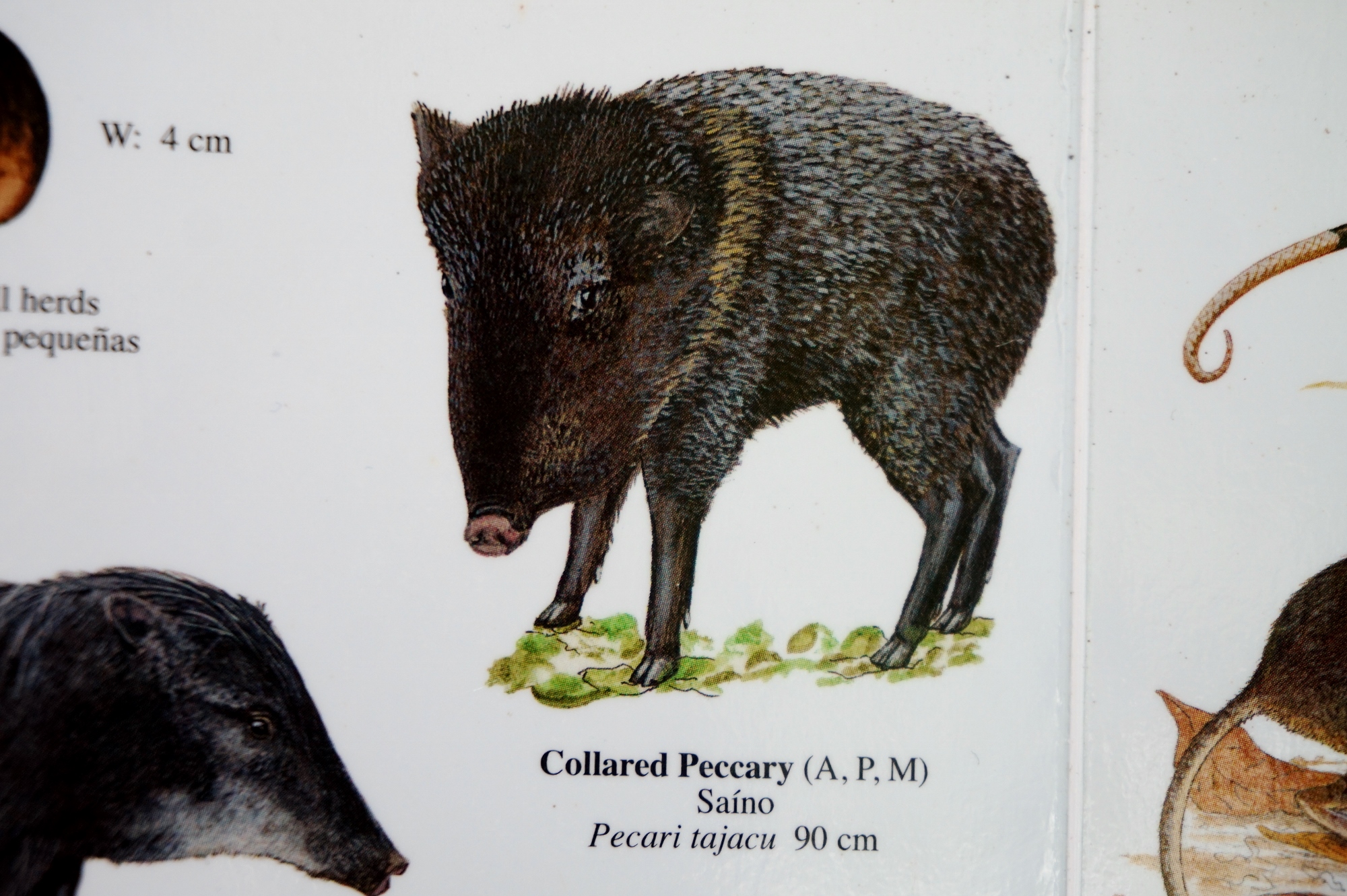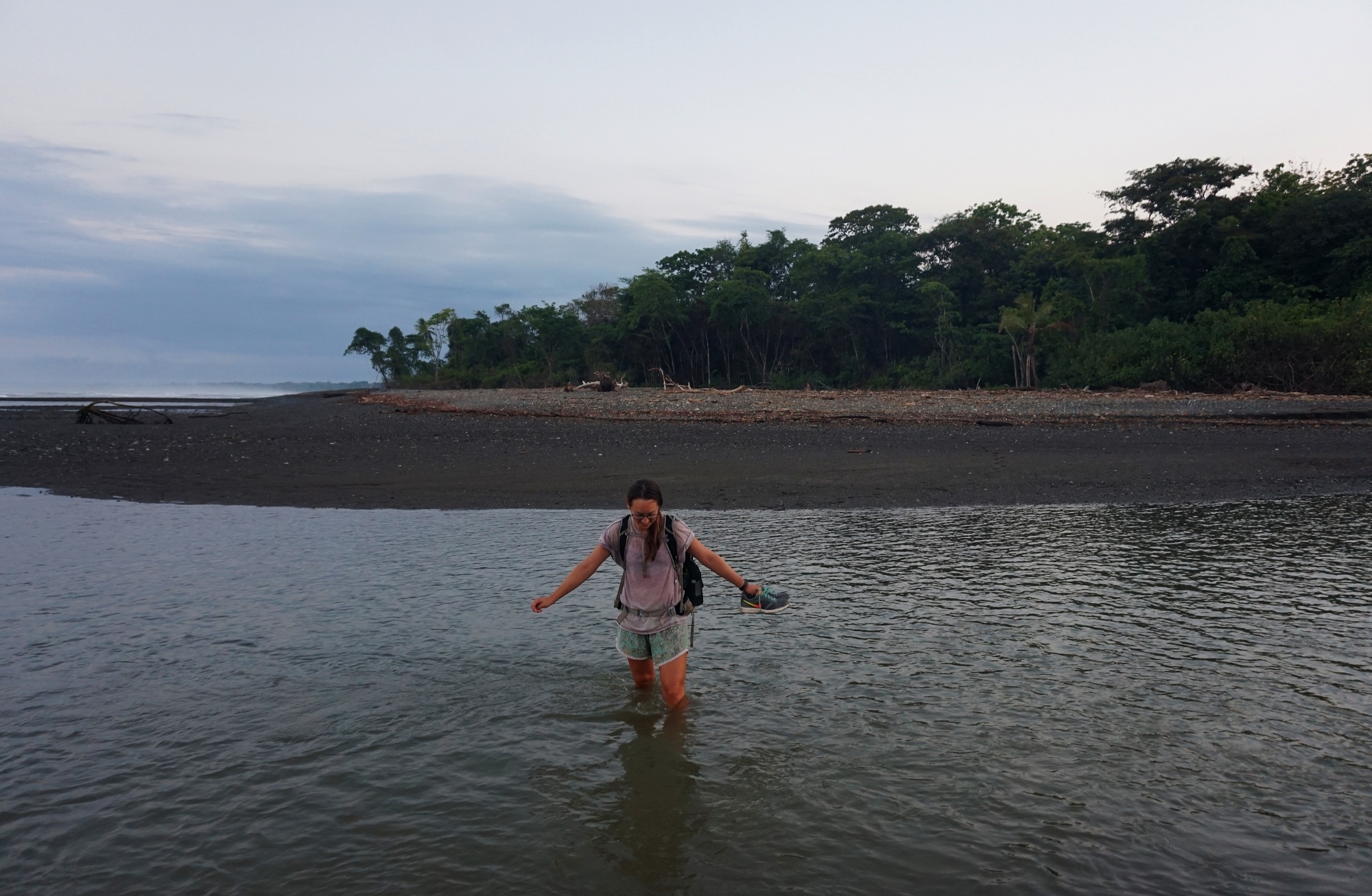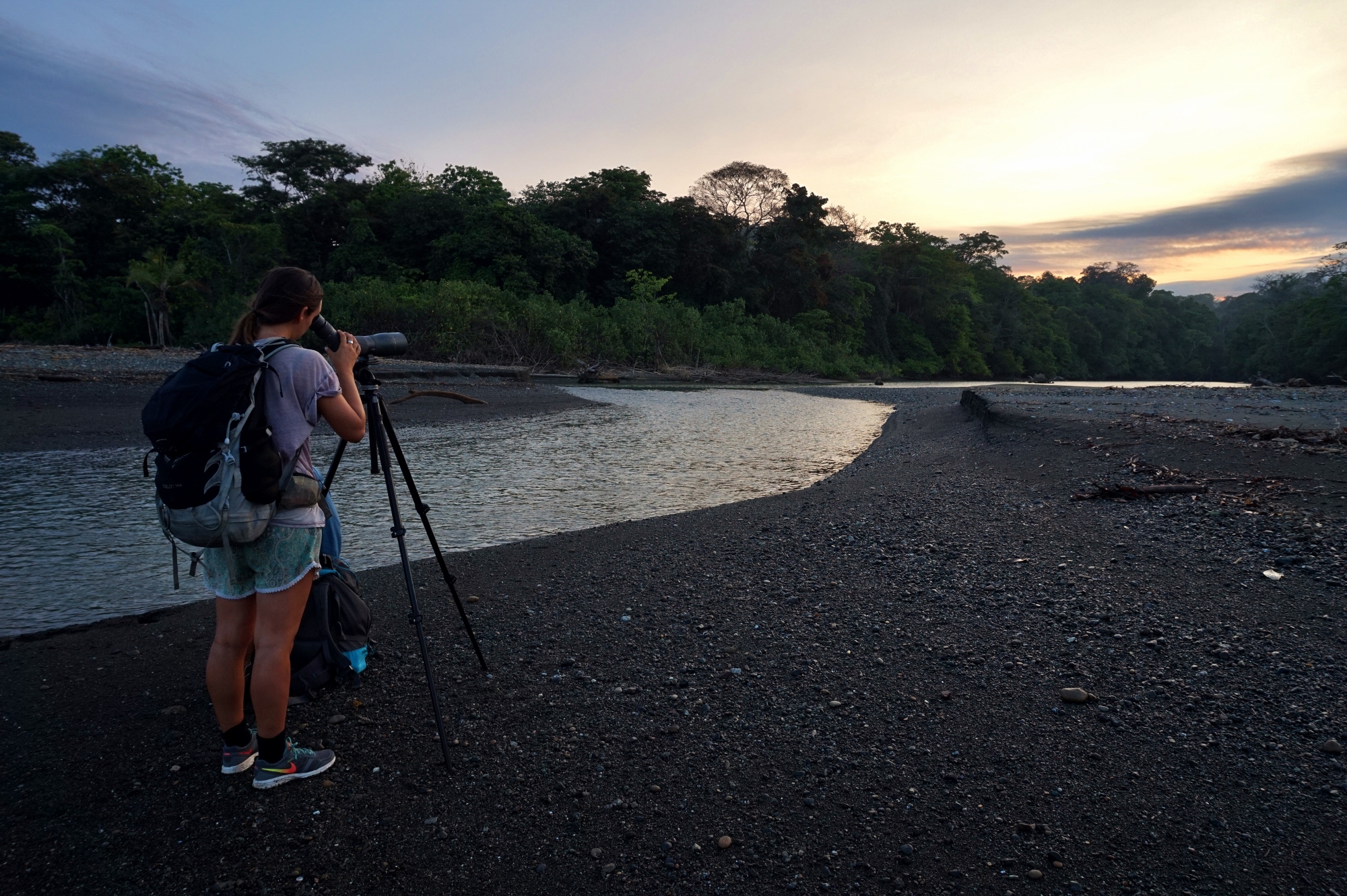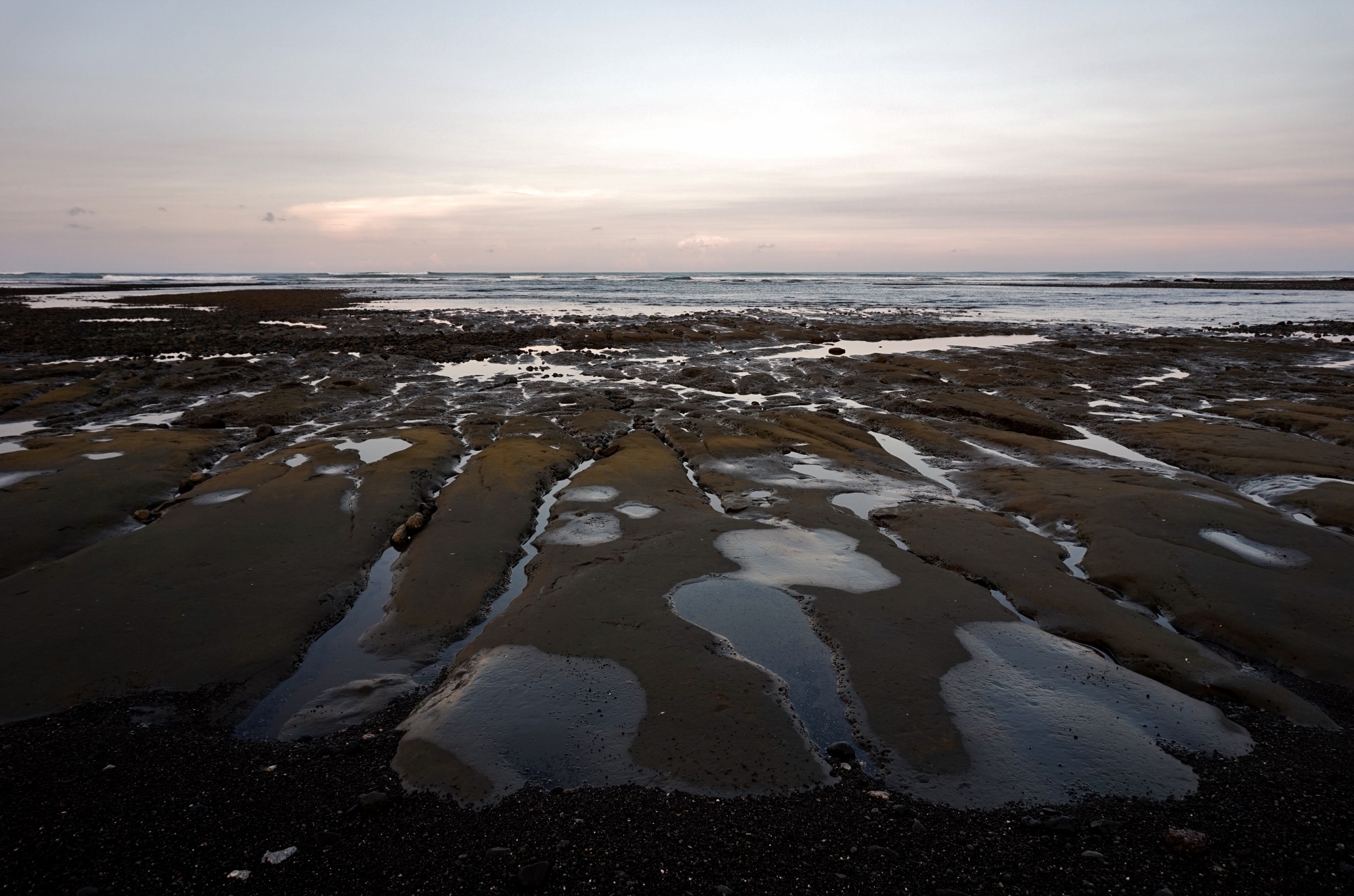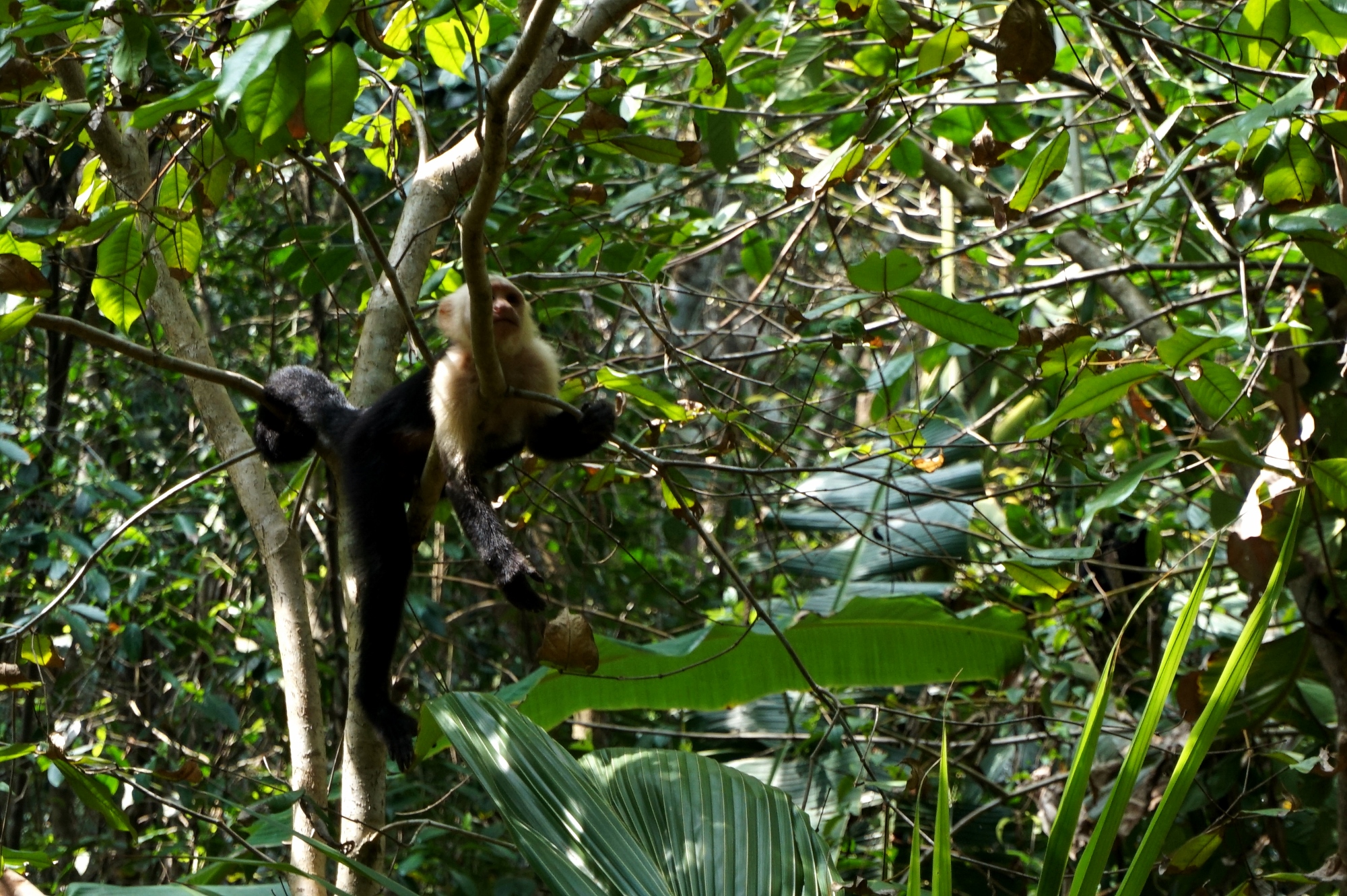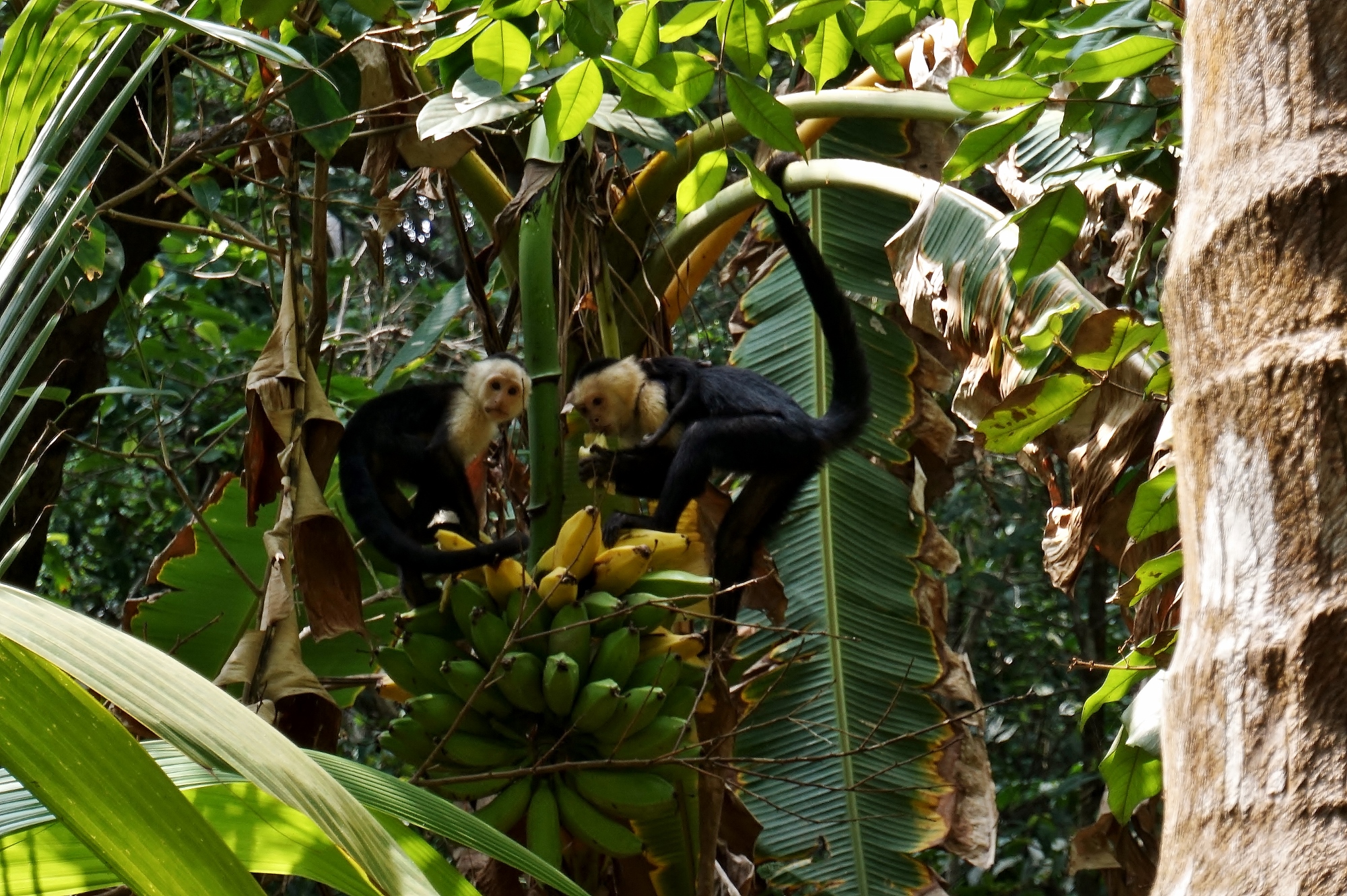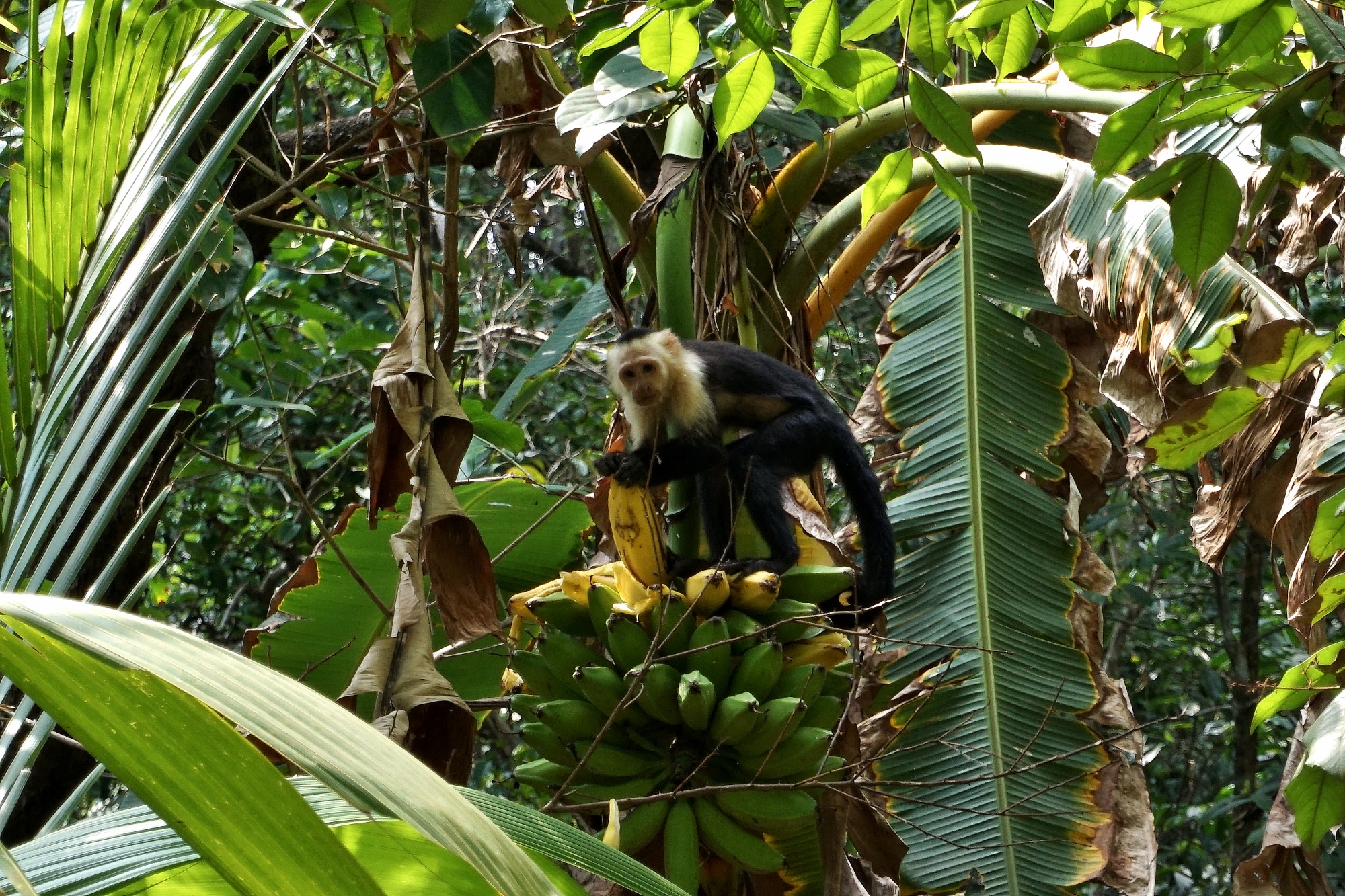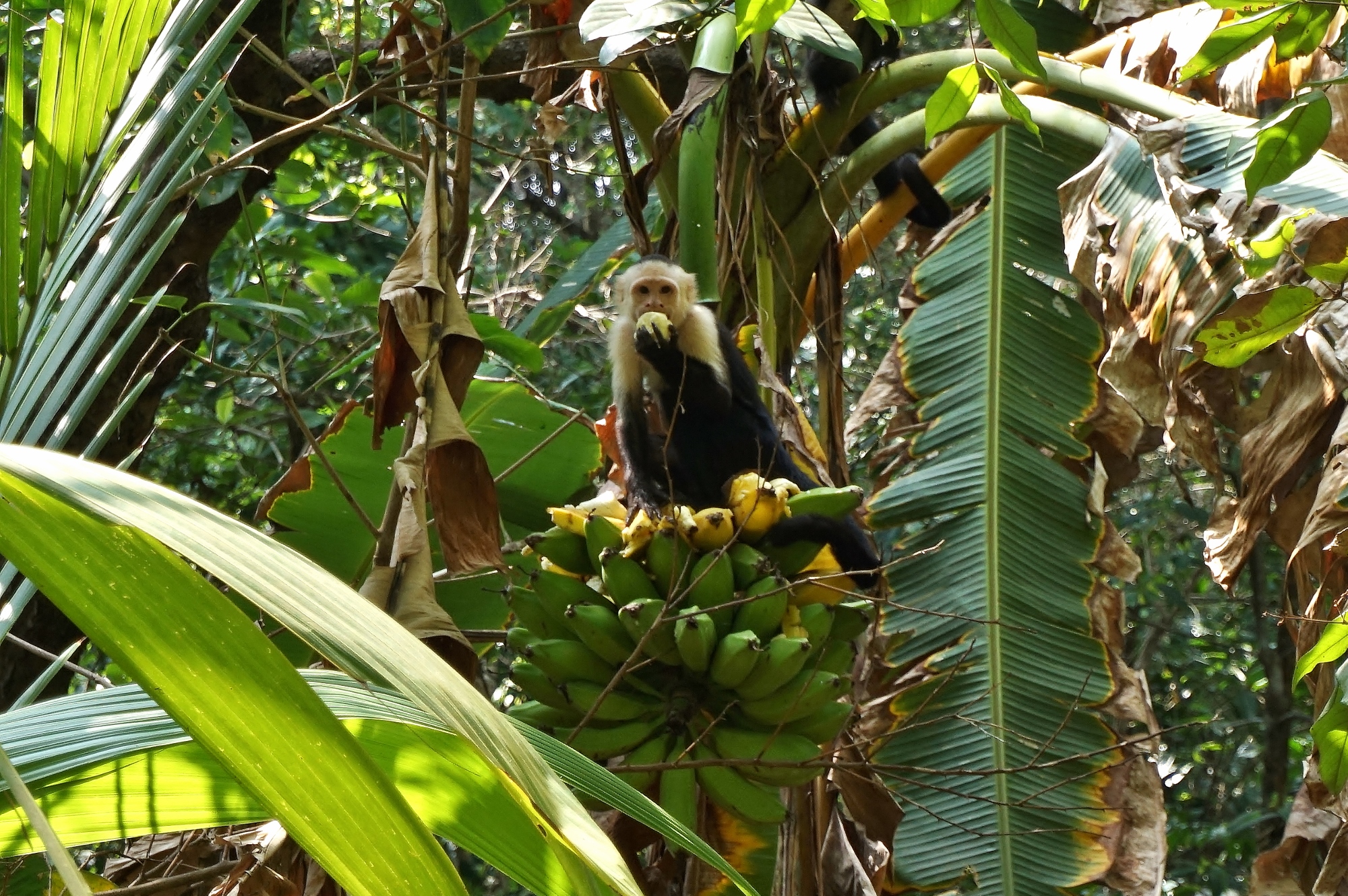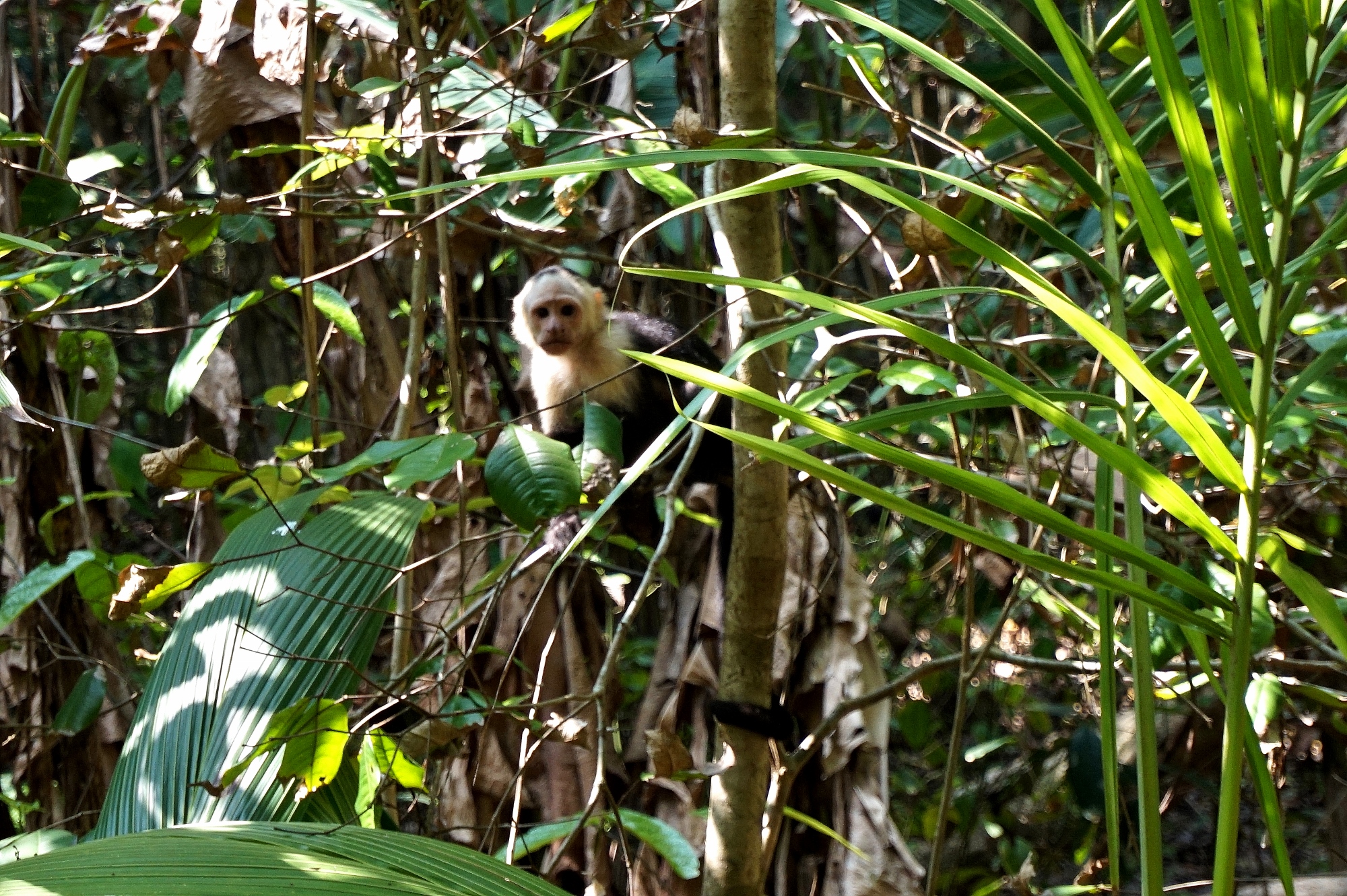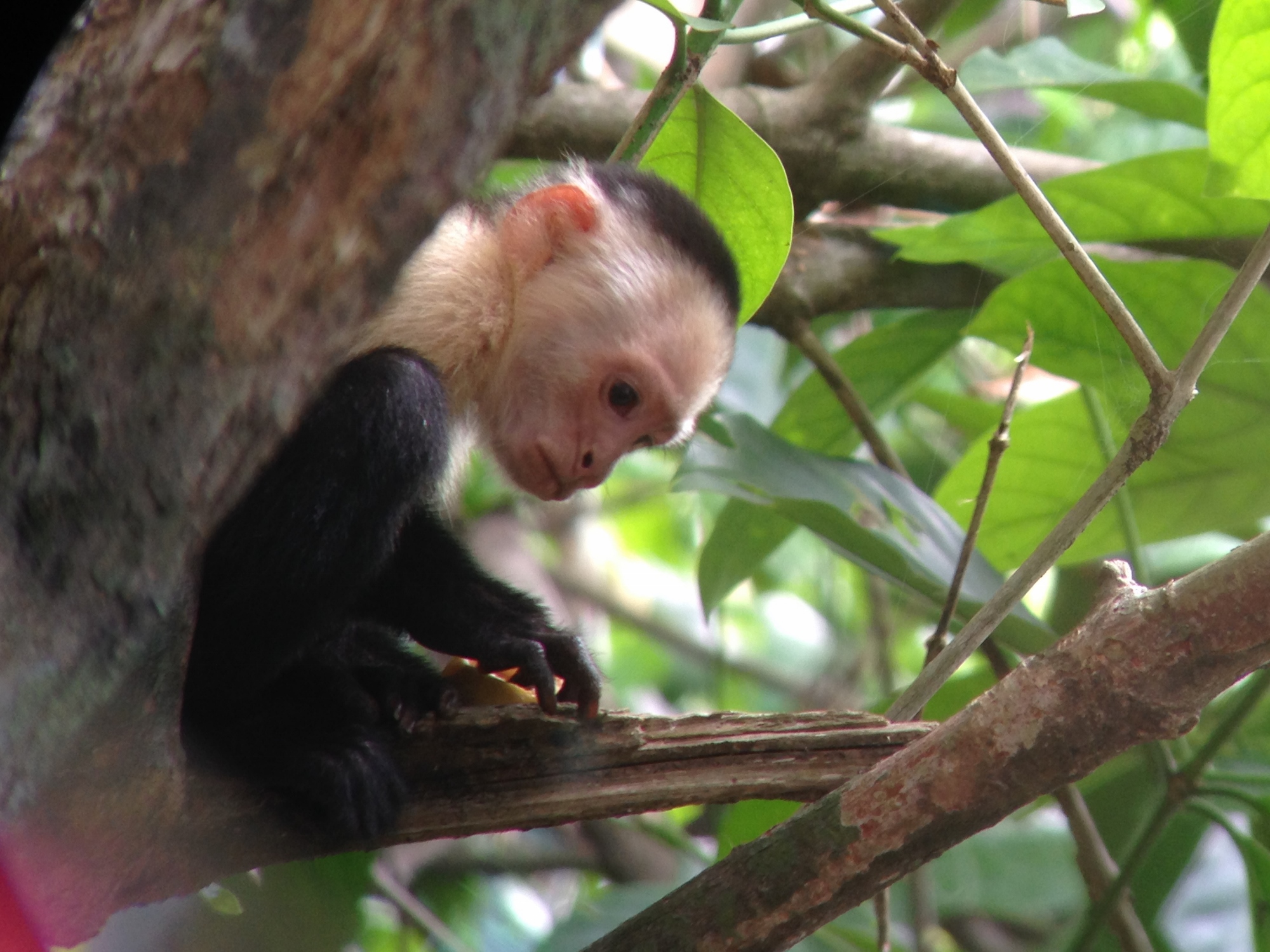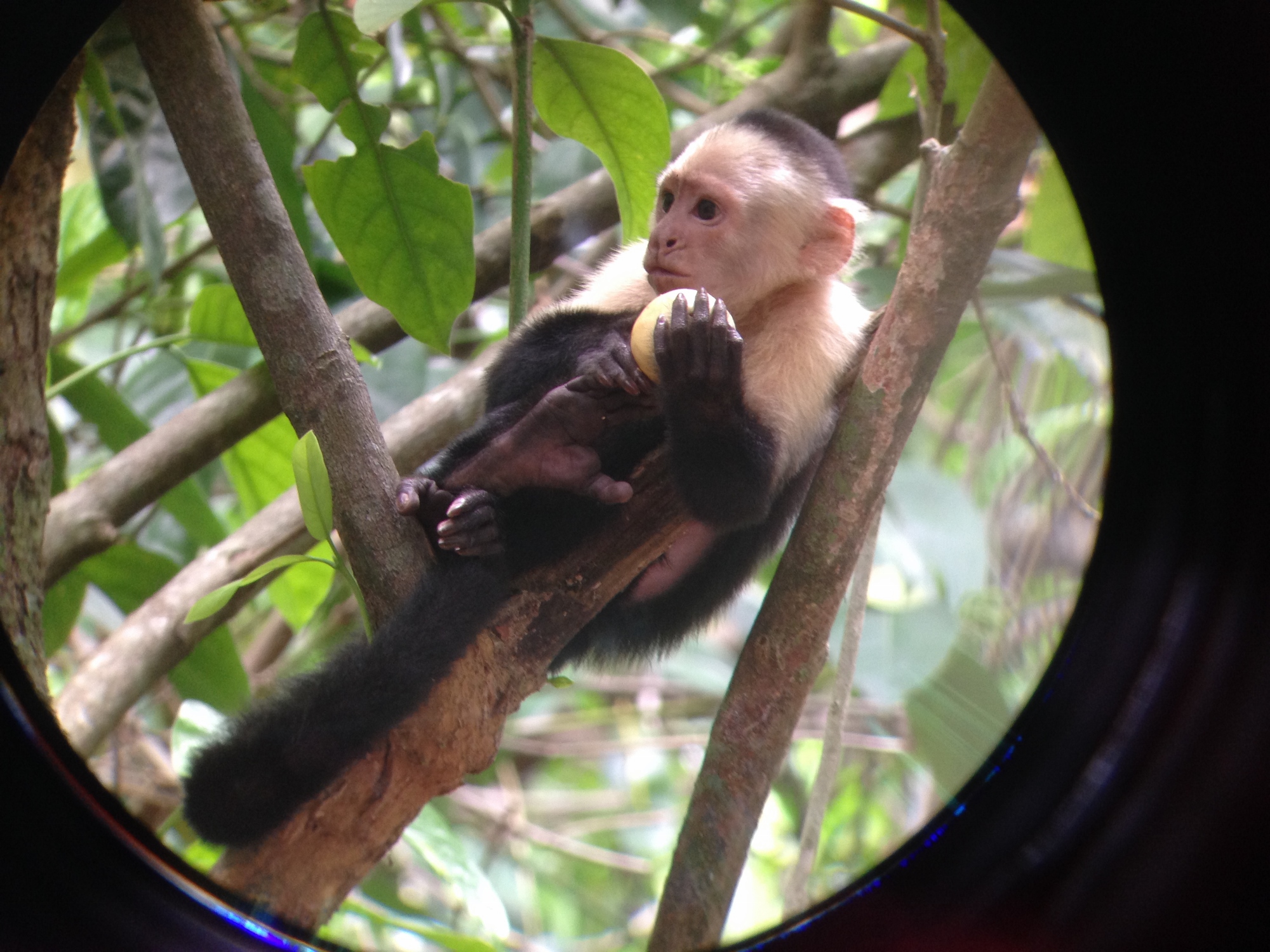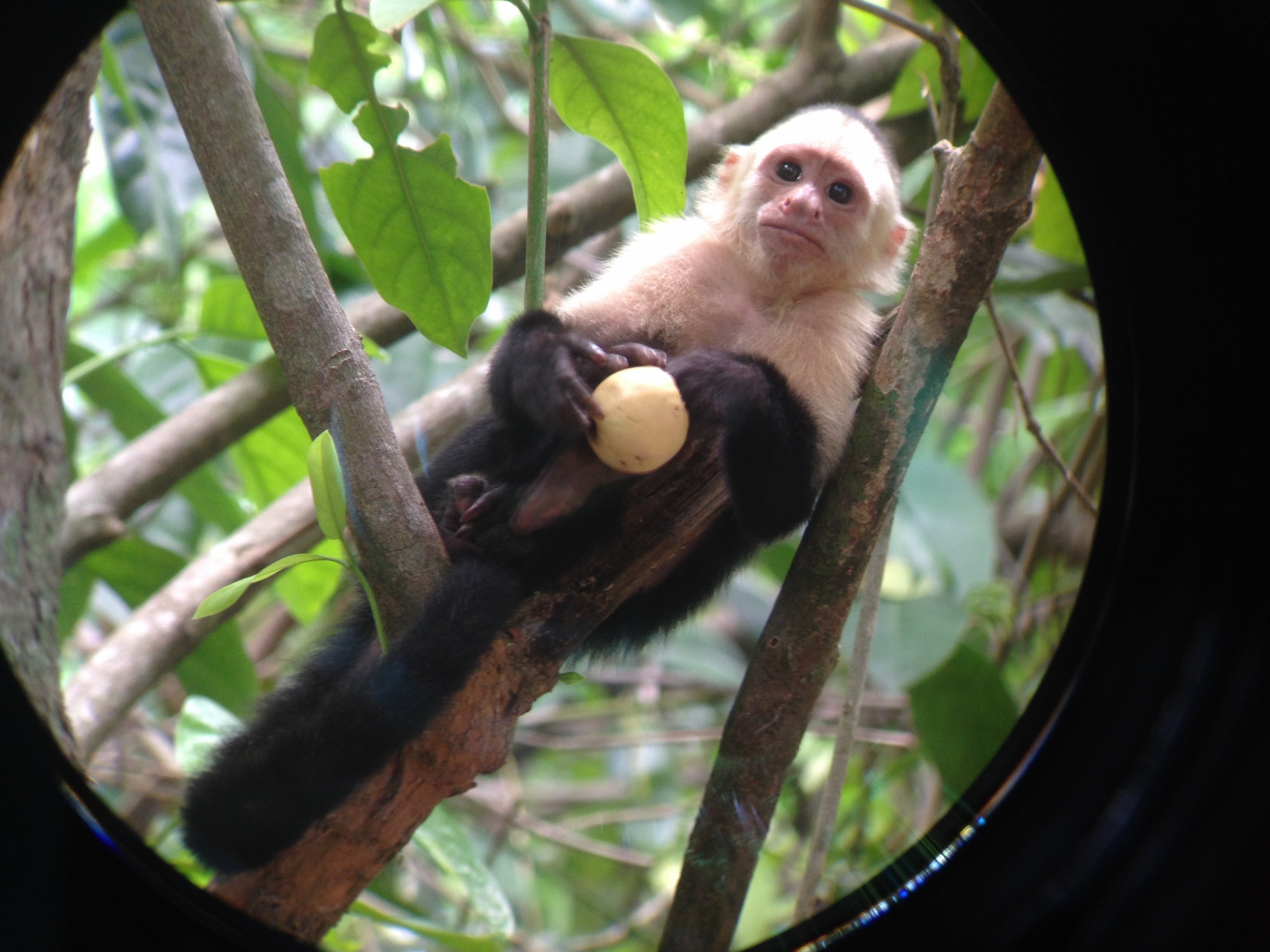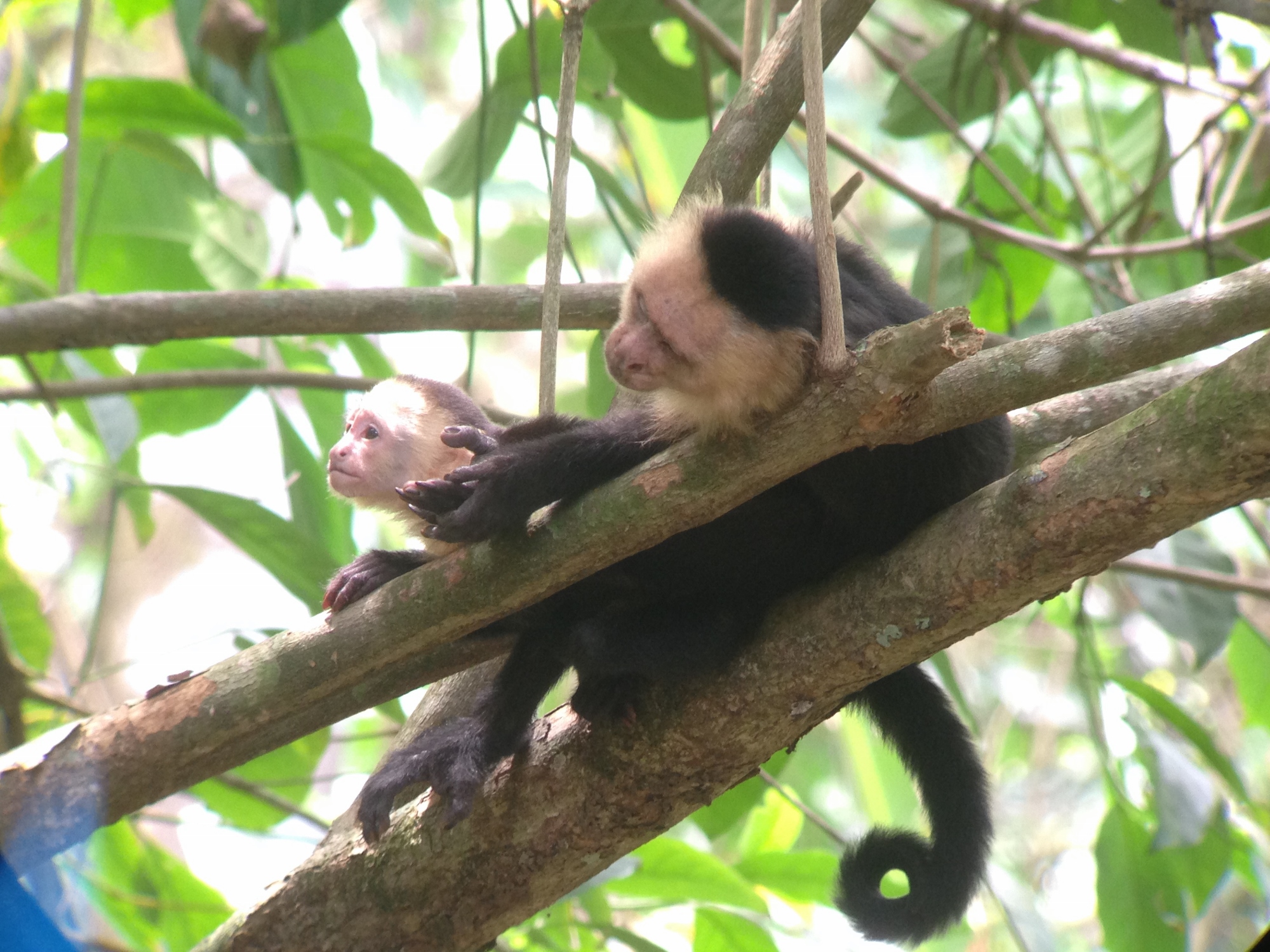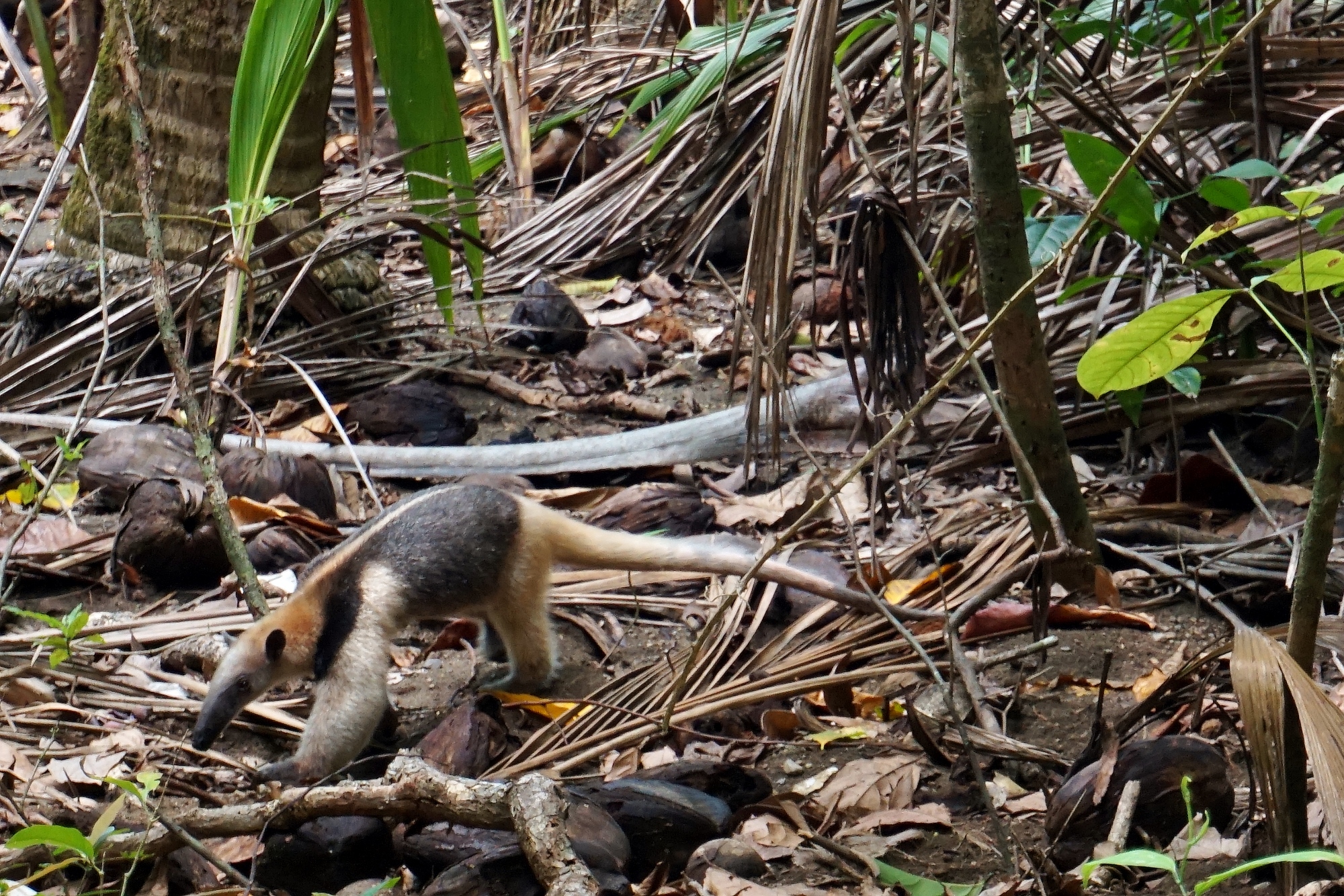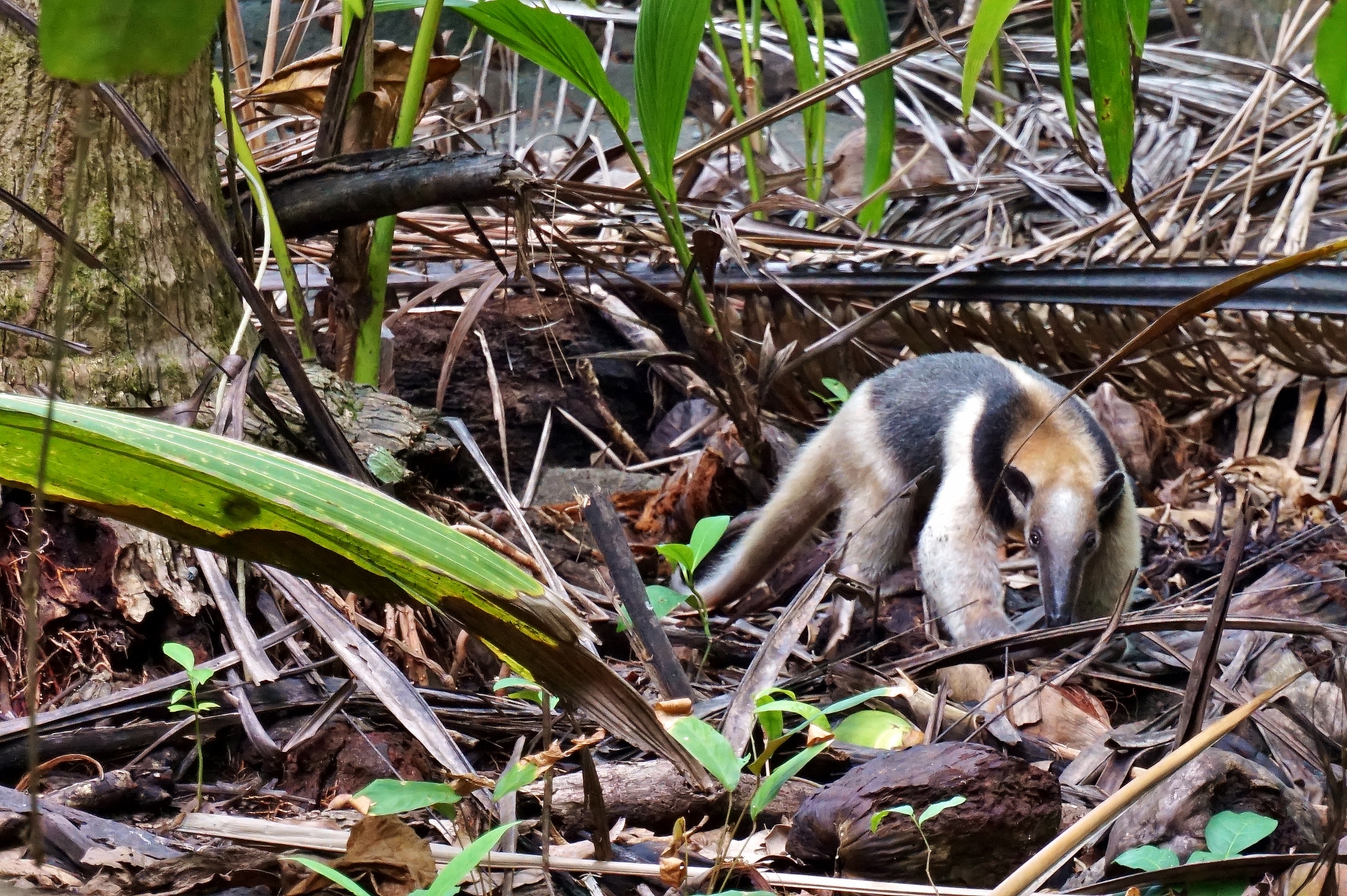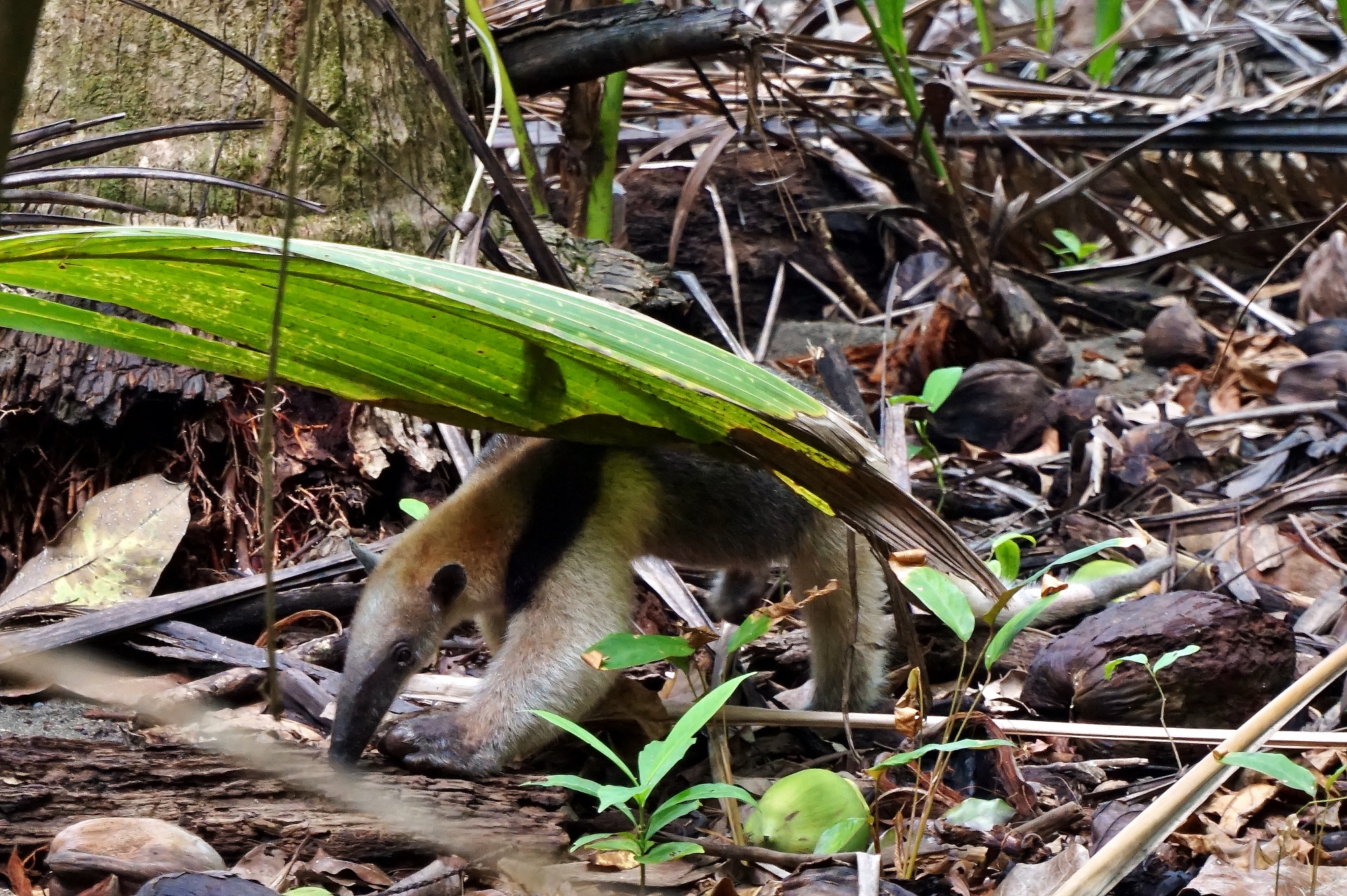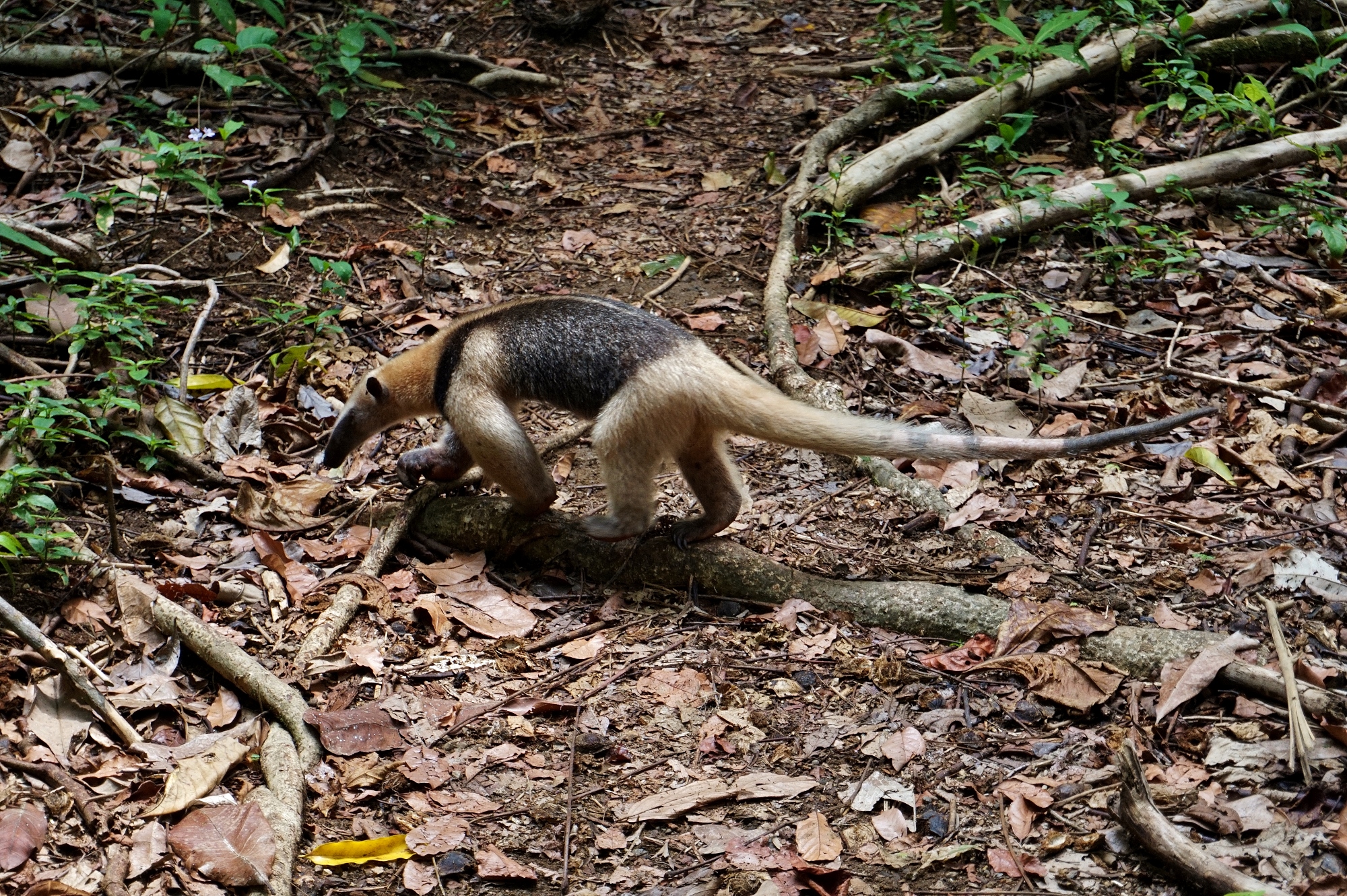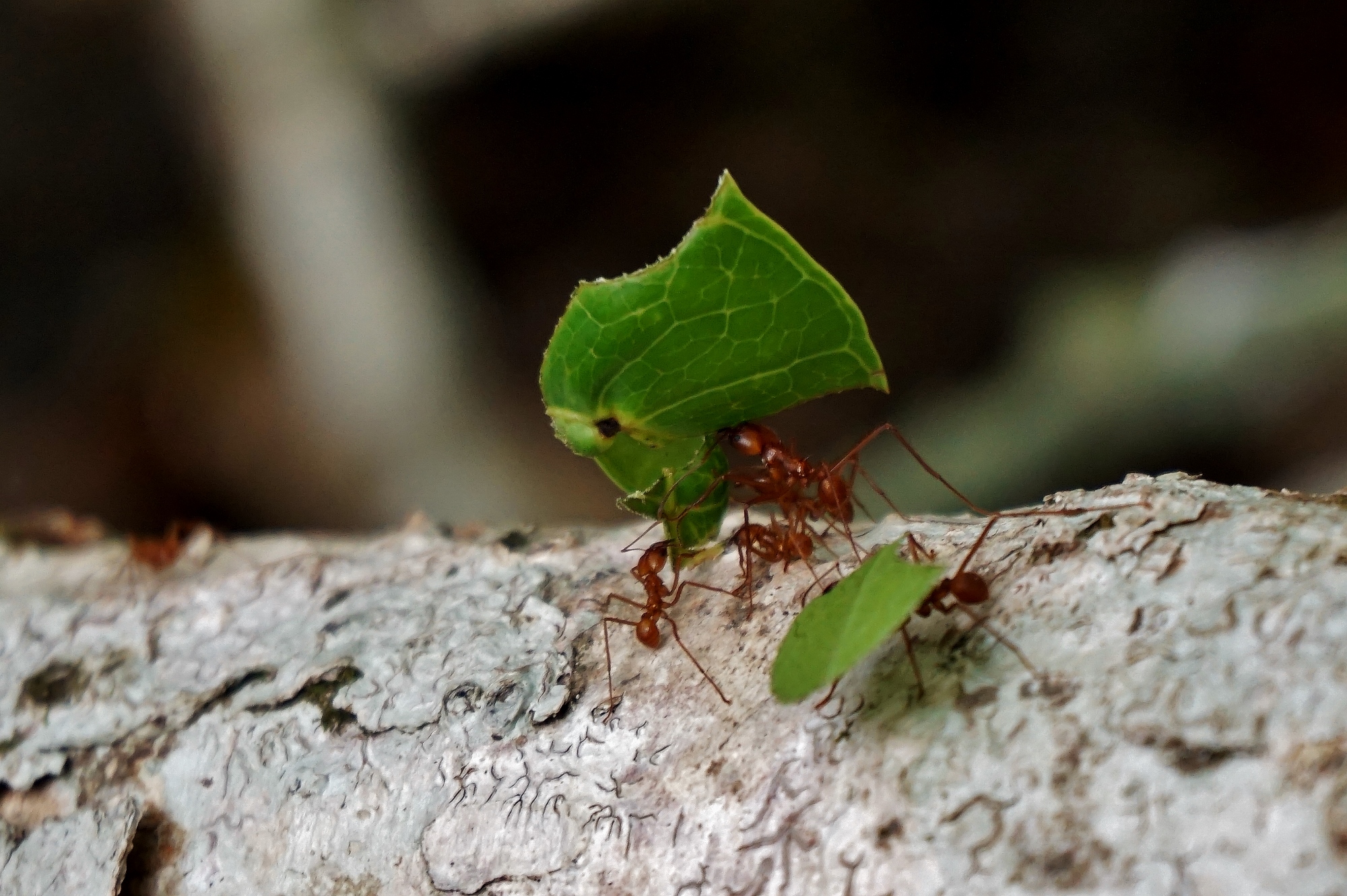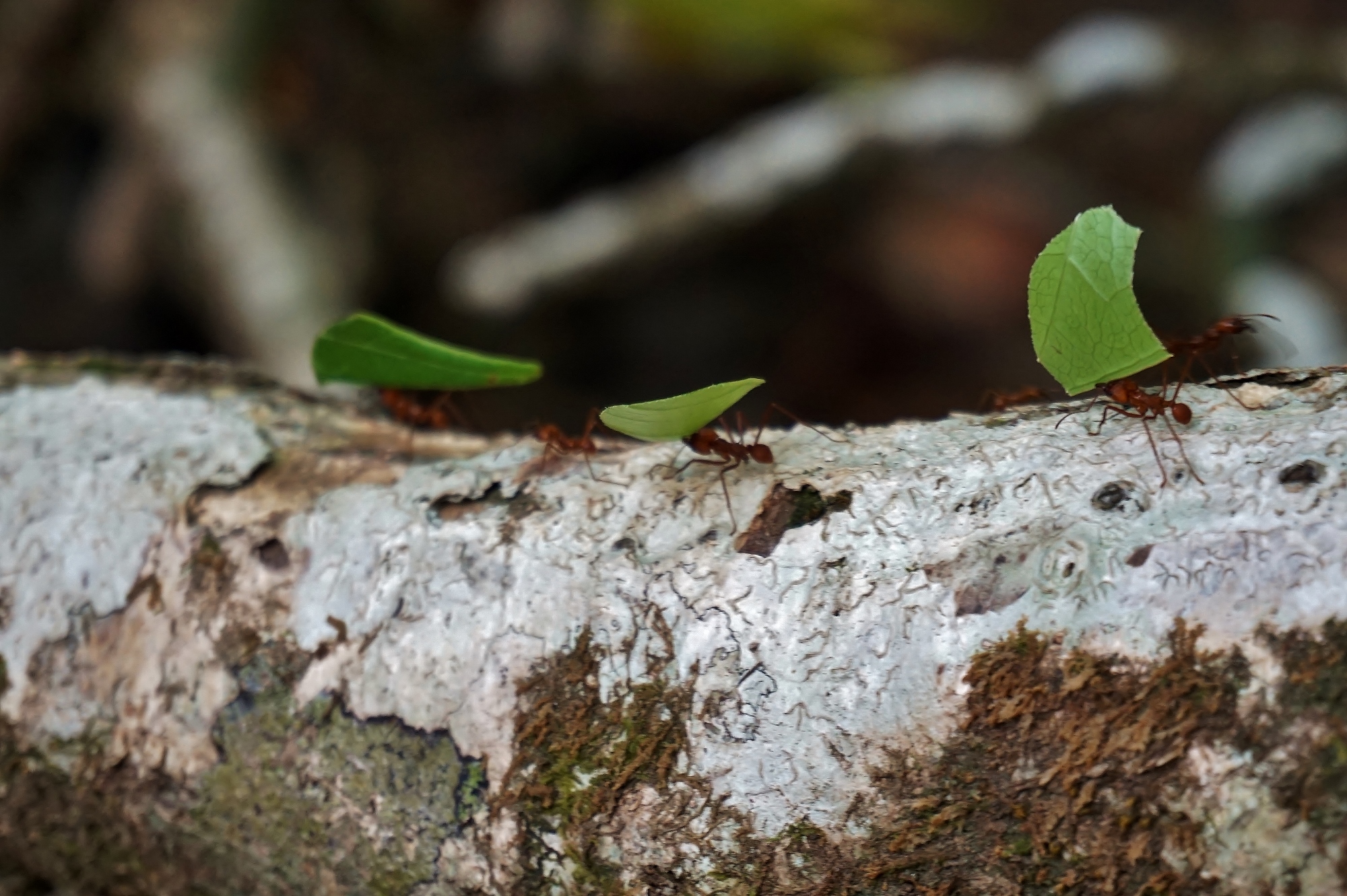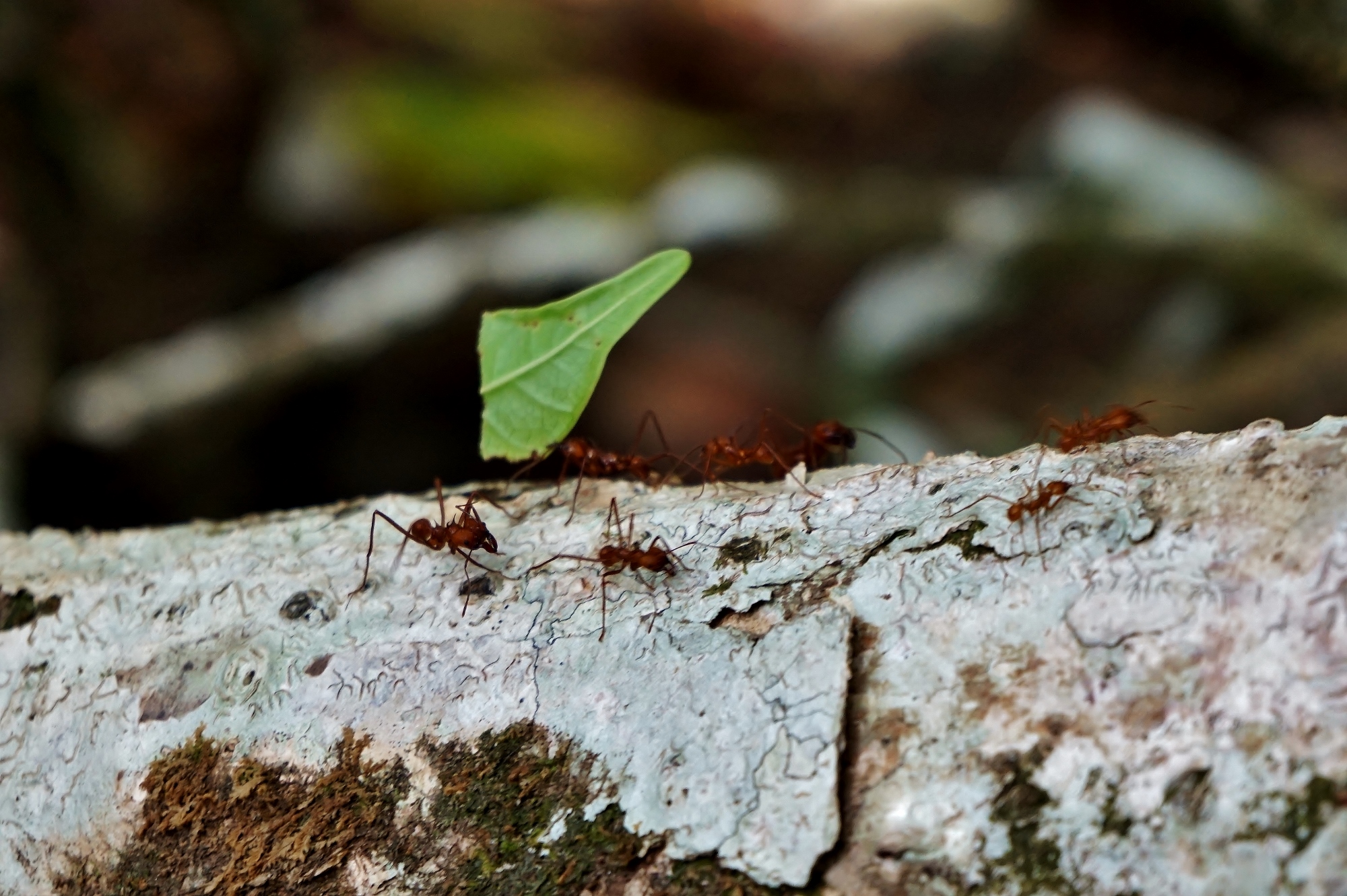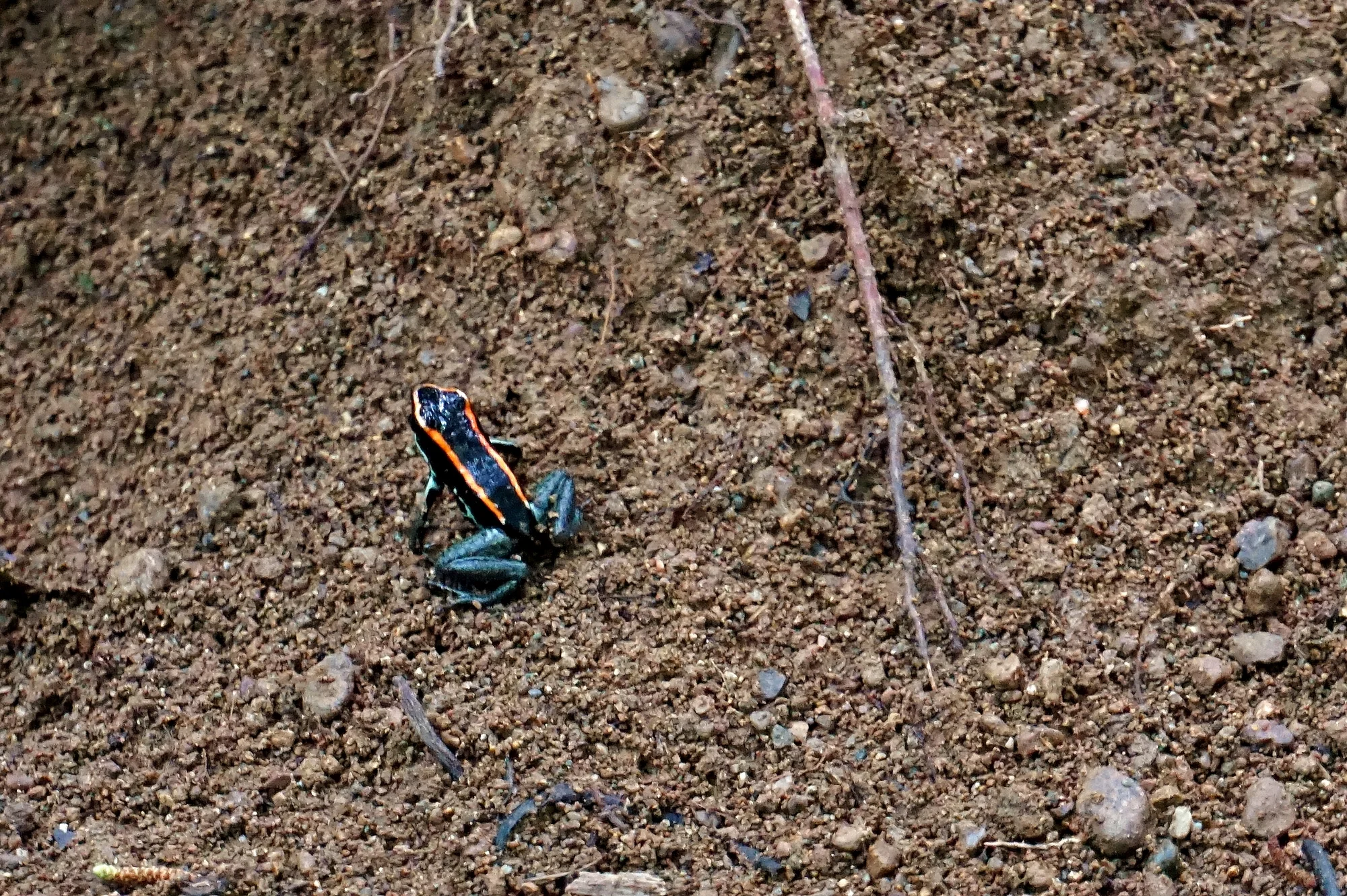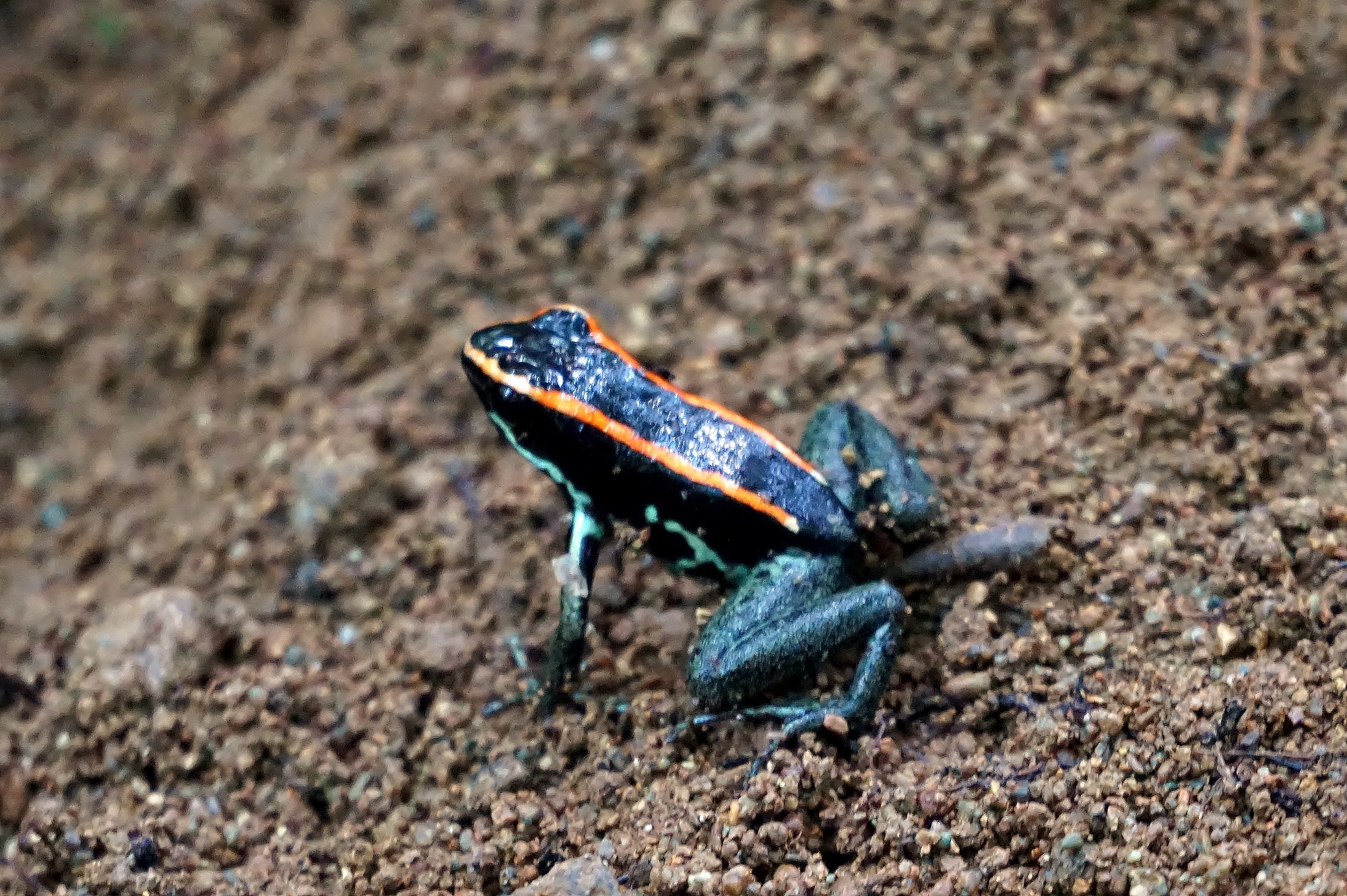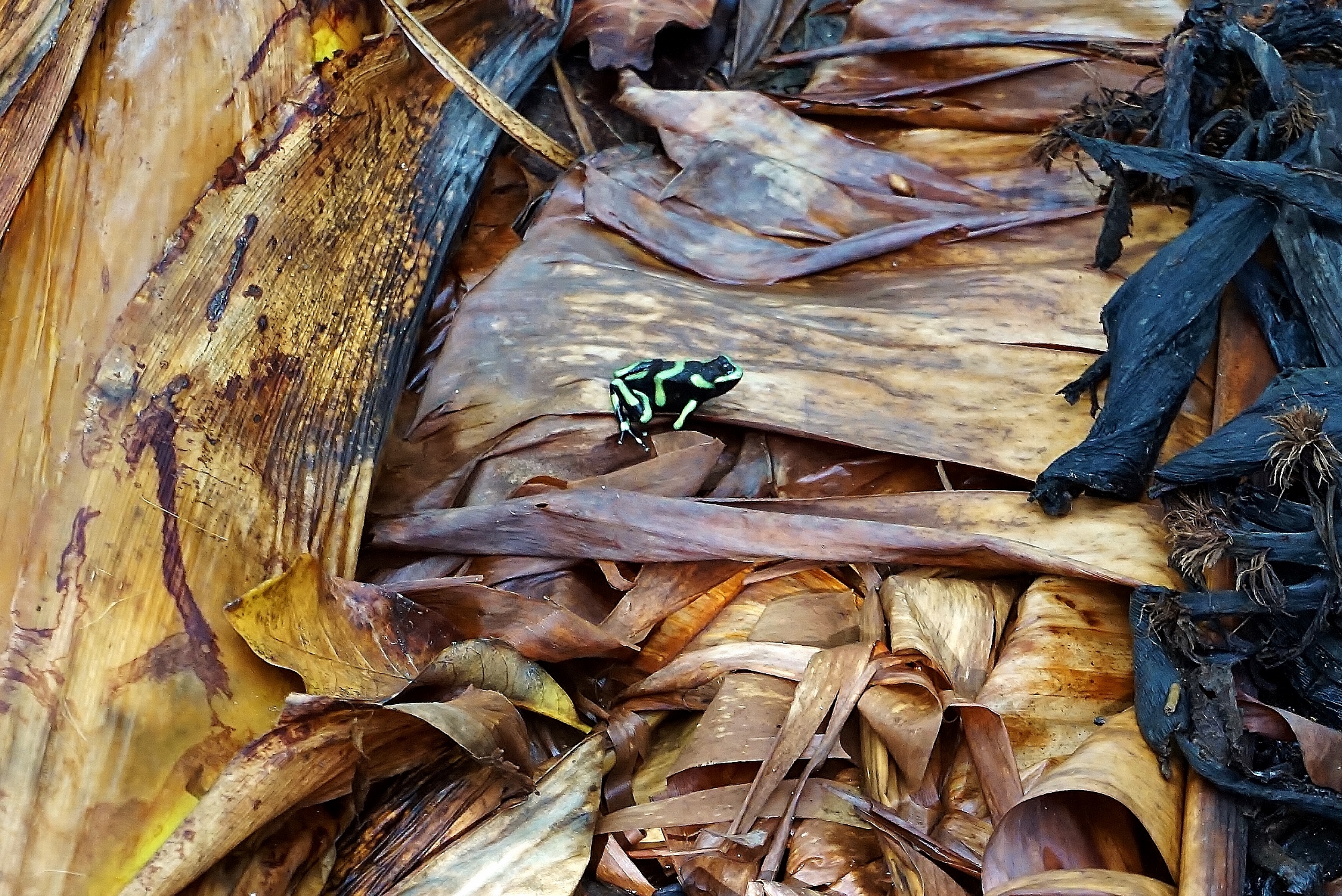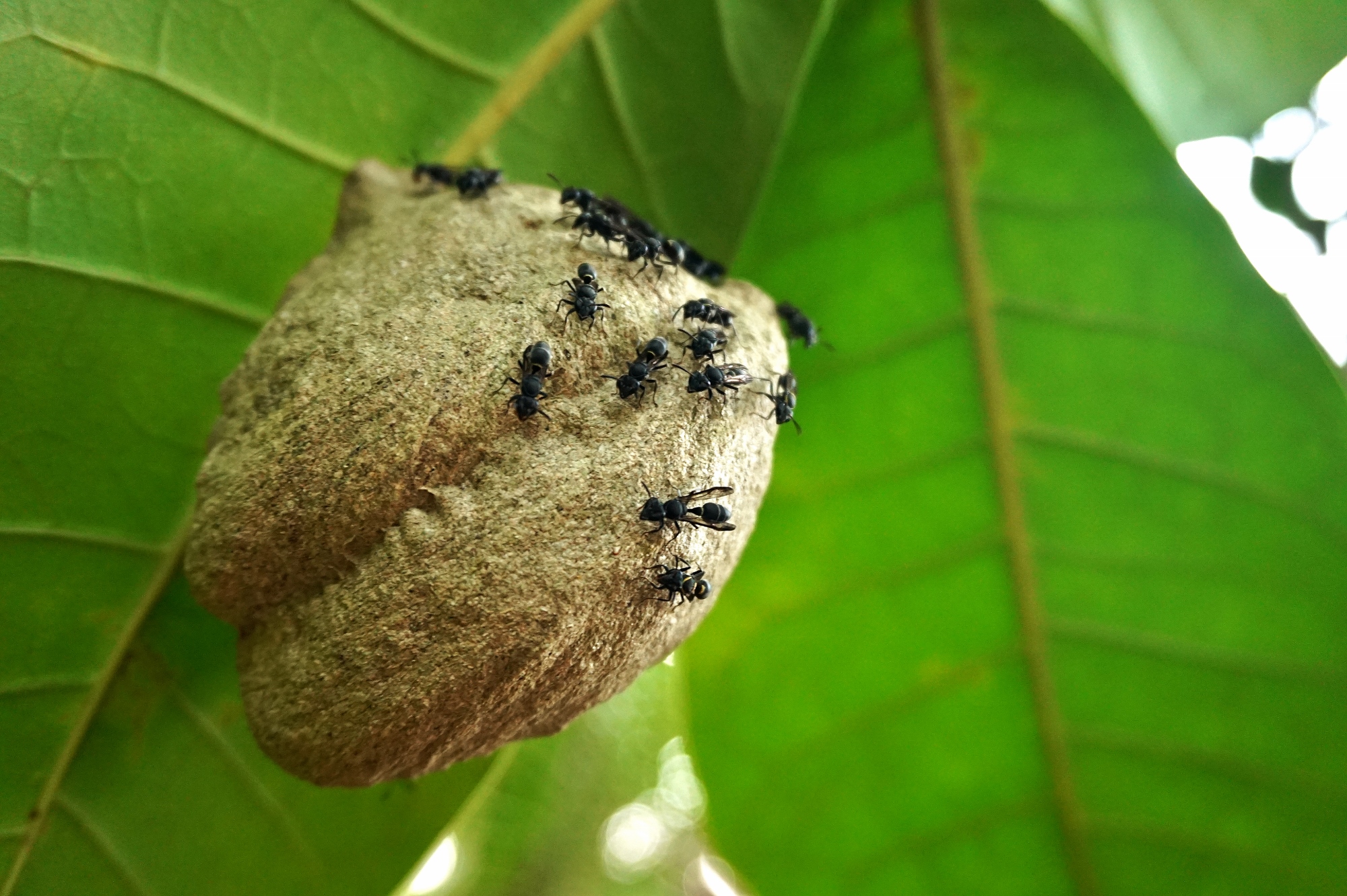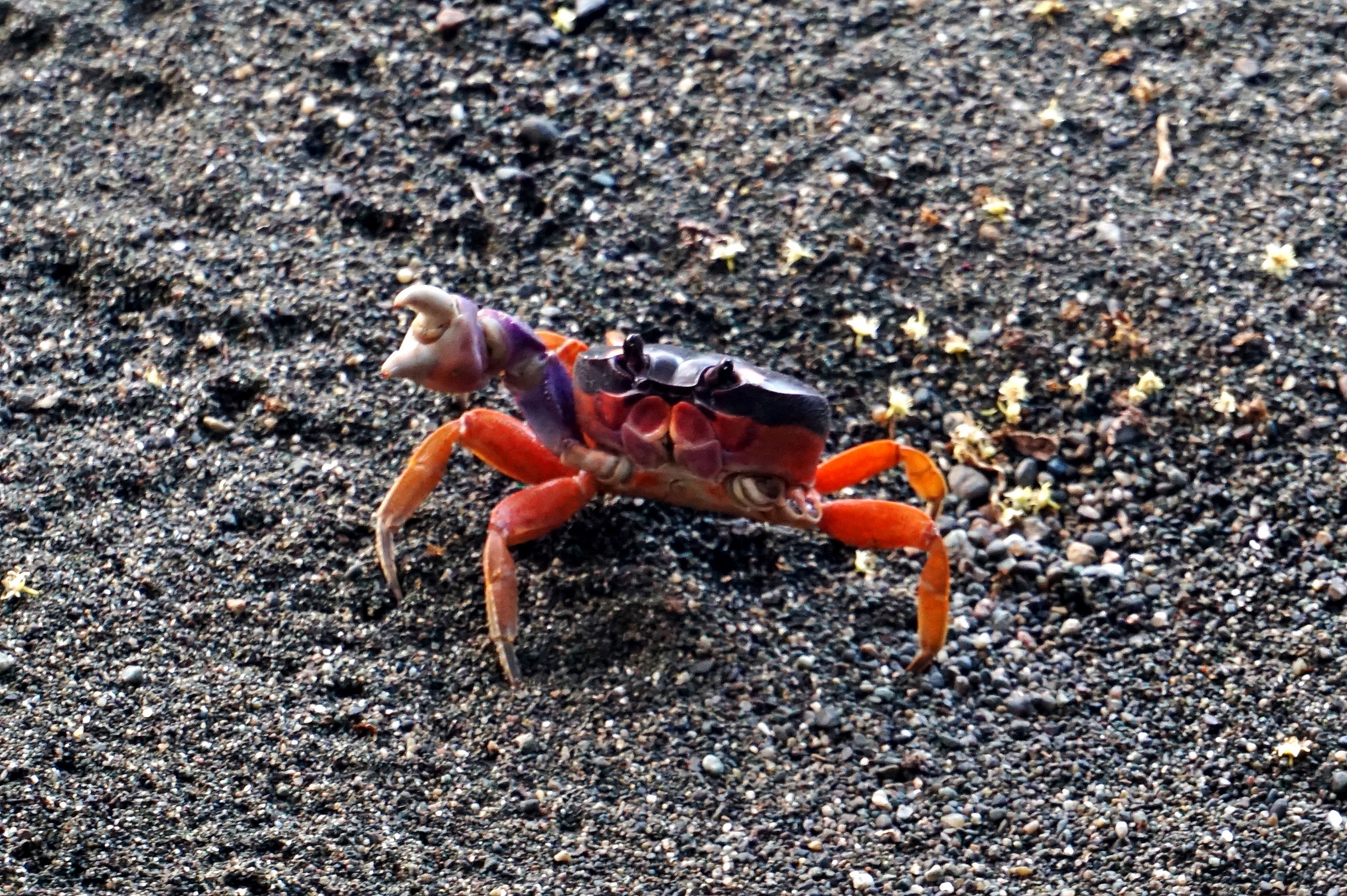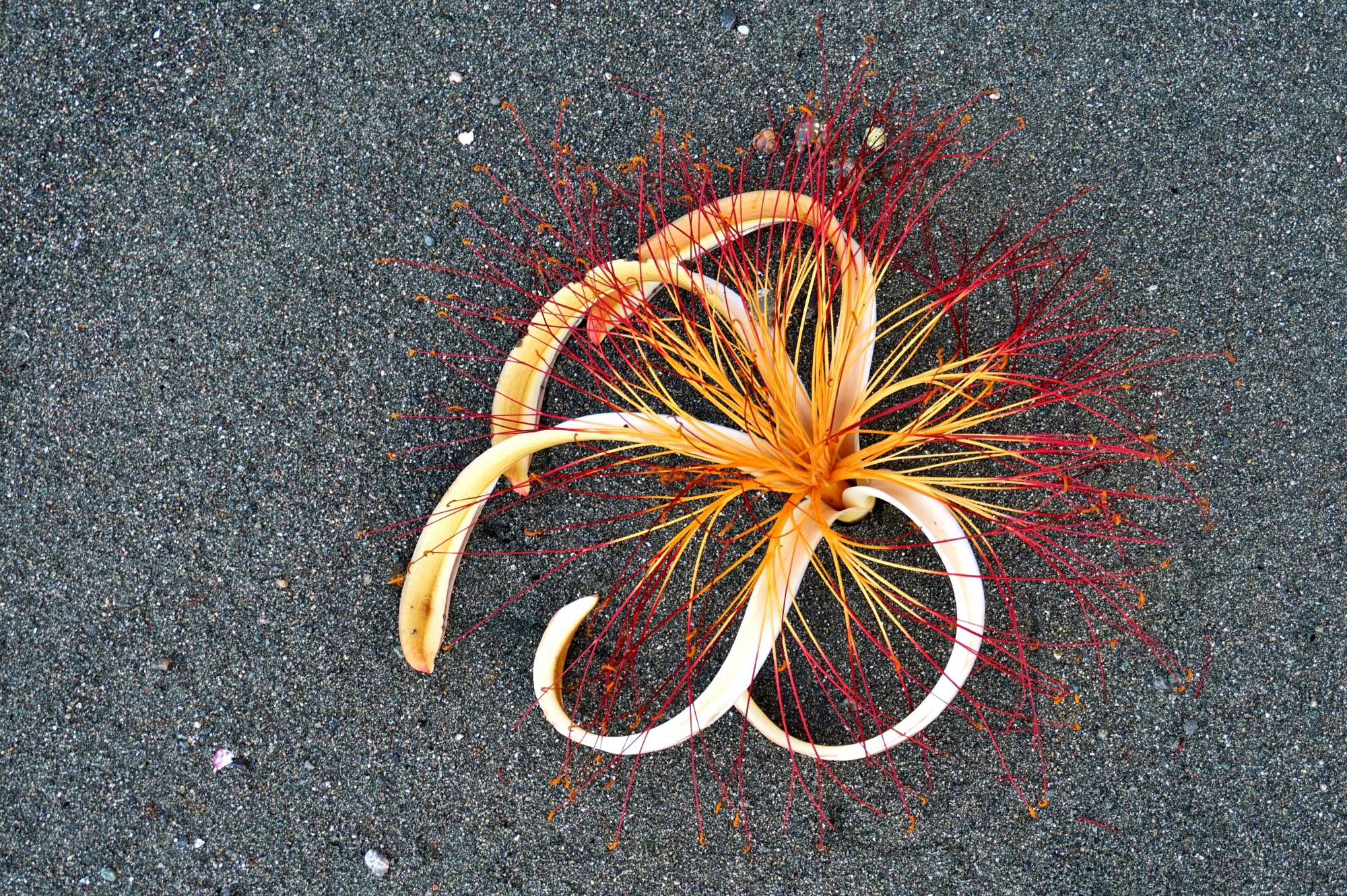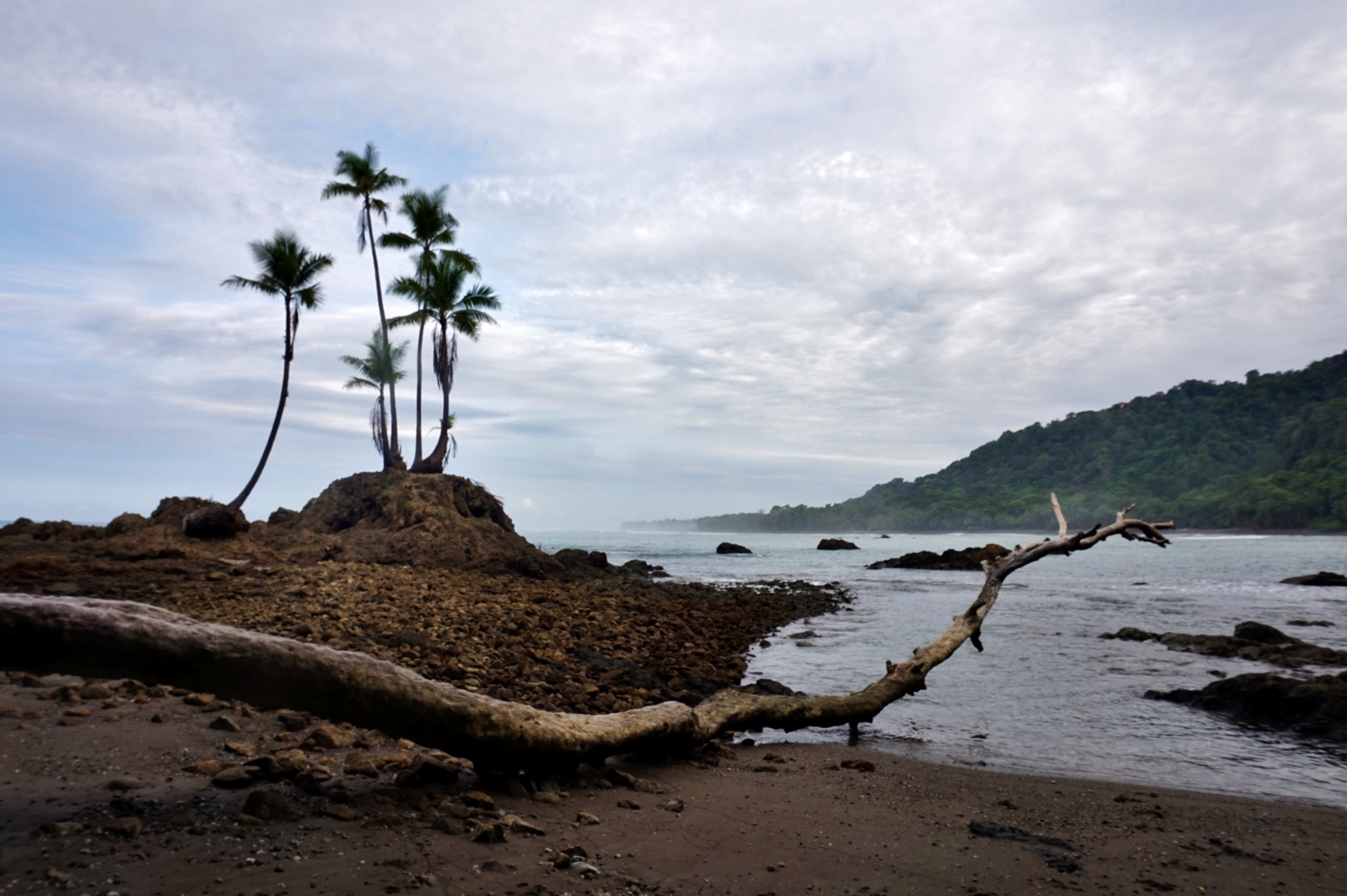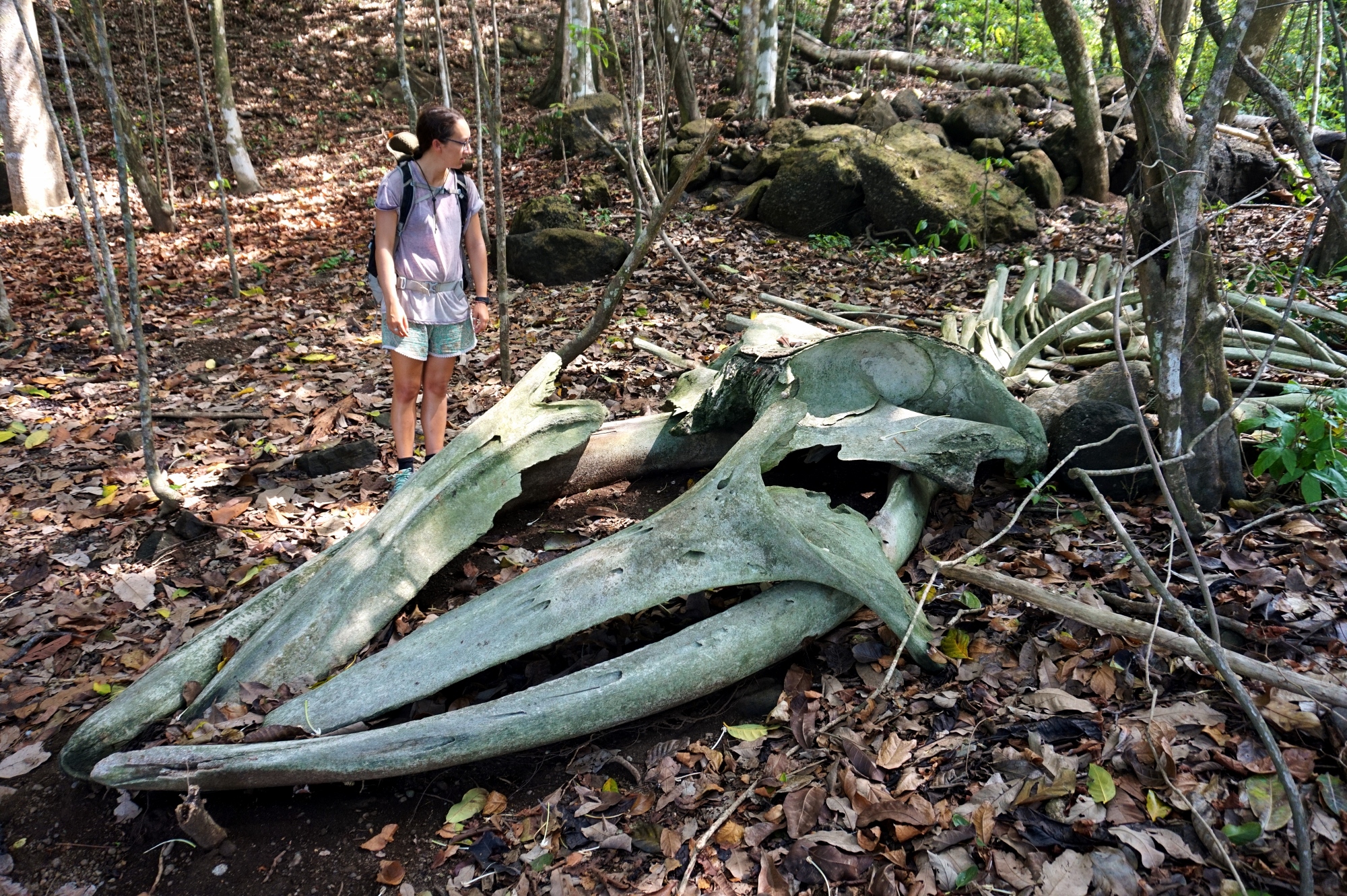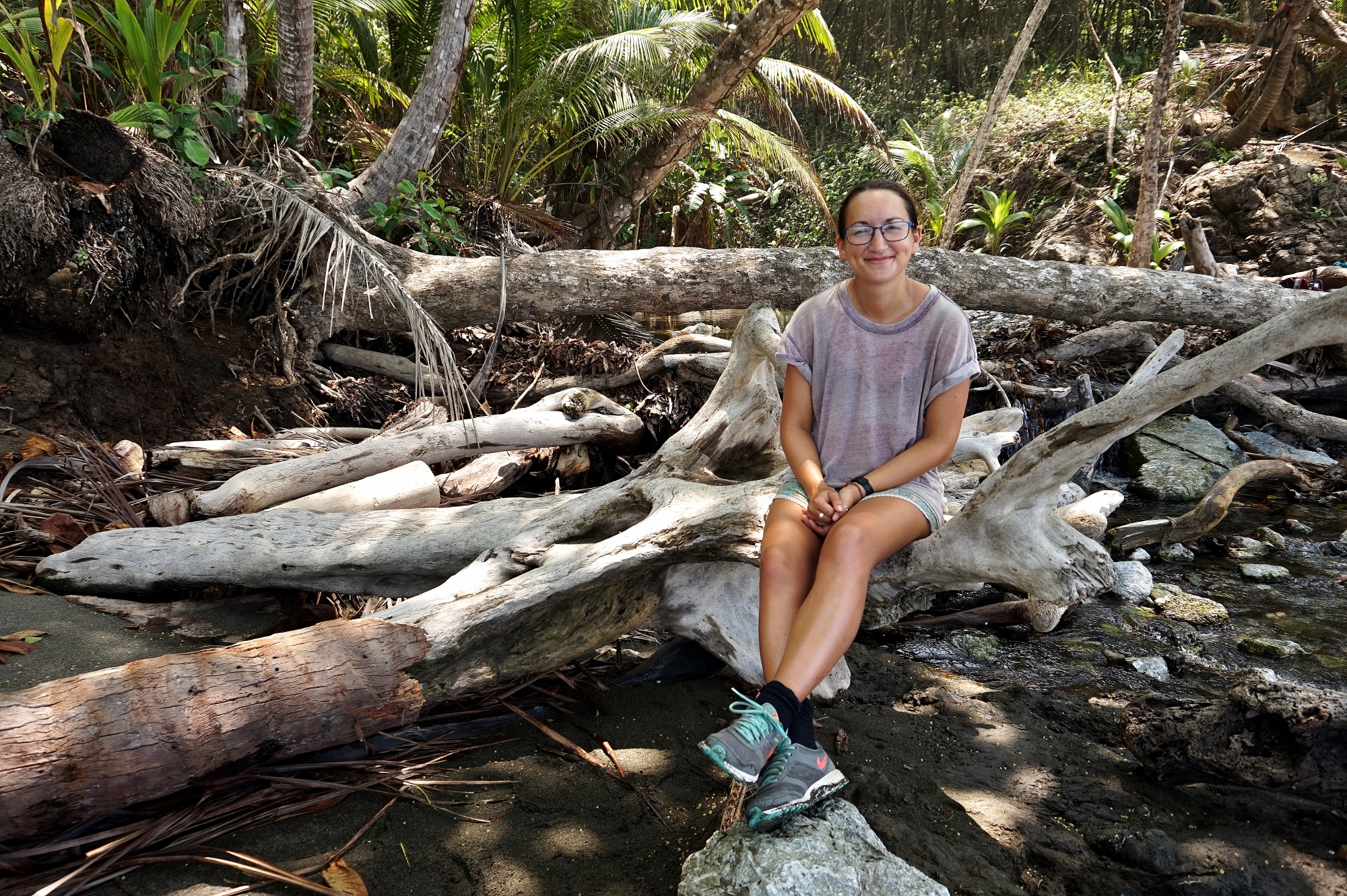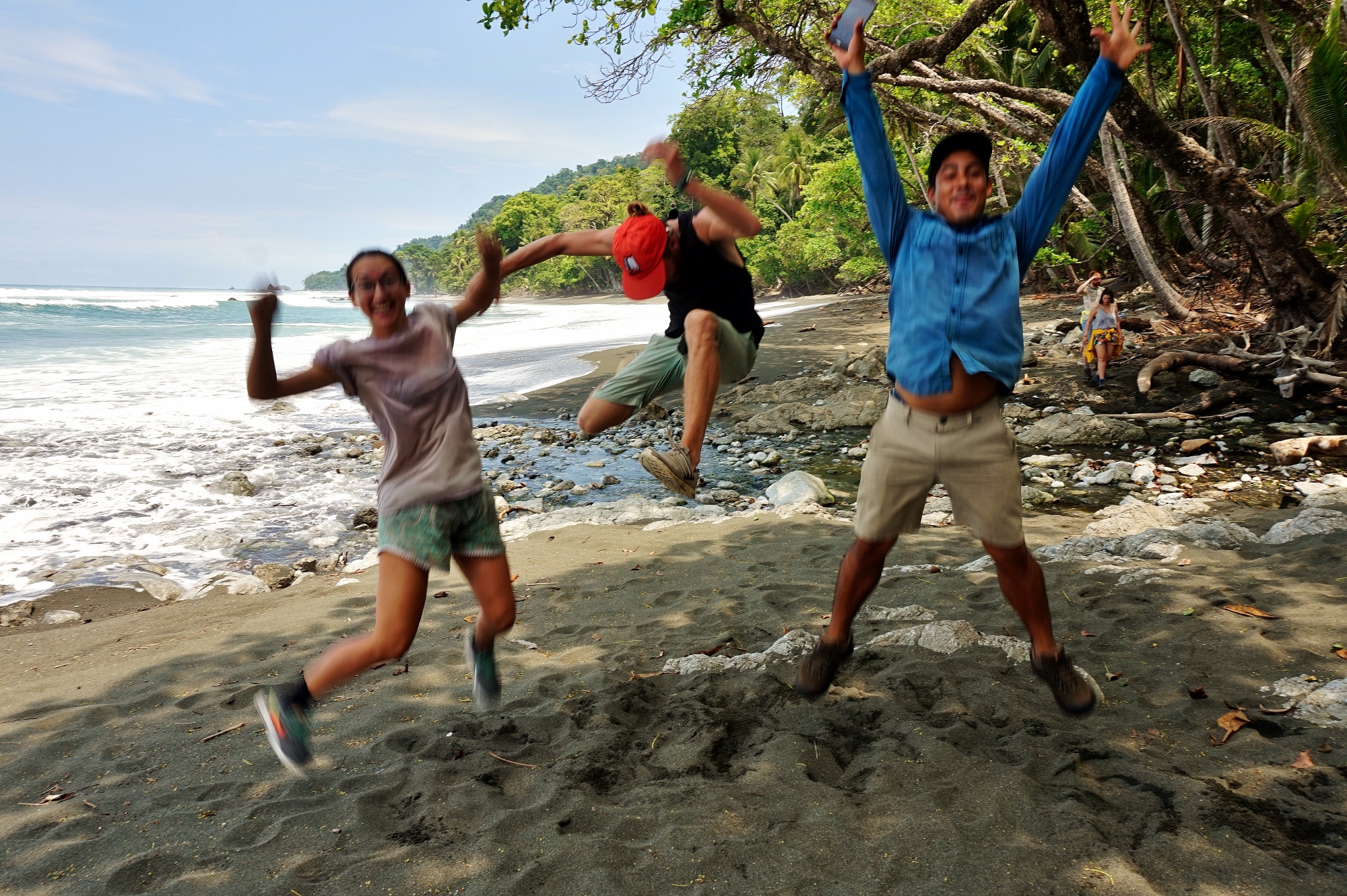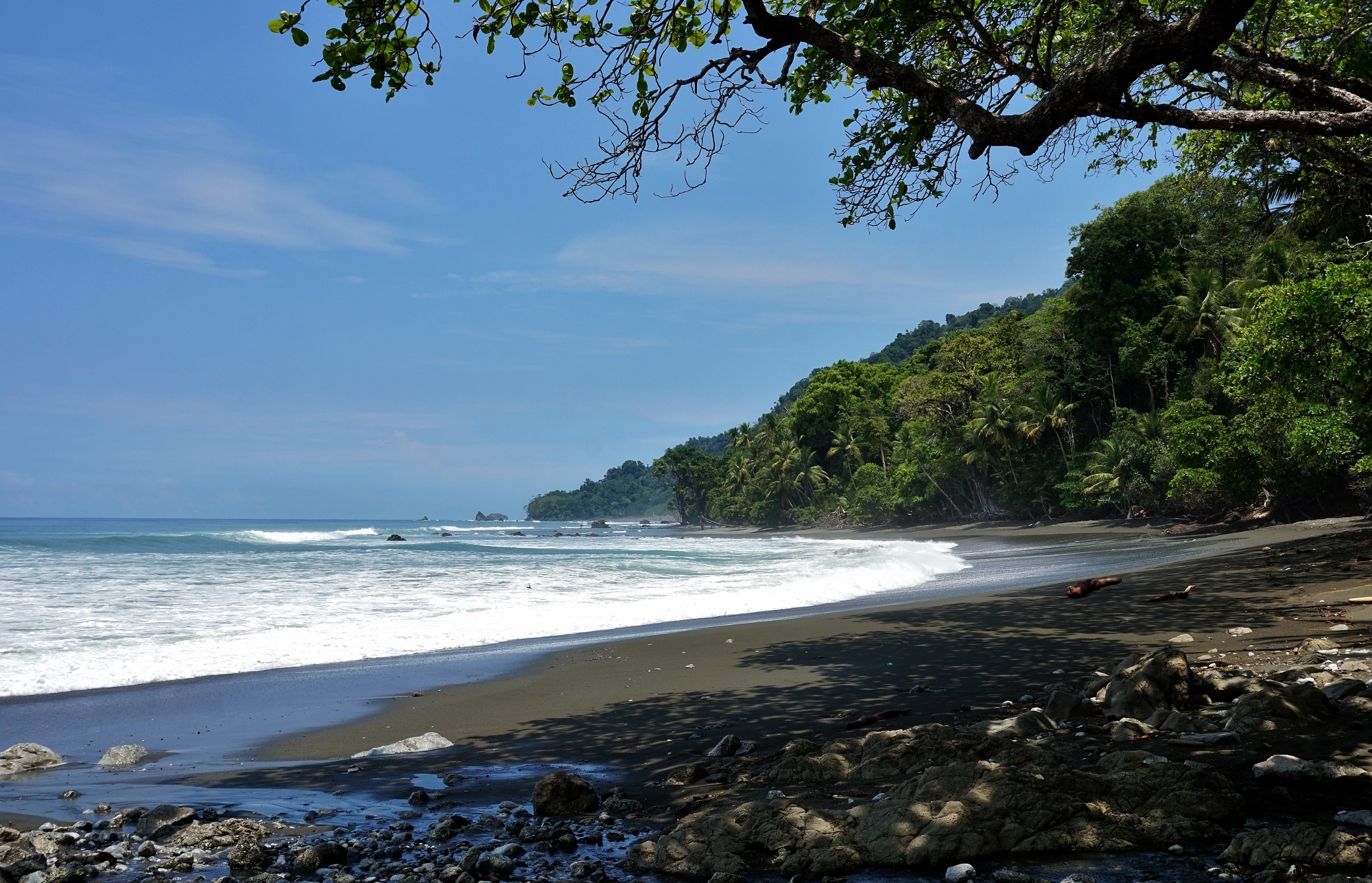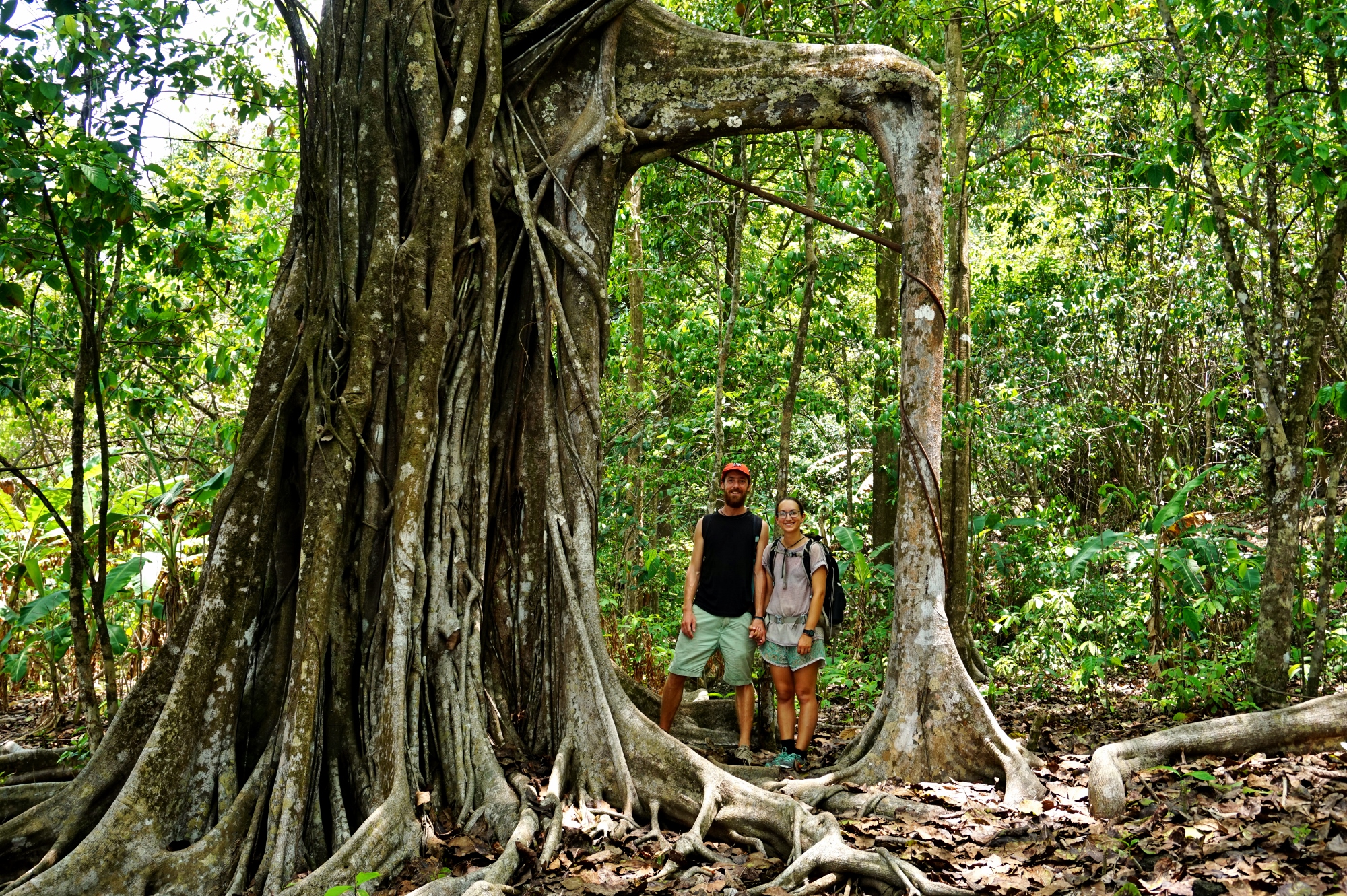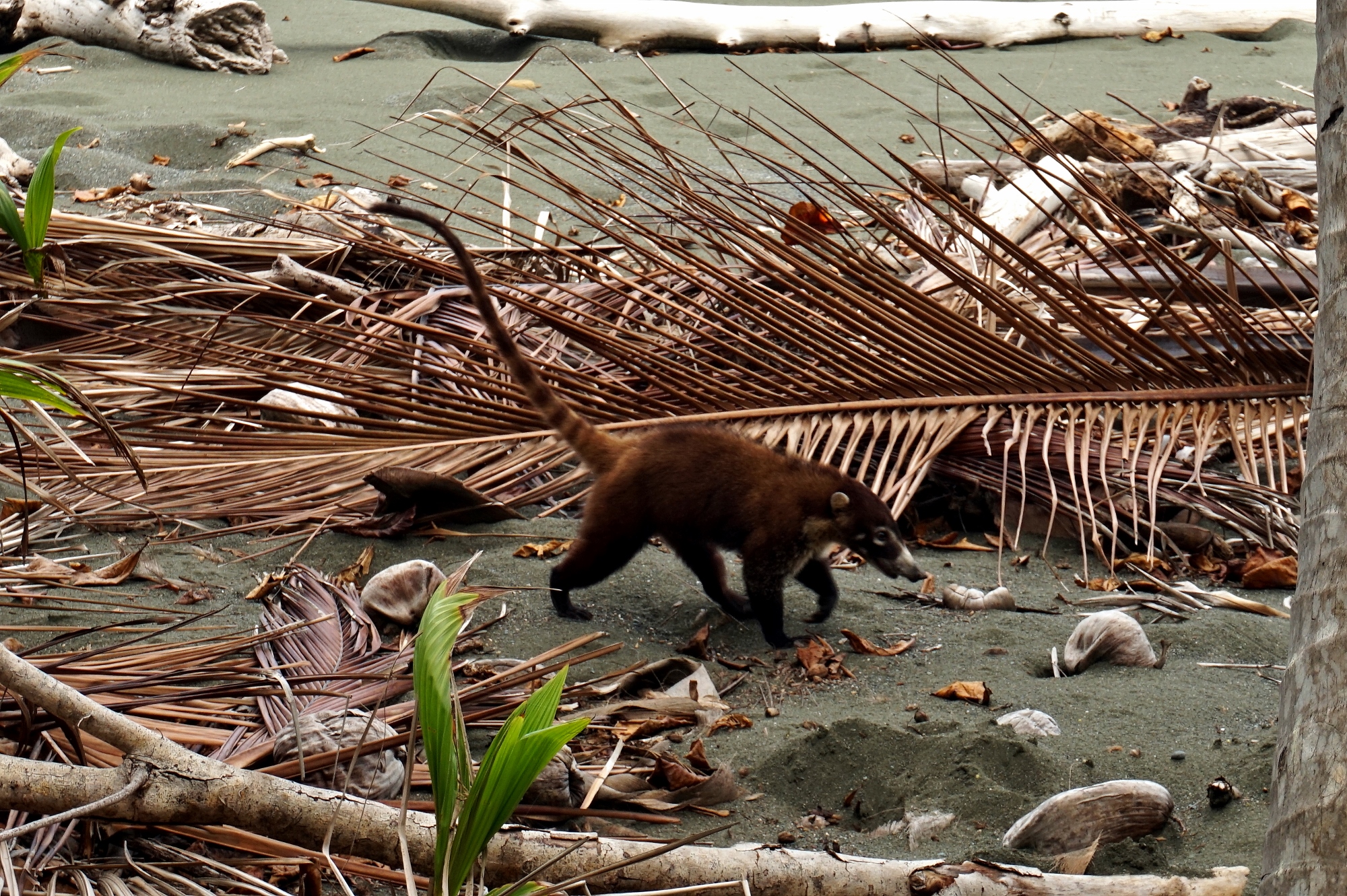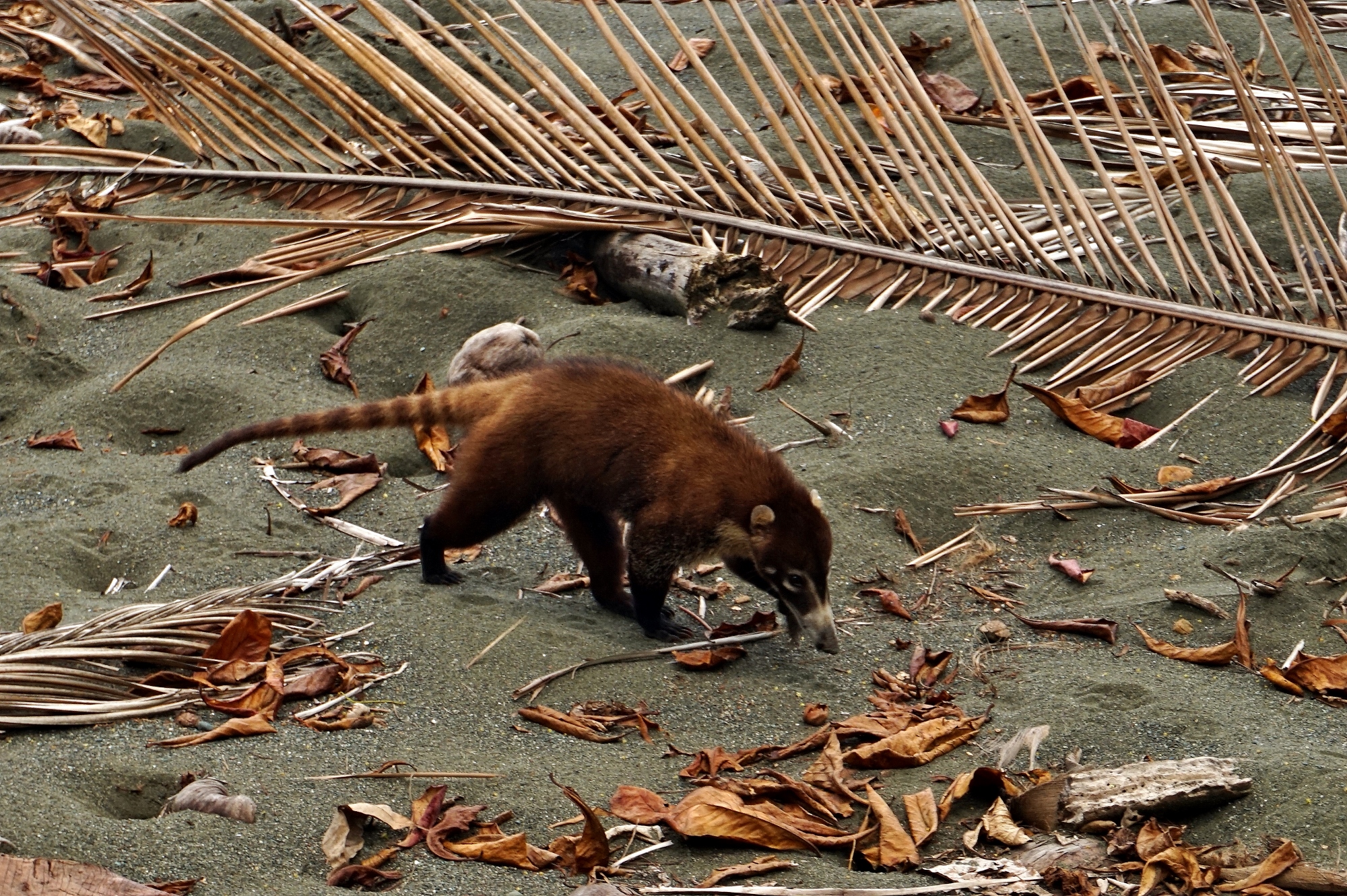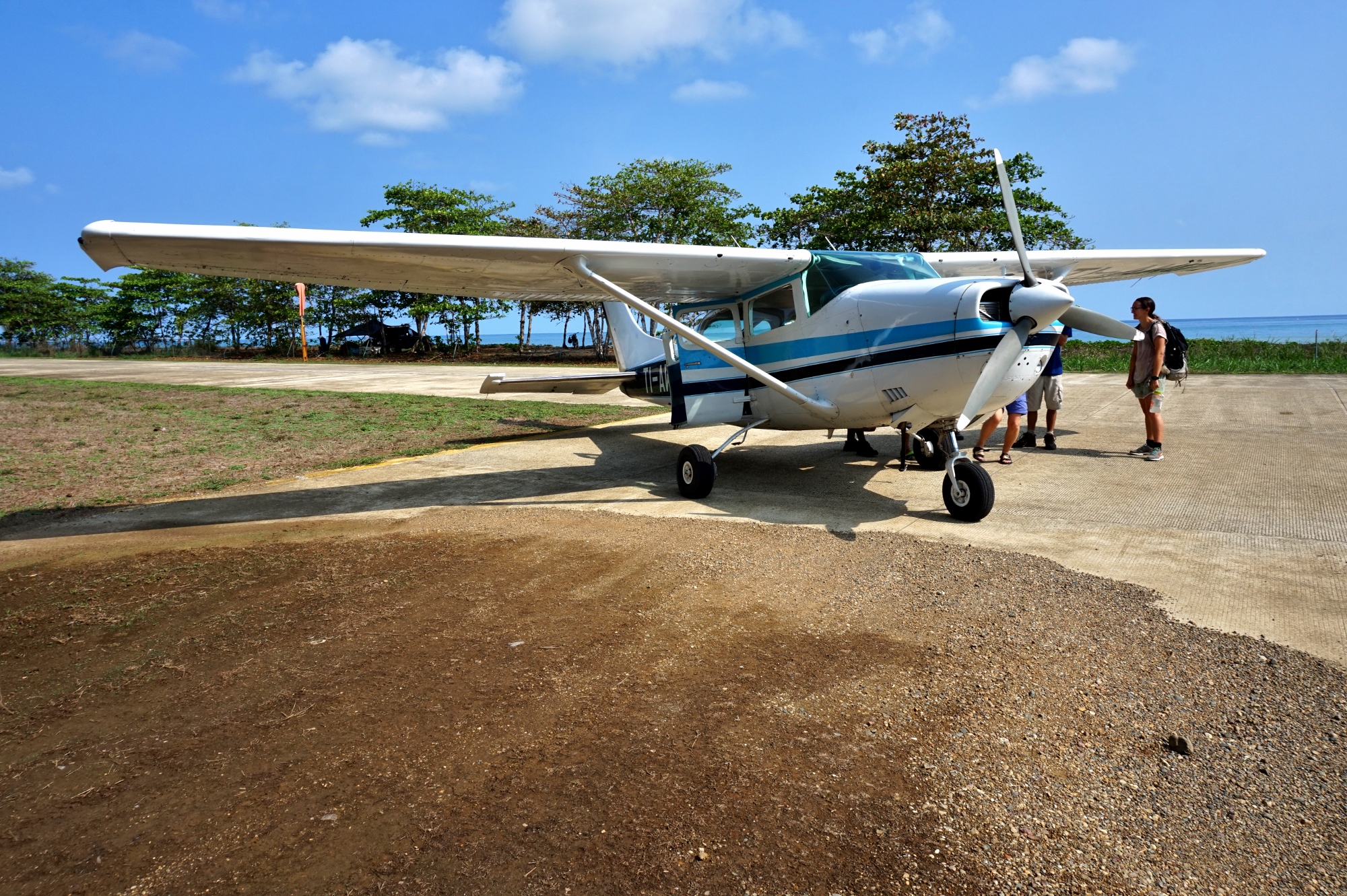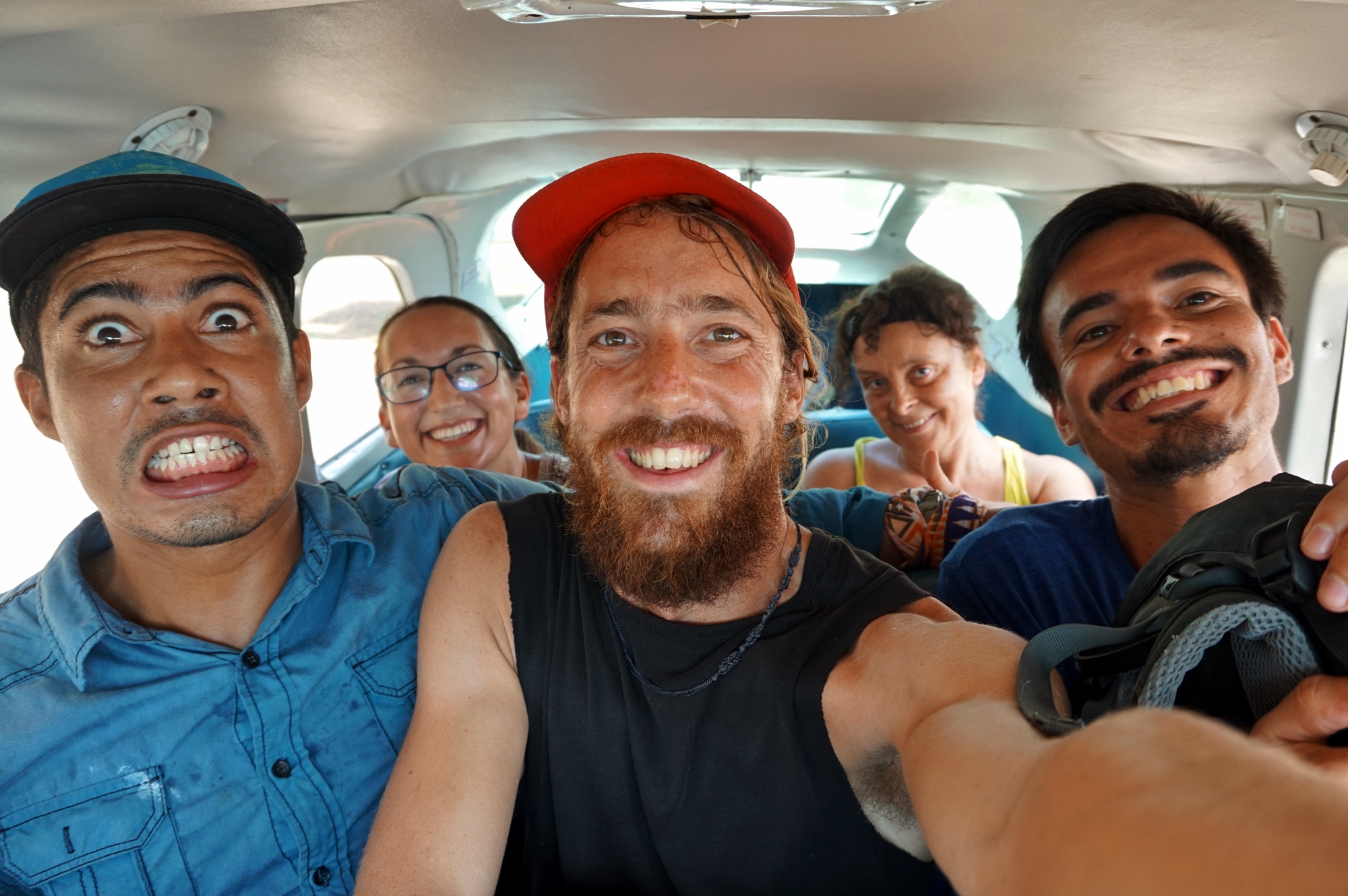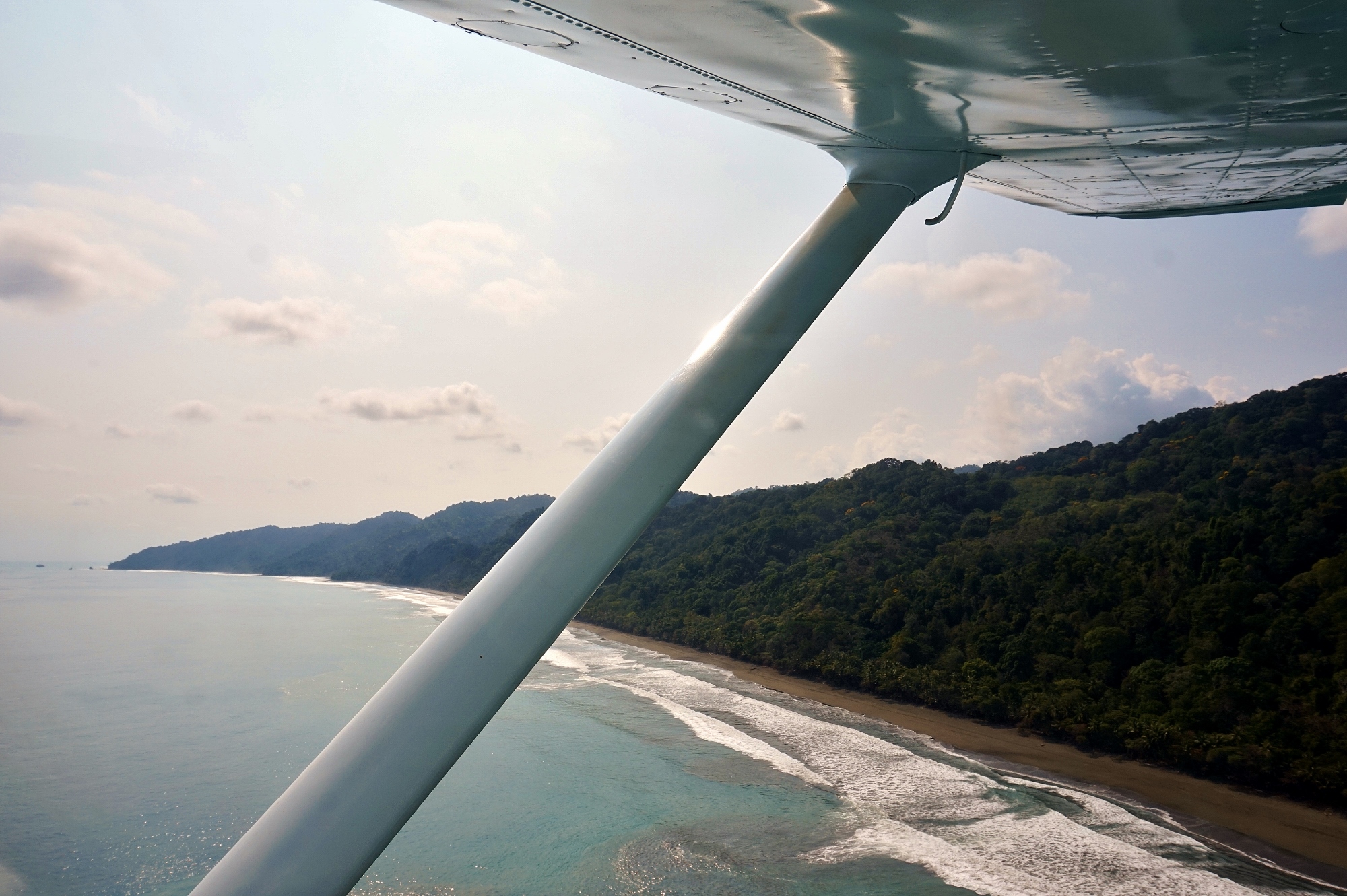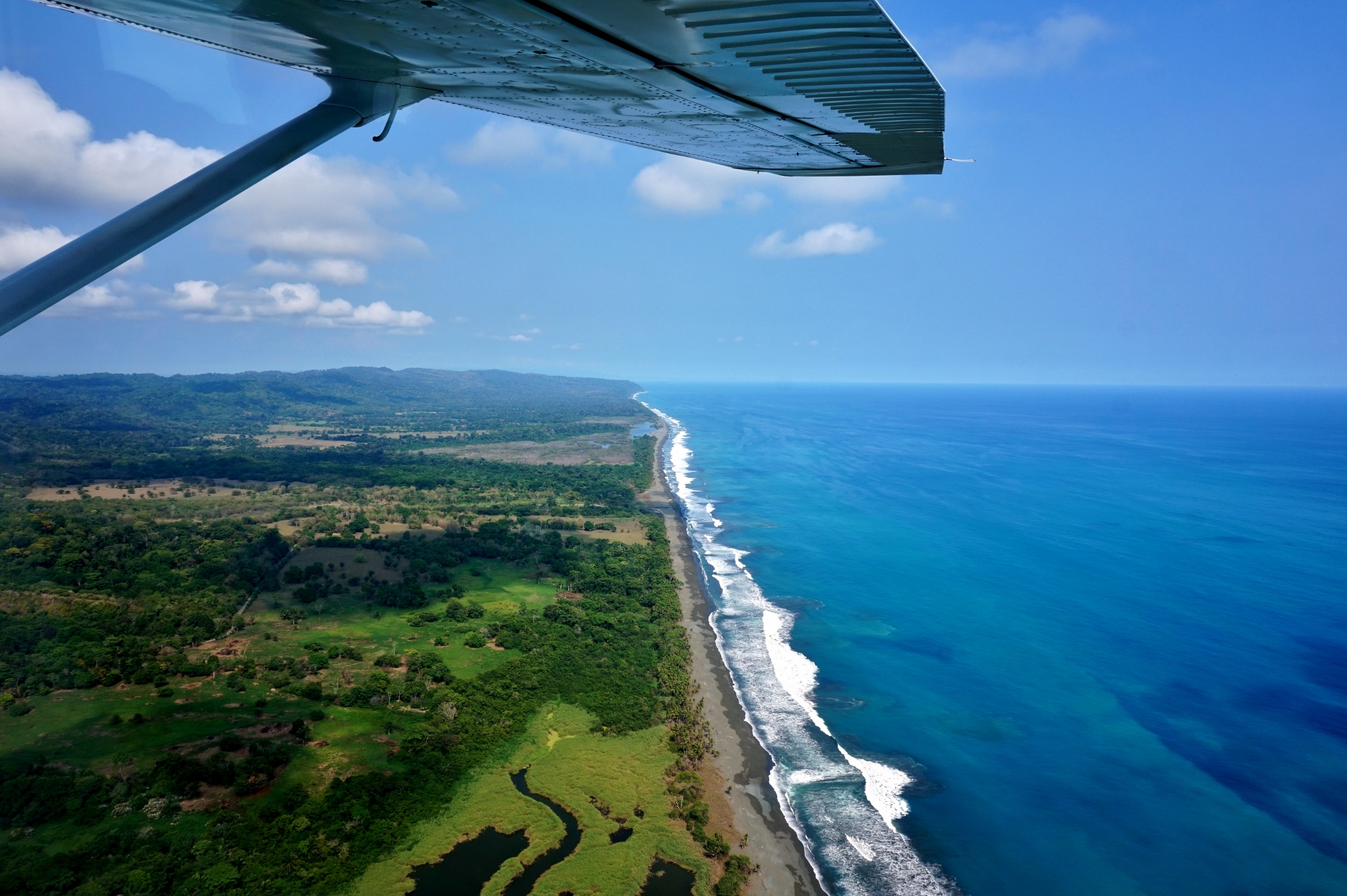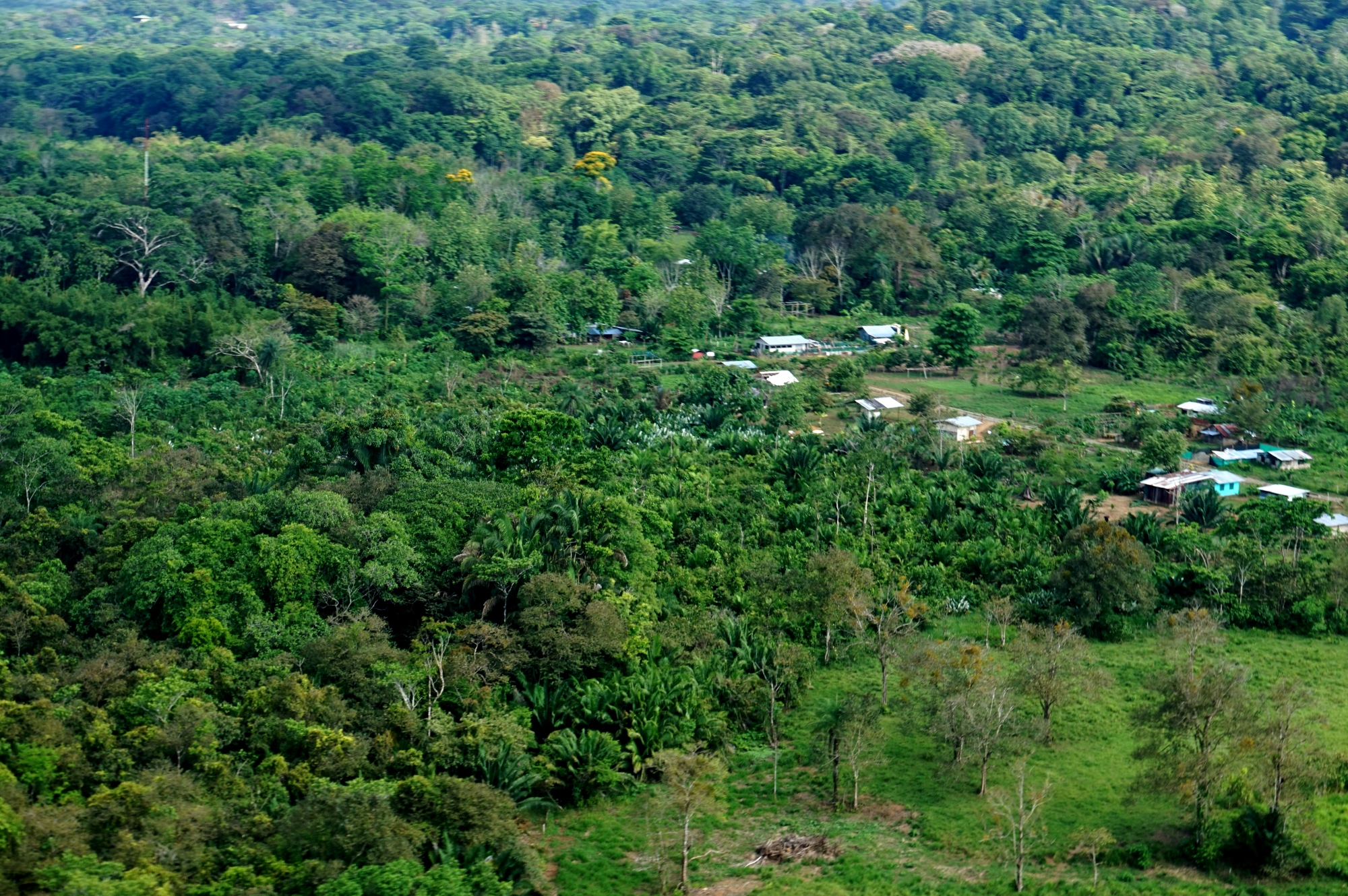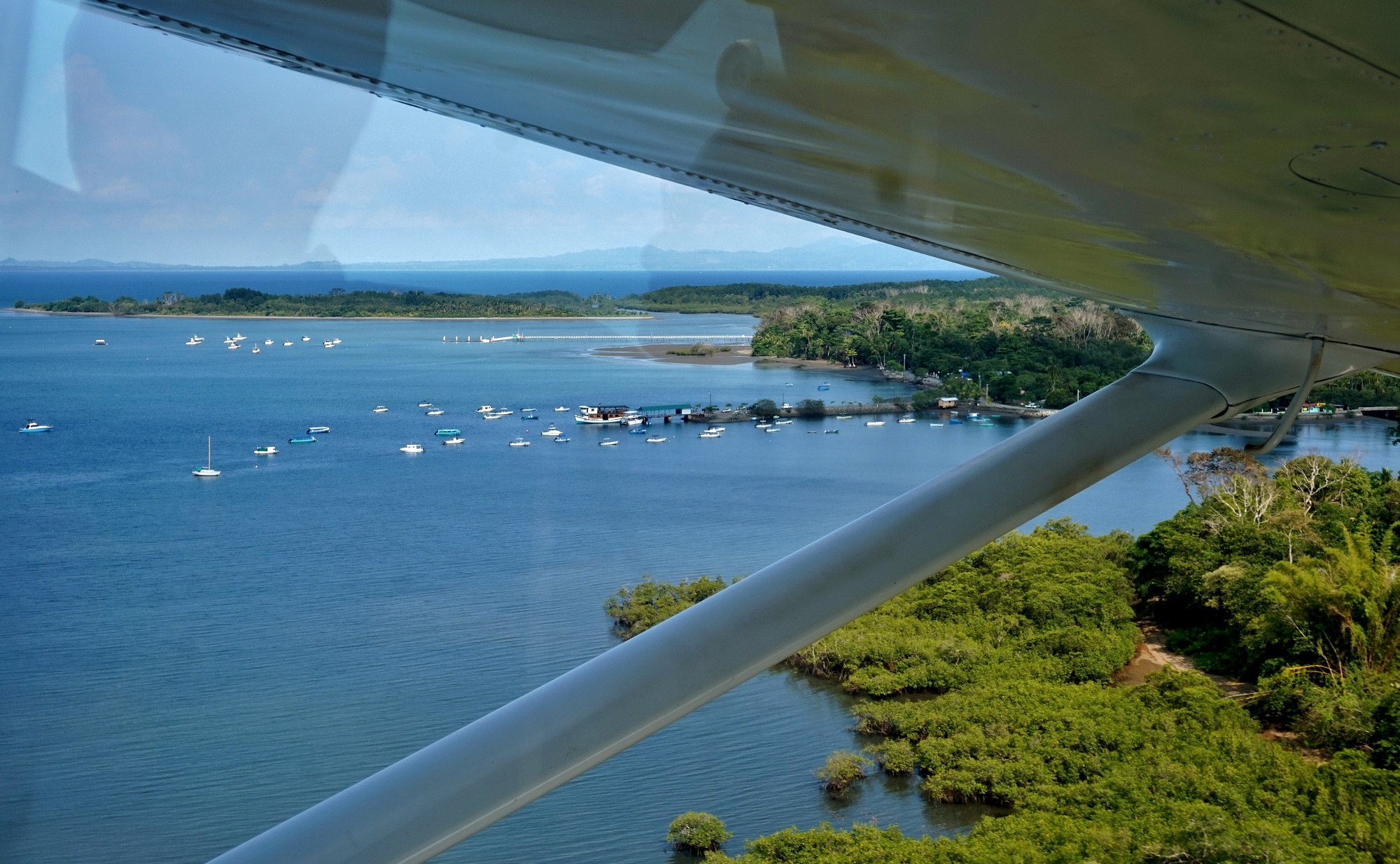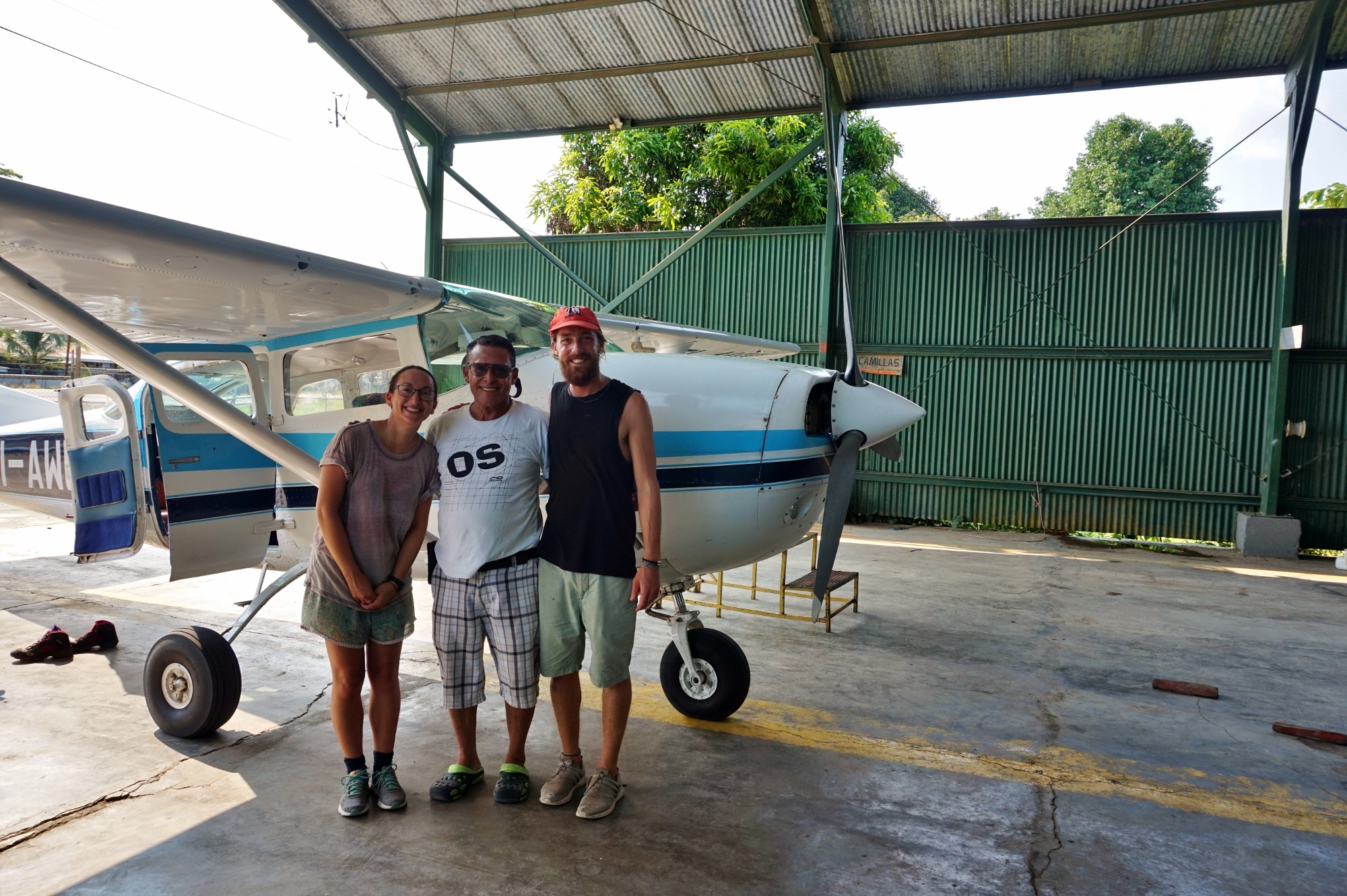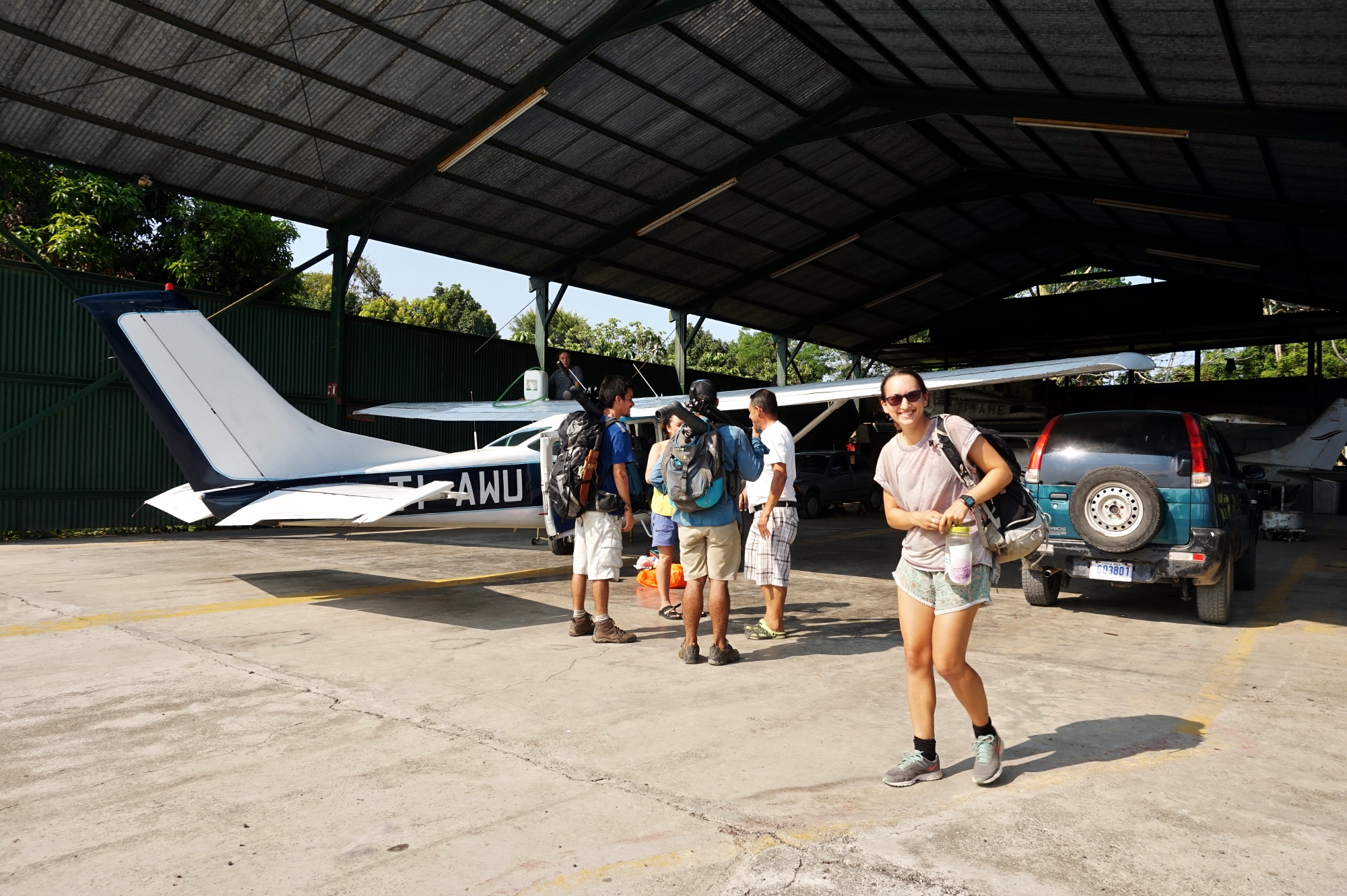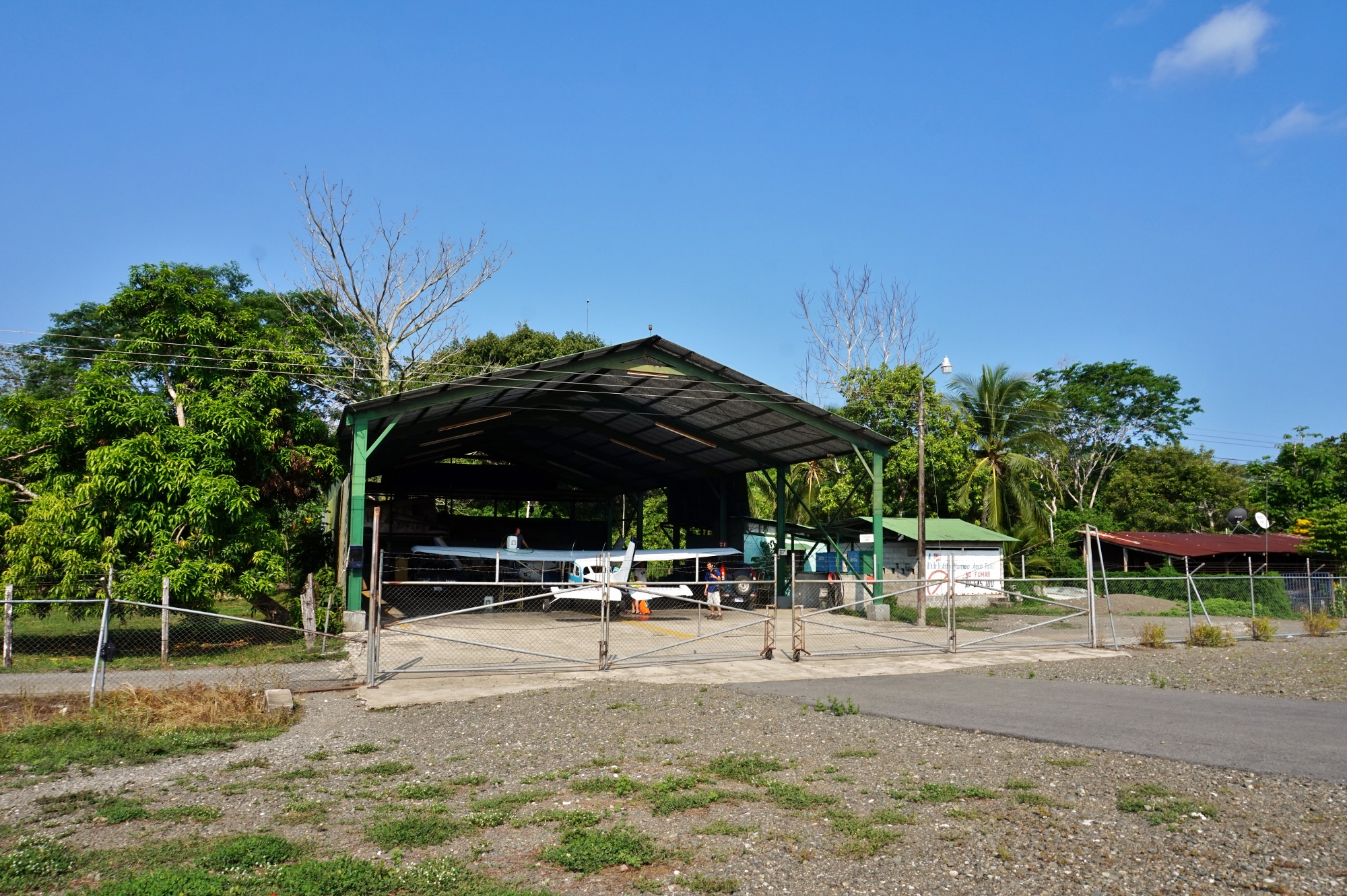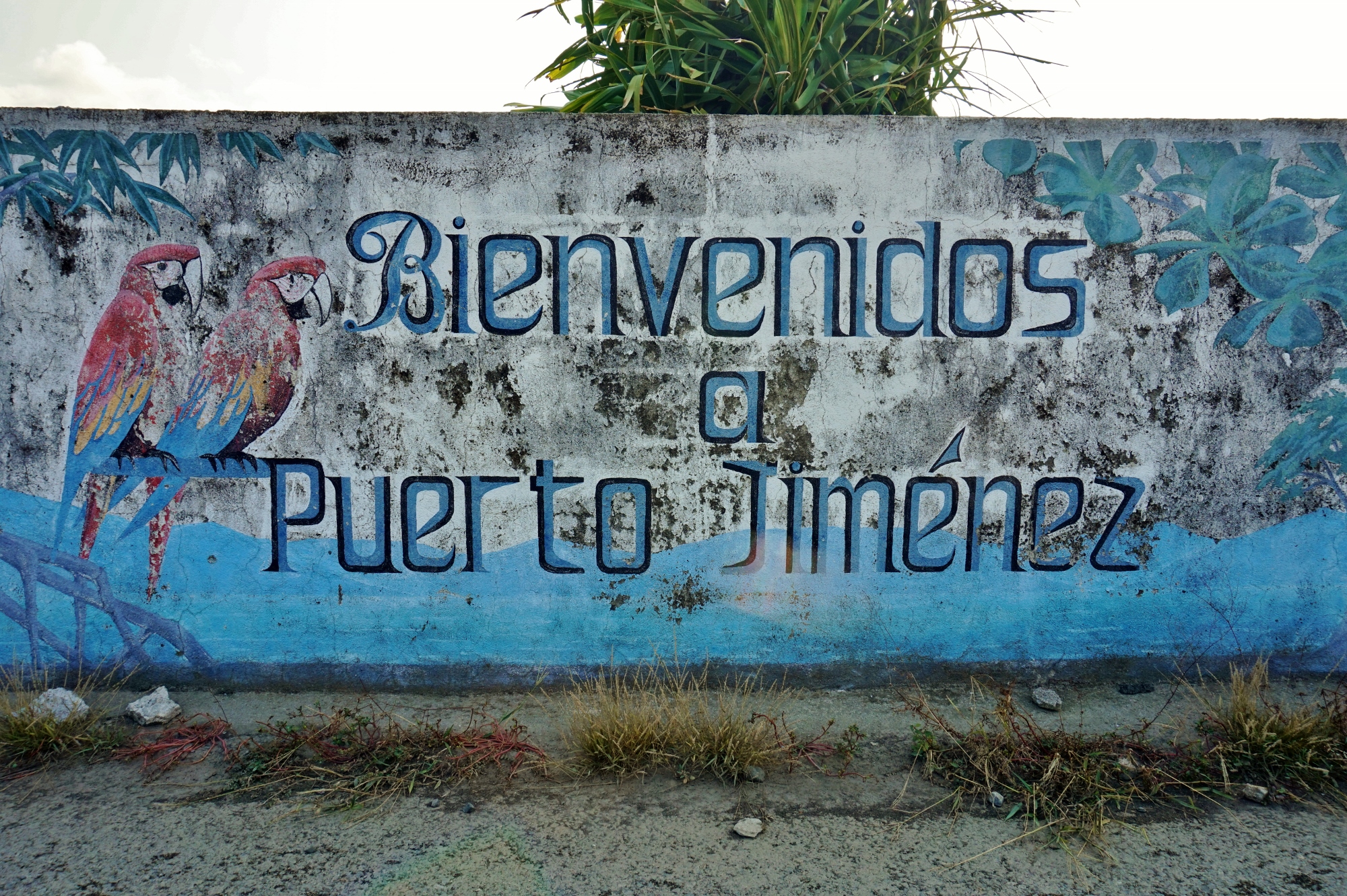CORCOVADO NATIONAL PARK

We woke up at 5.15 in Santa Catalina, Panama. 12 hours, 4 buses, 1 collectivo, 1 boat and 1 stunning sunset later, we arrived in Puerto Jimenez, Costa Rica.
We were here to visit the Corcovado National Park, on the Osa peninsular, the best place to see wildlife in Costa Rica. On the journey here we had been struck by how green the country was, there was actually a noticeable difference to the landscape we'd passed through in Panama. To book a tour we went into Jaguar Tours and we met Cristian (an eccentric looking chap with long black curly hair, dressed entirely in black, save for a white waistcoat and a long red feather he used as a map pointer). We were too late to go the following day as the park office that issues permits had literally just closed at 5.30. However this gave us a day to chill and explore the town. We booked a two day one night tour for $225 US, which was the going rate at a few tour agencies in town. This included transport, guide, bed at Sirena station and dinner, but we had to provide the rest of our food. There was nowhere online that said how much tours cost so we were a little apprehensive arriving here knowing nothing, but super happy that we could go on a tour for not tooooo much money. A few years ago they changed the rules for park entry and now everyone has to have a guide.
We checked into a room at Cabins On The Corner, where Will matched the décor.
Cristian also offered us bikes free of charge for the next day so off we peddled down a jungly gravelly track to Preciosa beach. On the way the weather turned just before we arrived at the beach and we got ABSOLUTELY SOAKED. We found shelter in a hut on the beach with his and hers chairs and waited it out a bit.
Then we got bored of waiting and ran into the sea and it was insanely warm. We only came out when the thunder and lightening started and we questioned if you could get electrocuted if lightening hit the sea. A quick Google search has concluded that it was indeed right for us to get out when we did. The storm soon passed and we laid out our wet things and ourselves to dry.
Back in town we did our prep for the next day, which mainly involve buying a shit tonne of Nutella (it's very good energy food for hiking dontcha know).
We got an early night ready for the 5am start but did have a great meal at Carolina's.
Pablo our guide met us at the Jaguar Tours office. He was a young friendly guy armed with a large tripod and telescope. We stuffed our faces with pastries (Also very good energy food for hiking dontcha know) from the bakery then piled into a 4x4.
Our transport left at 5.30am to get us to the park at 7am to start walking the 20kms to Sirena station. Immediately we saw wildlife, and in a way we've never seen before. Pablo was always quick to focus his amazing telescope on the animals, meaning we could see them exceptionally close up with amazing detail. We could even take photos on our phones through the telescope so most of these pics are shot on a phone not our camera!
Right at the beginning Pablo laid out the rules. Don't touch anything - not even trees as we walked past as there are many insects that are very good at camouflaging themselves and very good at biting you, even some of the trees bite. There were a couple of river crossings on the way, so off come the shoes and socks.
Throughout the two days we saw three types of monkey including our old friend the howler. Except this time we could see his face and hands and tail in great detail. He has a big bushy tail from which he was hanging from a tree, leaving his dark black leathery hands free to grab food.
Here's the spider monkey hanging out.
This little guy likes to hang out on passion fruits. Look at his amazing back legs!!
The golden orb spider was incredible, not just for its size and colourings but also the super strong webs they spin. Will gave one a gentle tug and it held firm and pinged back when he let go. The male is comically sized compared with the female; it must have been only a tenth of her size.
A guide up in front had spotted a tayra and all the guides were very excited as they are rarely sighted. It looked like a large weasel/cat like creature. I didn't see it too well but you can see him on this video.
This bird is a gartered trogon and had amazing black and white striped feathers in his tail, a vivid yellow belly, and gorgeous turquoise feathers on his back and head. We watched him through the telescope for a long time.
We loved the coati. They walk along with their tails pointing straight up in the air. Their eyesight isn't very good but they have sensors in their tails to tell when a predator is near. We saw quite a few over the two days.
A rustling sound revealed an anteater was climbing a tree close by. He looked like he was wearing a little black waistcoat. He has claws that enable him to carefully climb to get to the termite nests high up. They have no teeth, only sticky long tongues to reach into nests and catch lots of tasty termites. He has to be fast though as the termite community react quickly to the invasion and send out their army to sting and bite his tongue.
We saw a few pairs of scarlet macaws. They are such beautiful colourful birds and it's so lovely that they mate for life. Whenever you see one, you know it's mate can't be too far away.
The route took us through rainforest, and at times onto the beach. One beach was nicknamed "get out if you can" as it was hellish walking over sand in the heat of the day on a beach that seemed to go on for ever. The beaches were fantastically remote and windswept. We felt like the only humans to have ever walked there. Until we saw the footprints of a group up ahead as well as the footprints of a giant tapir. A couple of big landslides had occurred during the rainy season, our pace quickened here as we took in the destruction.
On the beach there were gazillions of hermit crabs in shells of all shapes and sizes. They were going absolutely crazy over a coconut, and were crawling over each other to get to the tasty snack. When you got too close to one they tucked back into their shell which was hilarious if they were on the slope or a rock as they lost all their grip and rolled down to the bottom. It was a little like grandmas footsteps, but the crab was always the loser.
I absolutely loved the new palm trees growing on the forest floor, emerging out of coconut shells.
That evening we arrived at Sirena at 5pm, completely shattered but completely content at all we'd seen that day. The lodge was really great, the bunk room was open sided complete with mosquito nets on every bed, there were showers, and best of all, dinner was being cooked for us. The only down side was that a can of coke was five dollars. Five fucking dollars!!!
Dinner was delicious. I guess this was helped by how far we'd walked that day. We had rice, beans, veg, meat and mash. And pudding. Pablo ate with us and he introduced us to his older brother who was one of the head rangers at the station. We slept exceptionally well, soothed to sleep by the sounds of the jungle. Just before bed we saw a Toucan in a tree pretty far away, but with the telescope we could just about see his unmistakeable silhouette.
We were awoken at 4am, not by out alarm, not by the annoying glare of other people's head torches, but by the unmistakeable sounds of the howler monkeys. We shook ourselves awake, and tentatively took a few steps but our feet seemed alright even after the pummelling they took yesterday.
We were out just after 4.30 and immediately spotted a Baird's tapir. They are super weird looking, with a long dangly nose. They are endangered, indeed five species of tapir are already extinct, and now there are four species left. We didn't manage to snap a picture in the dark, but here's what they look like.
Straight after seeing the tapir, we spotted a big group of pecarry's, pig type animals snuffling around in the undergrowth. There must have been at least six of them. We could see them only by torch light but we could definitely make out their stocky bodies. Luckily it was the collared pecarry, as the other kind can charge you if they feel threatened, and the advice is to climb a tree as quickly as possible to escape them!
We crossed a river that seemed higher than the day before. You must pay attention to tide times on this trek, as the sea comes all the way up the beach at high tide and can catch you off guard.
Later on in the day we observed several capuchin monkeys very close up on a banana tree. We could clearly see them peeling the bananas (still attached to the bunch on the tree) and eating them. One silly monkey dropped his whilst another ate hers with a baby on her back.
Another ant eater sauntered past us, and didn't give two shits that we were there. I guess he was just so focused on finding those tasty ants that a few humans on the path was not his main concern. Yesterday we'd seen one climb a tree but this guy was all about the floor ants.
Talking of floor ants, we've seen it many times in South America, ant highways carrying pieces of leaf back to the nest. Here we actually got to ask Pablo what the hell was going on. He explained that these ants take the leaves, and mix them with saliva and faeces to feed a fungus that then excretes a liquid that the ants eat. We also saw workers building new ventilation tunnels, each ant rolling a tiny piece of earth out of the tunnel and depositing it on a pile. The ants nest was huge, it took up at least 4m squared in the floor and god knows how far underground. These processes were taking places in all the different openings to the nest.
We stumbled across it on our hunt for the orange and black dart frog, endemic to this region of Costa Rica. It's called a dart frog as they were used by indigenous peoples to poison the tips of blow darts to hunt their food. We also saw a green and black poisonous dart frog.
Walking back along the beach we encountered a crab with only one claw, who put it up in the air, ready to fight, when we got too close. We also saw the giant skeleton of a whale who became beached 3 years ago here and sadly died.
All too soon we were near the end of the hike.
Near the end of our hike we heard a rustling in the canopy near by. We quickly realised this wasn't an animal as a giant tree started to creak, crack, then with a thunderous thud, slammed down onto the jungle floor literally ten foot away from where we were just walking. A bit too close for comfort.
However we can definitely answer the question 'if a tree falls in a forest does it make a sound?' Yes. A bloody loud one is the answer!
We arrived back at Carate at 2pm and the collectivo taxi wasn't due until 4pm. Pablo was pretty keen to get home sooner as he had stuff to do. A tiny plane landed on the airstrip next to the coconut stand we were all sat at. Pablo grabbed his bag and telescope and said "I'm guna ask the pilot if he'll give me a lift". This sounded utterly ridiculous to us, but we shouted back "ask if we can come too". A few minutes went by and then Pablo re-emerged, saying we could go for $15 each. This seemed like a bargain to get back to town before 3pm, instead of by 6pm in the rickety collectivo truck we were waiting for. If we thought the plane from Puerto Obaldia was small, this was minuscule. It held only five passengers (although for this flight it held six, Will was squeezed into the middle row. Considering the pilot insisted the two female passengers take the back row for weight reasons, this seemed a little odd that he was then fine with overloading the plane with an extra person, one sixth more than the plane should hold, but whatever). We flew over the rest of the National Park and could comprehend what a teeny tiny section we had seen in the last two days. We arched over the little harbour we had arrived in a few days before and in no time we were back in the town, drinking beers and telling Cristian all about our adventure. What a great end to an amazing time in the jungle.
Next stop is Dominical, my final stop in Costa Rica and indeed my final stop on this two year round the world odyssey. I hope it lives up to the hype!

